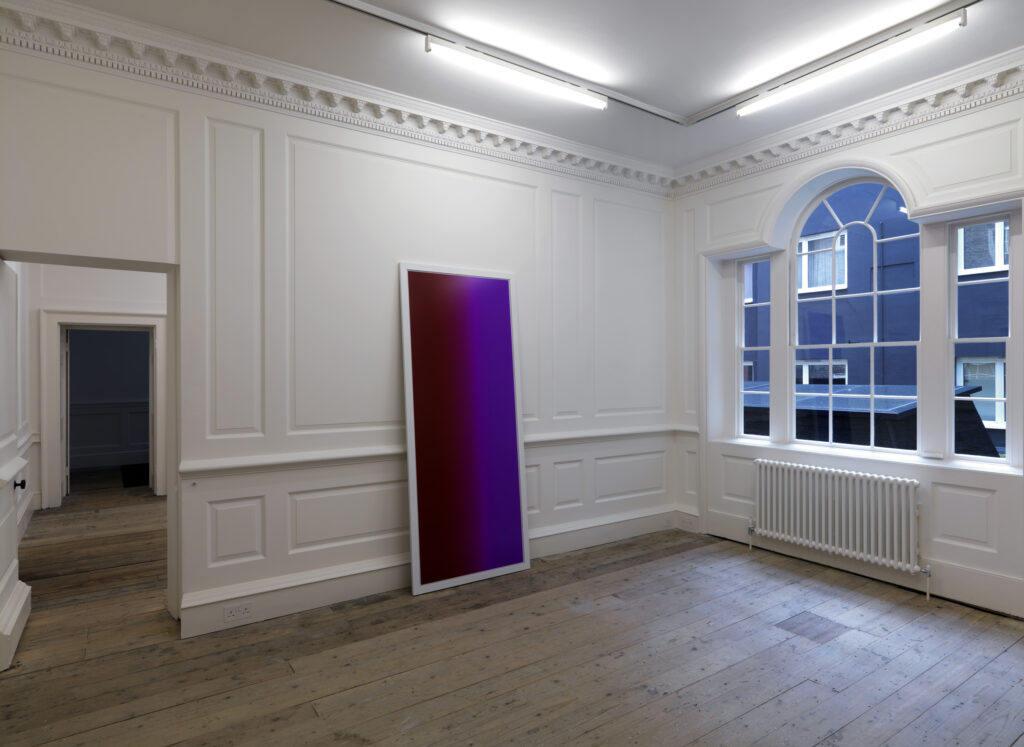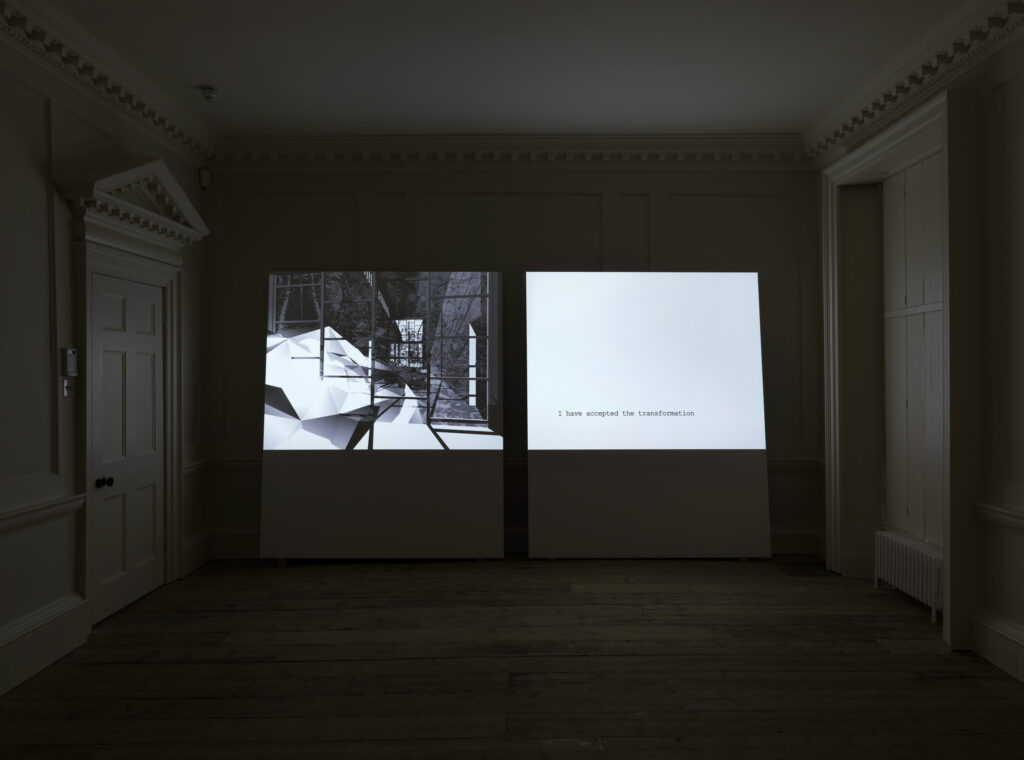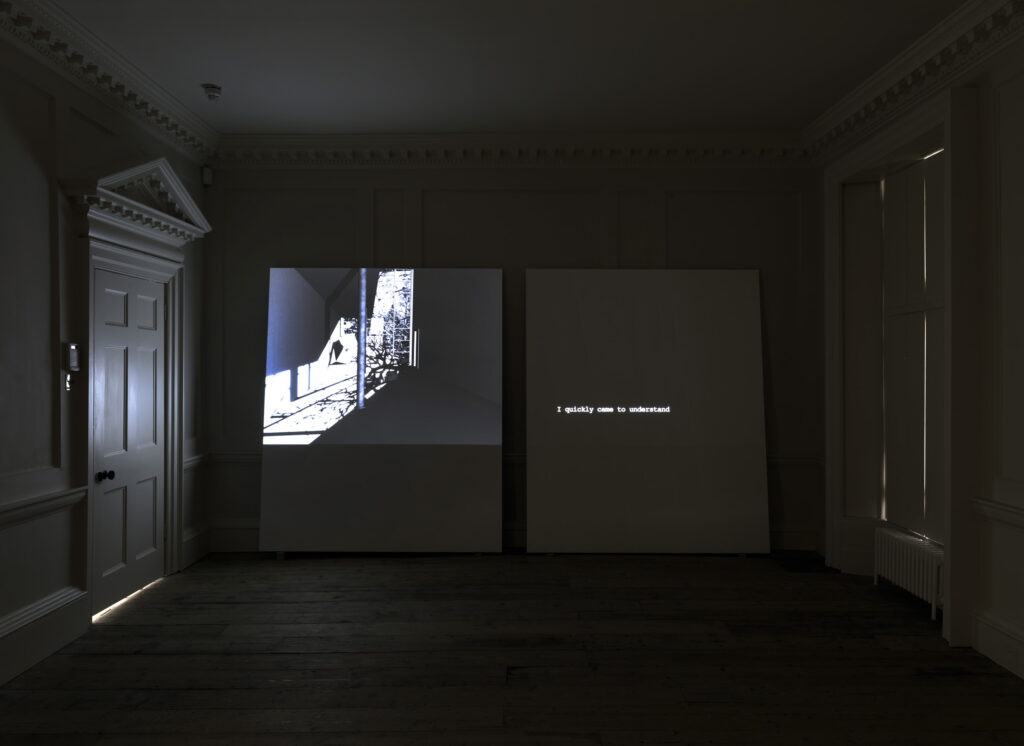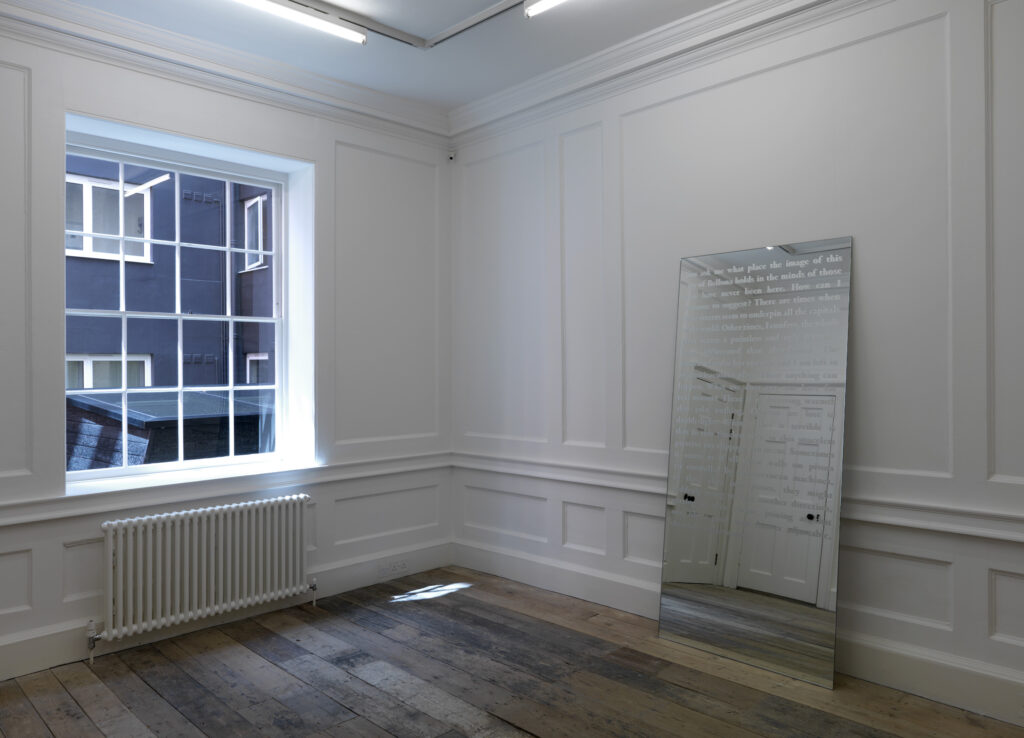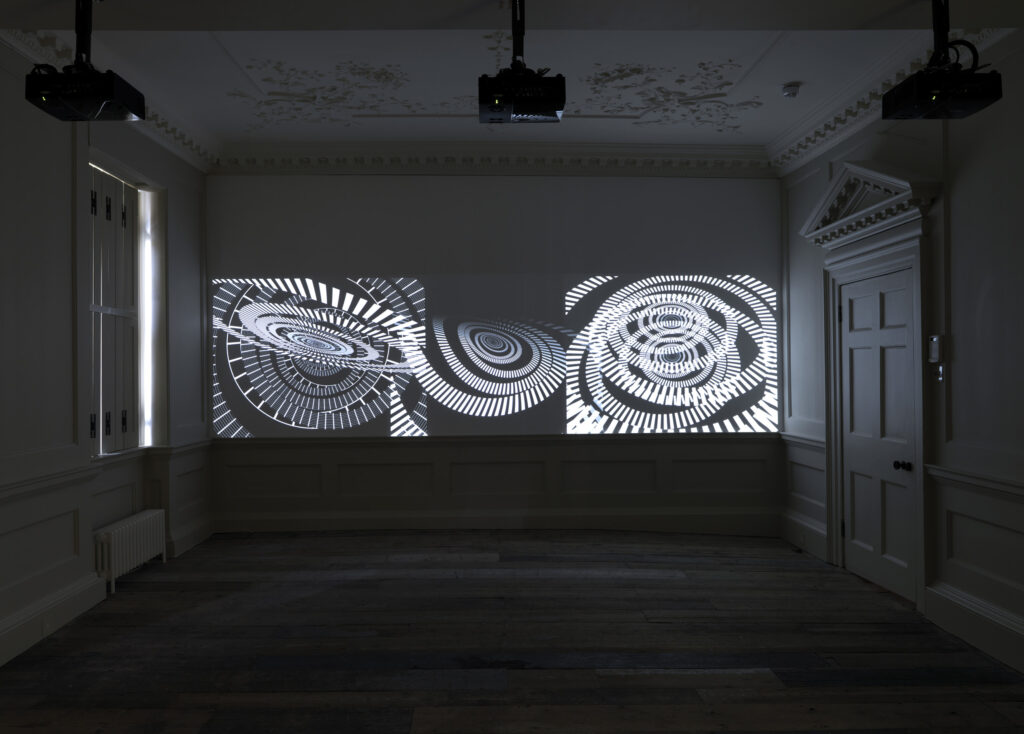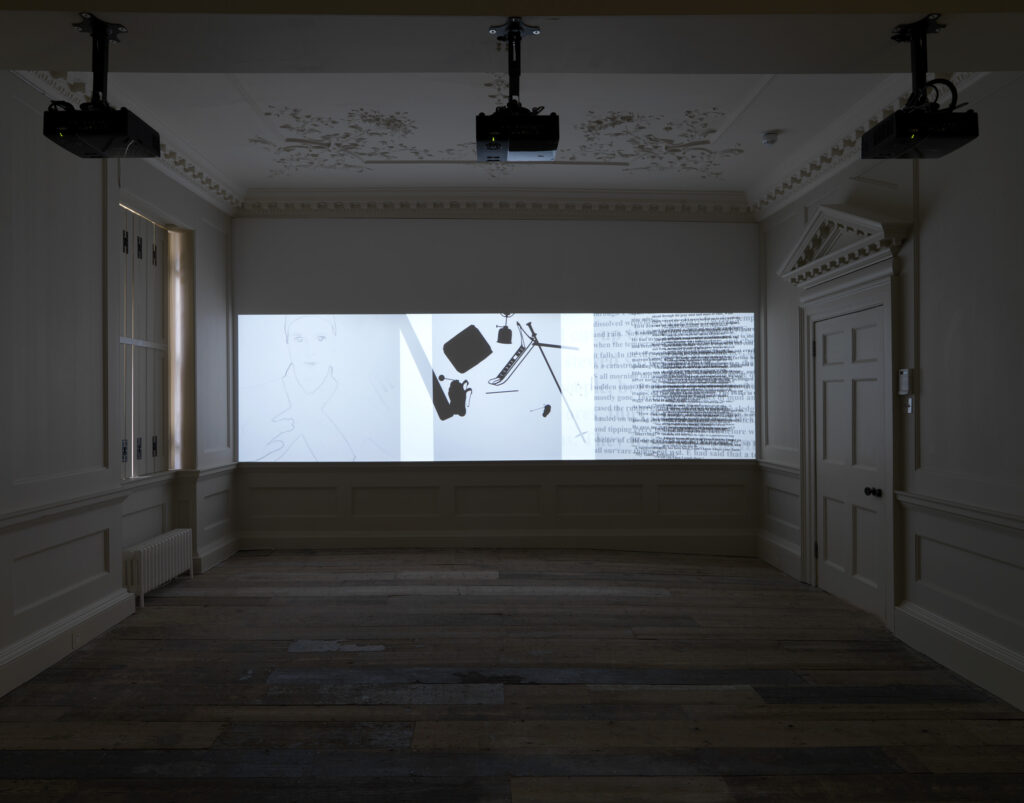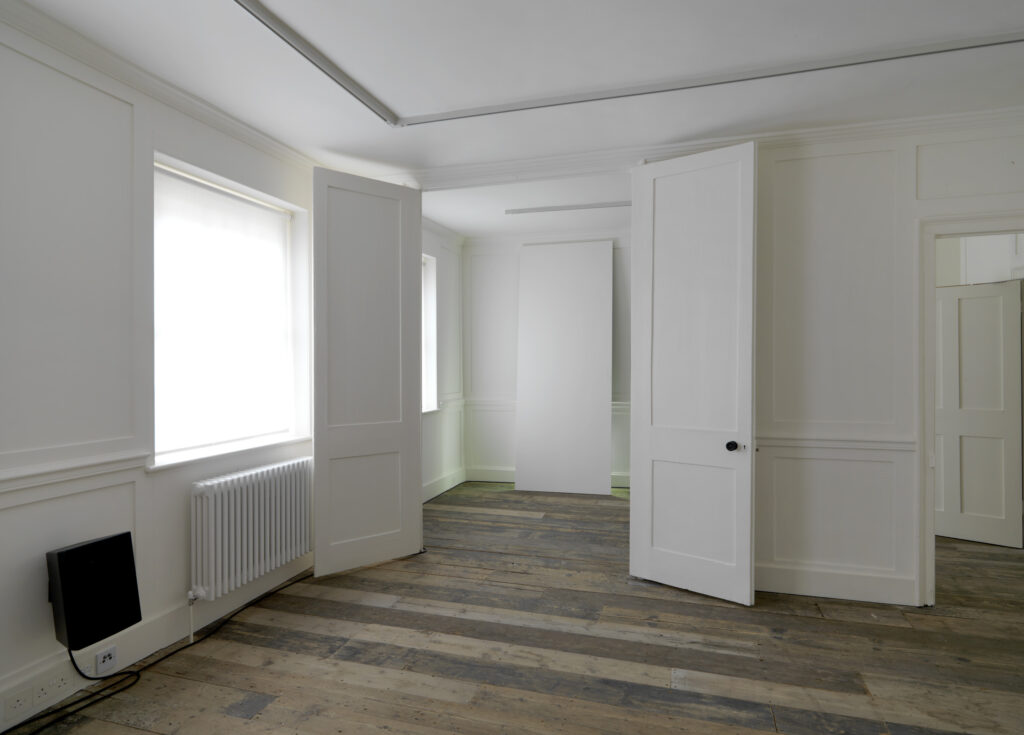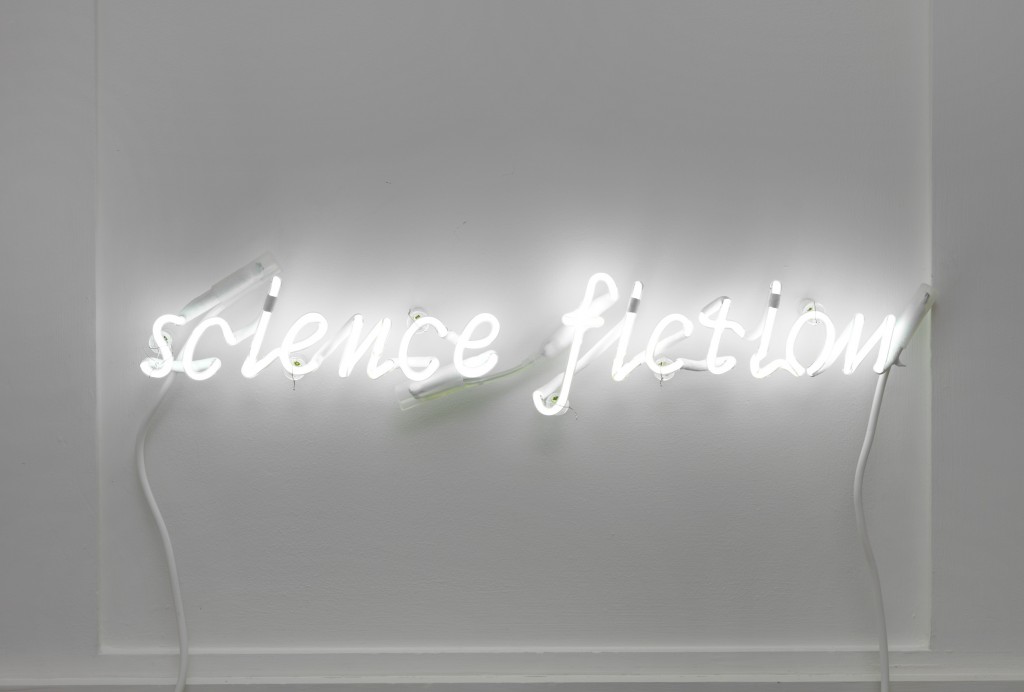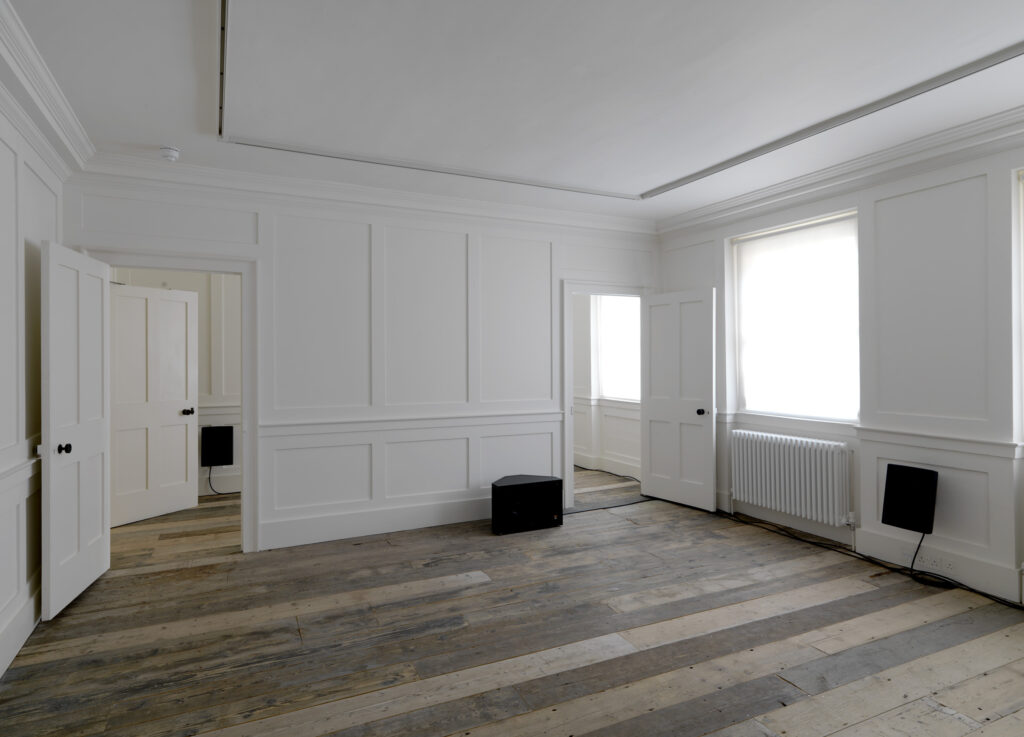Selected Exhibitions and Public Commissions
Insect Media
palace enterprise, Copenhagen, Denmark
January 20 – March 11, 2023
Solo Exhibition
Text by Stefanie Hessler, Director, Swiss Institute NY
Ann Lislegaard at palace enterprise, Contemporary Art Daily
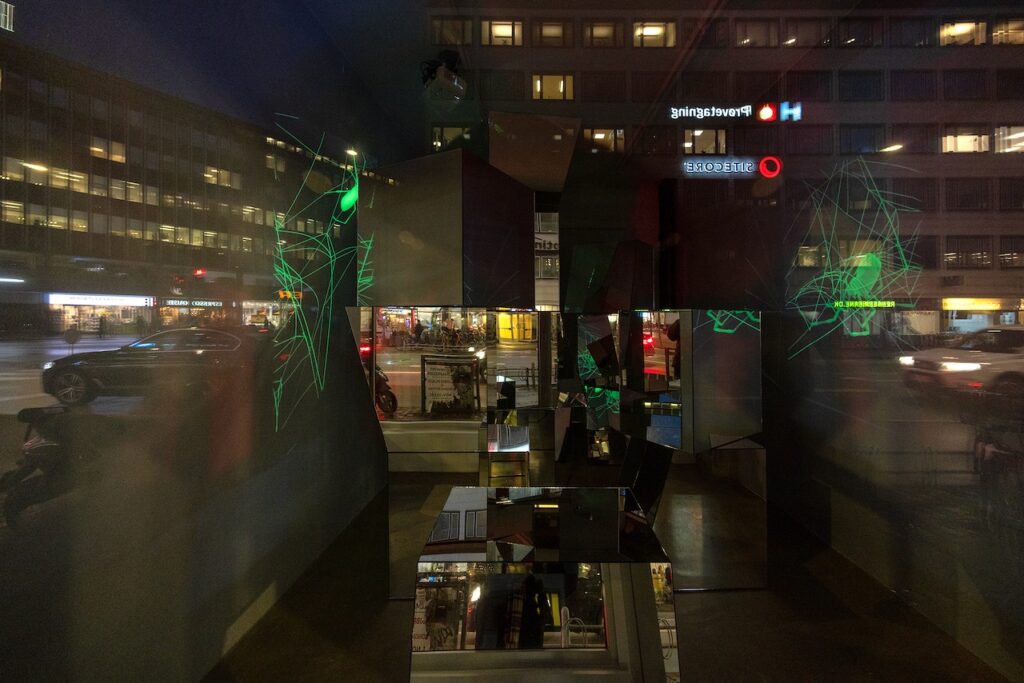
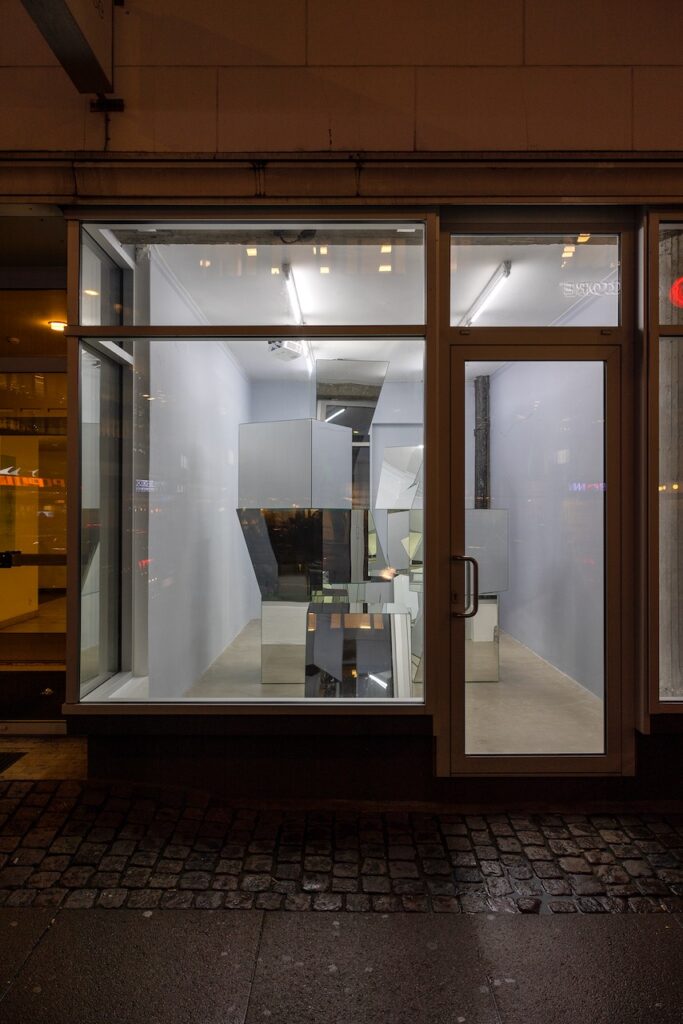
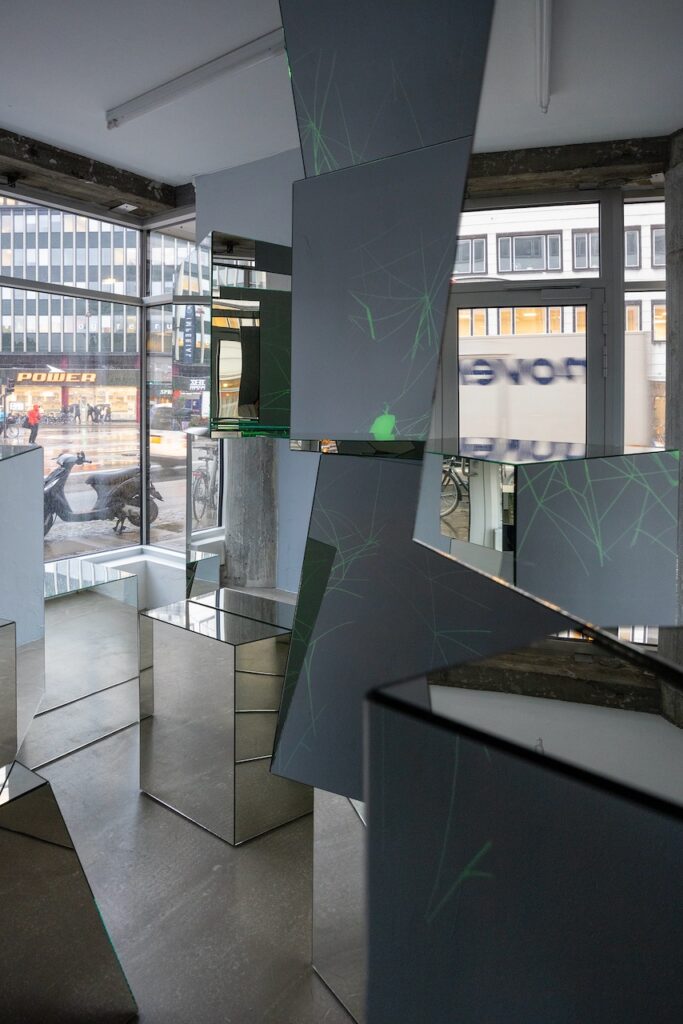
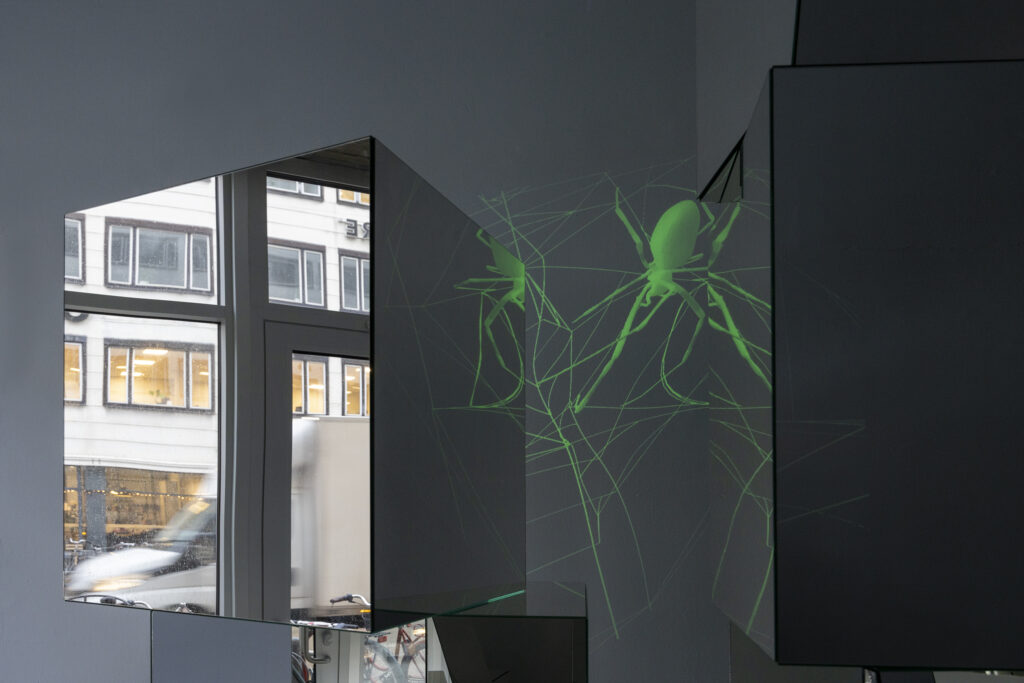
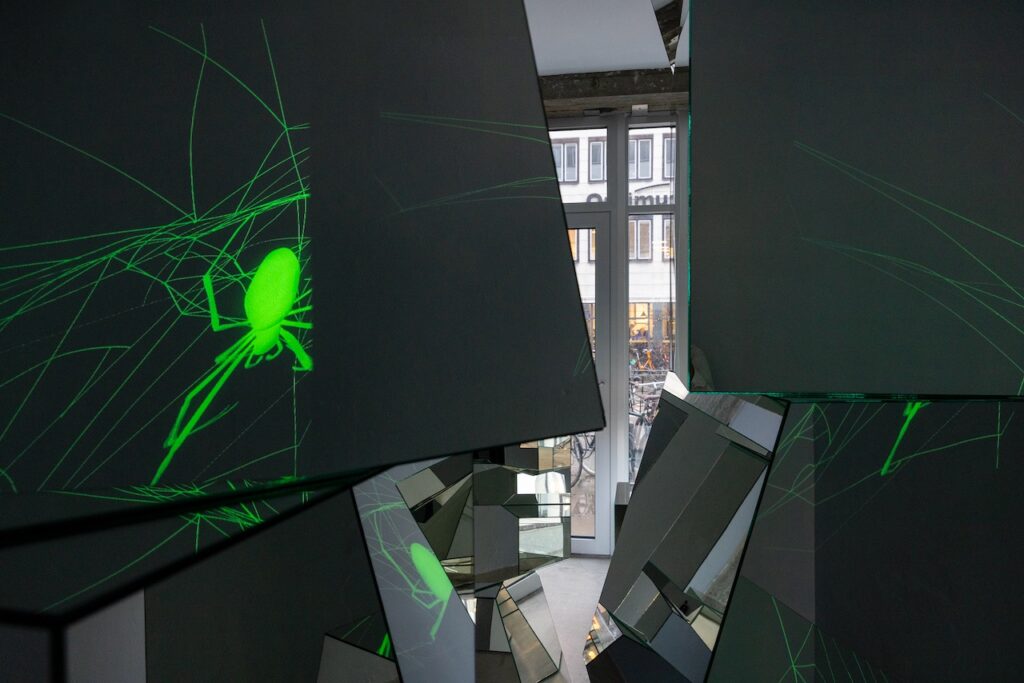
Empowerment
Kunstmuseum Wolfsburg, Germany
September 10, 2022 – January 8, 2023
Curated by Andreas Beitin, Katharina Koch, and Uta Ruhkamp
Group Exhibition
Installation views: Ann Lislegaard, Oracles, Owls…Some Animals Never Sleep, 2021-2012, 3D animation, LED screen.
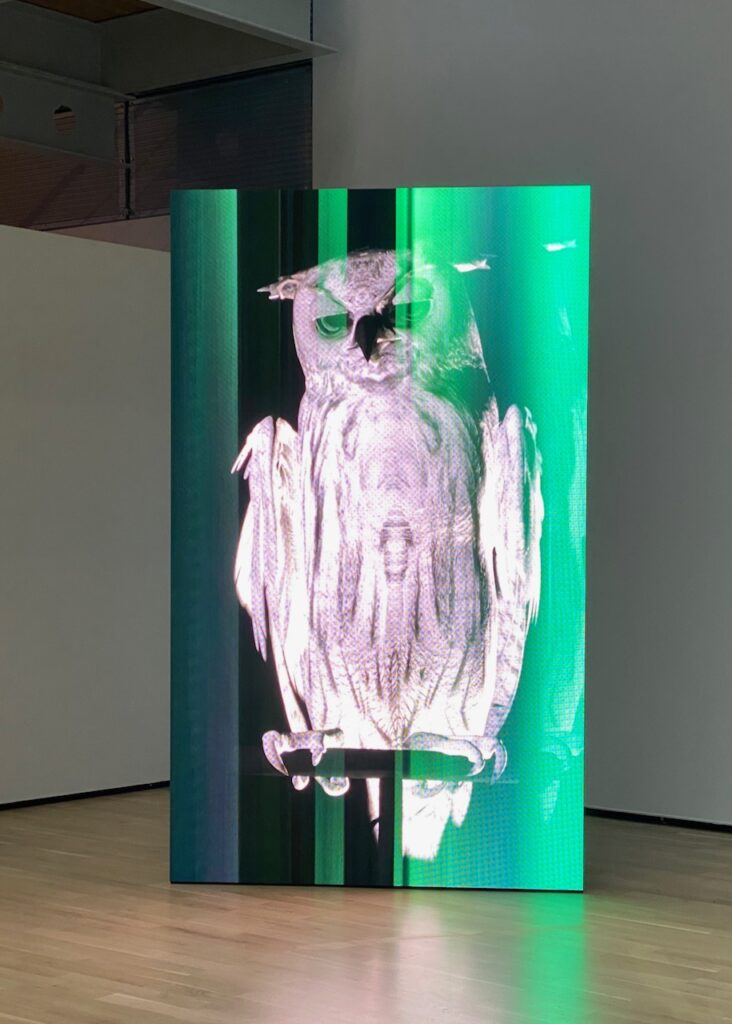
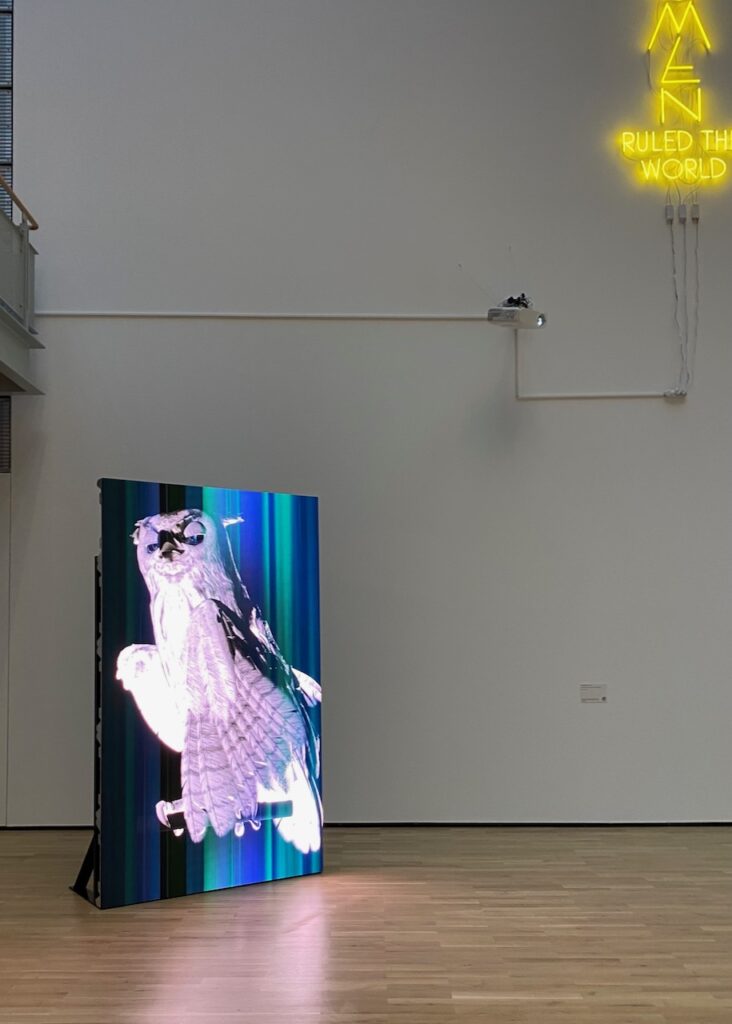
CFHILL, Stockholm, Sweden
November 29, 2023 – January 4, 2024
Solo Exhibition
The Avatar is casted in recycled aluminium. Living in the fringes of urban zones, the animal belong to our common fauna. Informed and altered by the voronoi algorithm, she is a messenger.
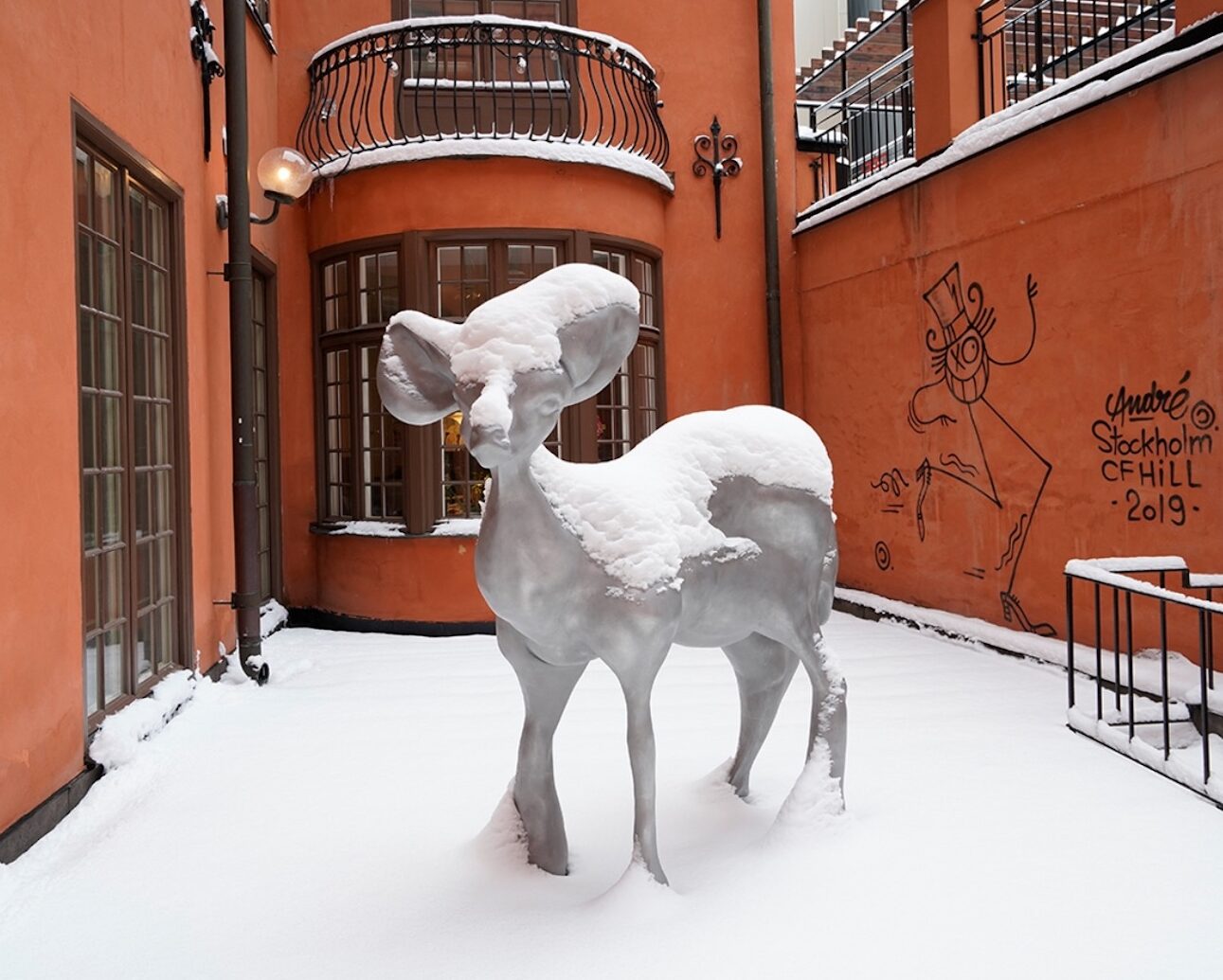
Vertigo
ARoS, Aarhus, Denmark
April 9 – September 11, 2022
Curated by Jakob Vengberg Sevel
Group Exhibition
with Ann Lislegaard, Cao Fei, Jeremy Shaw, Trisha Baga, Julian Charrière
Ann Lislegaard’s Crystal World (after J. G. Ballard), 2006, is a 3D animation about a journey to an abandoned laboratory in a wilderness that is slowly crystallizing. As the animation moves through architectural spaces that combine elements of Lina Bo Bardi’s Casa de Vidrio (1951) and Oscar Niemeyer’s Matarazzo Pavilion (1957), quotes from the protagonist of Ballard’s 1966 novel, Sander, describe a zone of entry and transformation. Using it to highlight the contrasts between modernity and entropy, progress and perversion, mineral light and the heart of darkness of enlightenment, Robert Smithson cited The Crystal World in his writings, and the novel was an inspiration for his mirrored structures. Besides Smithson’s The Dead Tree (1969), Crystal World (after J. G. Ballard) includes “characters” such as Untitled (Rope Piece) (1970) by Eva Hesse, elements from Kurt Schwitter’s Merzbau (1920), Lina Bo Bardi’s furniture designs and Bruno Taut’s modernist building Glass House (1914). All of these “virtual replicants” are re-activated in the animation as provisional characters in a depopulated setting where time is ruined.
Selected Press:
“Kunsten at svimle”, Ole Bak Jakobsen, kunsten.nu (2022)
“Konfuse tilstande af svimmelhed understøttes femdobbelt og fremragende i ny udstilling på Aros”, Lars Svanholm, Jyllands-Posten (2022)
Installation views: Ann Lislegaard, Crystal World (after J. G. Ballard), 2006, 3D animation, leaning screens.
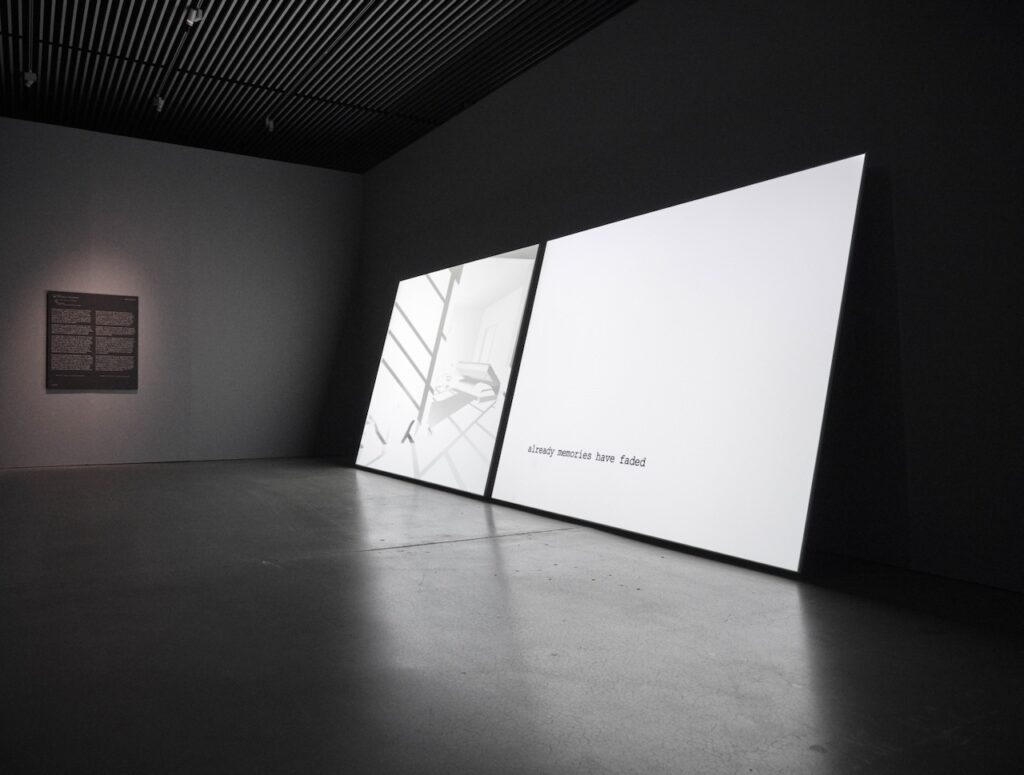
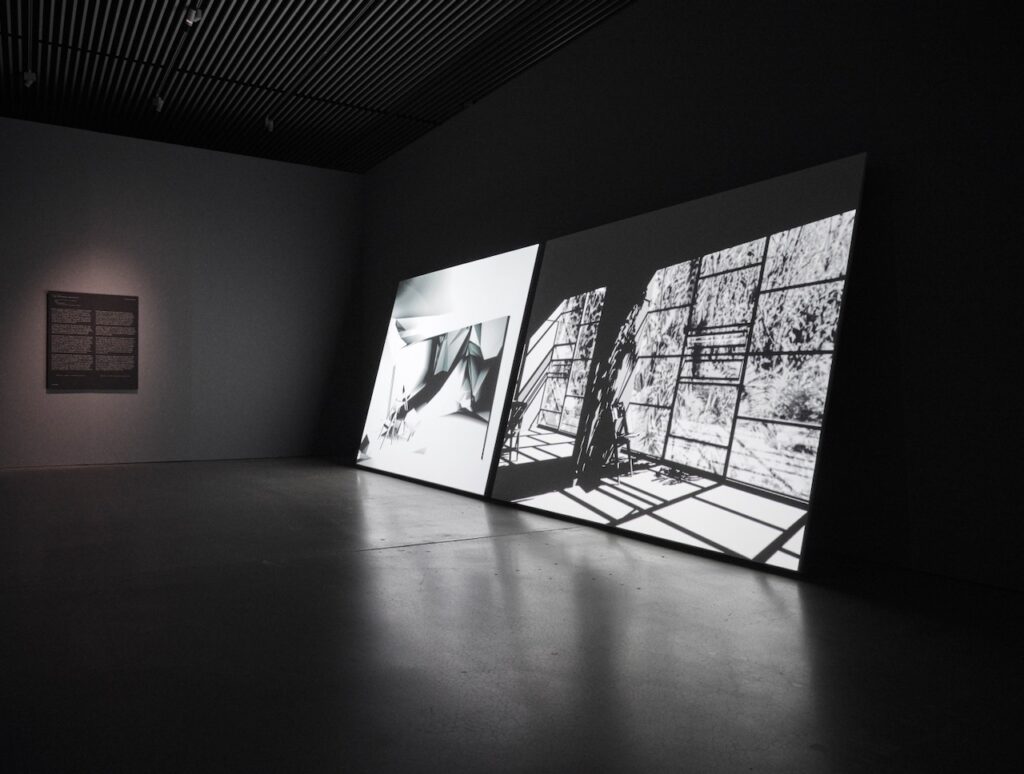
Unweaving the binary code – Hannah Ryggen Triennale
Kunsthall Trondheim, Norway
March 5 – August 7, 2022
Curated by Stefanie Hessler and Katrine Elise Pedersen
Group Exhibition
Press Release
Installation views: Ann Lislegaard, Spinning and Weaving Ada, 2022-2016, 3D animation, 3 projections, 12 mirror-boxes.

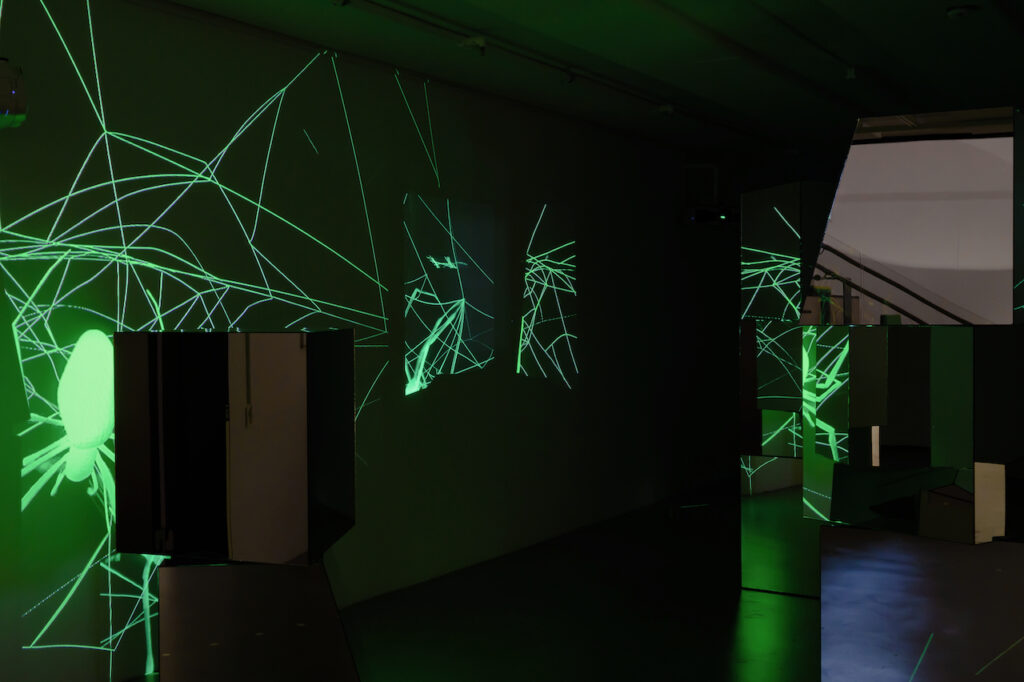
1000år1000år
Horten, Norway
2021-2018, recycled aluminium
Inaugurated January 11, 2022
Public Commission
1000år1000år er en replika af en tusind år gammel “hul eik” i Horten. “Hul eika” er et unikt habitat for insekter, mikrober, svampe, mosser og fugle, men er også et vidne til de forandringer, der finder sted i tid. Det er en organisme, der har registreret vikingetiden, industrialiseringen, Horten Værft, 2. verdenskrig, indførslen af kvinders stemmeret, fotografen Marie Høeg, Preus fotolab, Preus fotomuseum, klimaforandringer, kunstig intelligens…
Skulpturen er et monument over det vi har, men også det, som er ved at forsvinde: bare i Norge er 2700 fugle, pattedyr og planter rødlistet og 150 arter er allerede uddøde.
1000år1000år er en slags portal til andre tider, en rekvisit hentet fra en science-fiction fortælling, der minder os om, at vi kan skabe nye, ukendte fremtider. Fremtider, der indebærer en genforhandling af vores relation og forbundethed til de mangfoldige, biologiske verdener, vi er en del af.
Selected Press:
“Ann Lislegaard”, Jeppe Ugelvig, chartartfair.com (2022)
“Har laget noe for de neste tusen år”, Bjørn Nilsen, Gjengangeren (2022)
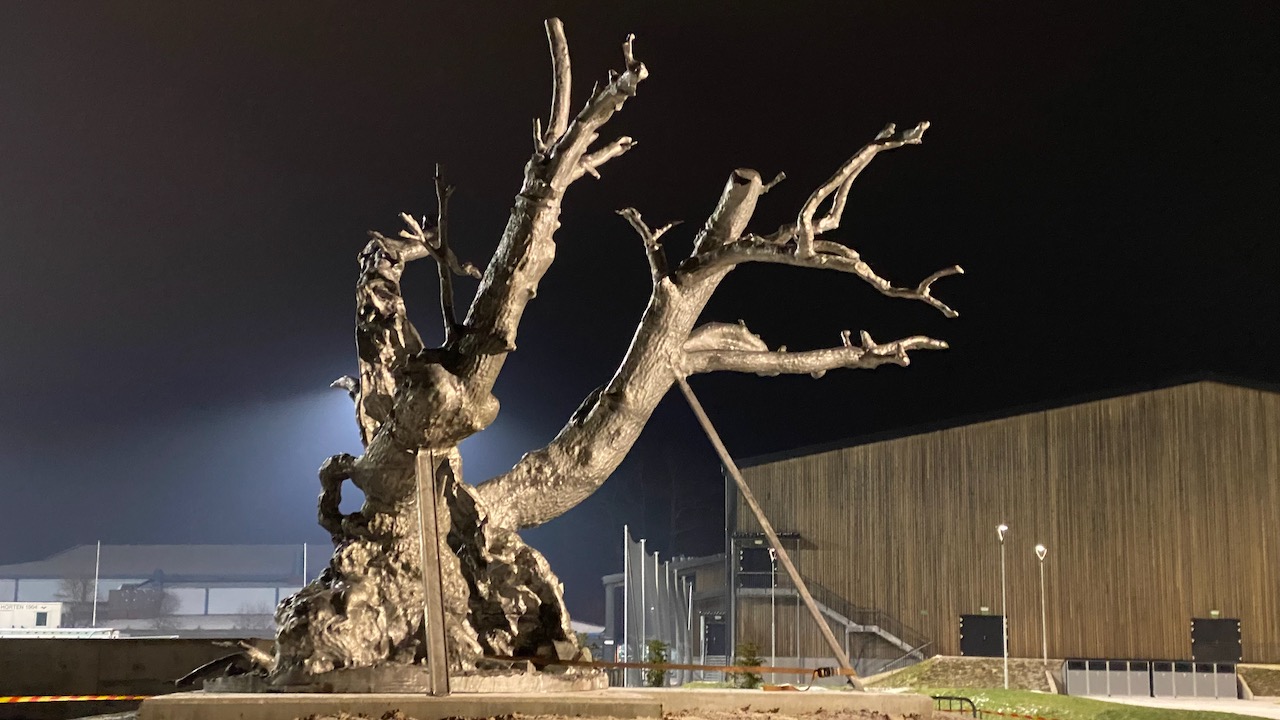
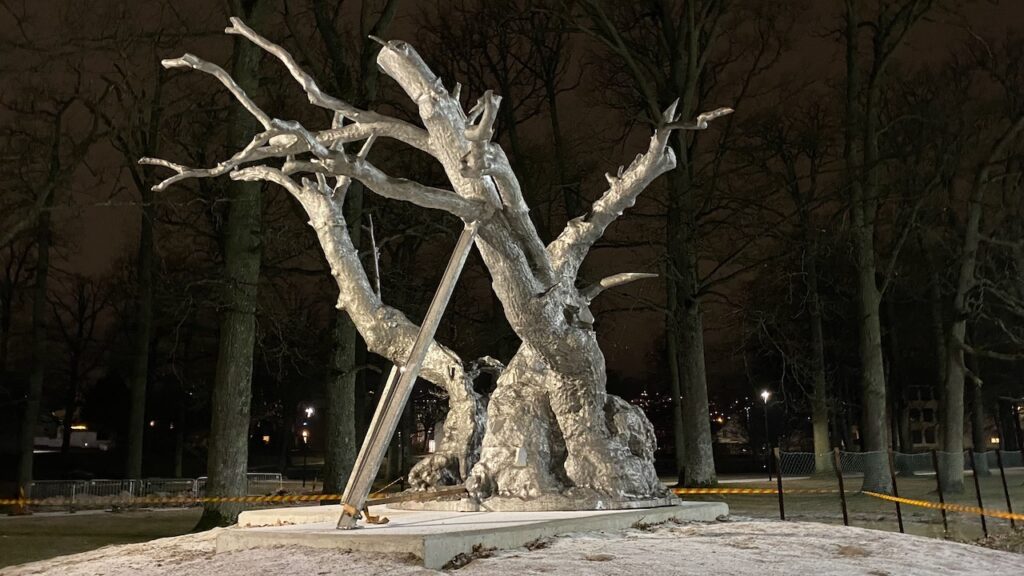
Extinct
palace enterprise, Copenhagen, Denmark
October 14 – December 18, 2021
Solo Exhibition
TYRELL
Like you said, Mr. Deckard,
a machine can be a hazard.
2050 is the year a recent Australian scientific report predicts the scenario for the end of human civilization. Now, let us imagine that we have reached the middle of this century and meditate on the state of human extinction, robotics, and nature justice. Ann Lislegaard’s owl belongs to this future. It is a jarring crossbreed of an imaginary species resilient to adapt to the disruptive and accelerated effects provoked by digital technologies that have transformed the structures of nature and society. To the artist it represents an oracle, the bearer of a prophetic message, but the oversized bird can also be interpreted as an automaton created by a techno-taxidermist, the product of a mechanic hazard entangled in relentless logics of algorithmic processes. It is a powerful reminder that if human activity continues to jeopardize nature as it has done for the past five-hundred years leading to the extinction of five-hundred species of animals, we will be left to navigate our world in total blindness.
Taking cues from American author Philip K. Dick’s allegorical description of the owl, Lislegaard appropriates the symbol to address the blindness of human perception and ambition, the futility in trying to understand. Set against a colorful background which is the twilight hour when crepuscular animals – among which owls – come out to hunt, the bird is mastered by an algorithm that determines its movements and speaking in tongues. The storytelling for earthly survival is uttered in a digitally-processed imagery and languages made of accents, rhythms, intonations, pauses, breaks that prevent us to understand its story.
Lislegaard deploys the SF genre (string figures, science fact, science fiction, speculative fabulation), narratives of apocalypse or salvation that are no longer just a hypothesis but a fact. When recognizable, the animal’s language states the extermination of machines – whether mechanical or digital – as opposed to what we would expect: the denunciation of all forms of cynical, well-funded, exterminationist post- capitalism by Homo deus (to adopt the historian Yuval Noah Harari) responsible for the collapse of nature’s biodiverse systems, as well as of human and non-human displacement and homelessness.
“[…] döhp⏑döhp⏑döhp […] gender on distant planets / echo echo […]” it voices out.
The owl is a feminist speaking in tongue. As a non-human feminist, it deploys feminist theory to address the gendered “neutrality” of technology and overcome gender and multispecies differences. The work highlights the artist’s interest in how digital spaces can break down social constructions about gender roles, sexuality and ethnicity. Lislegaard’s life-long experimentation in and entanglement with the age of digitalization forces us to pause from our eroding sense of reality, reversing all bleak prospects.
Diana Baldon
Artistic director, Kunsthal Aarhus
Selected Press:
“10 December”, Simon Starling, kunstkritikk.com (2021)
“Ann Lislegaard: Extinct”, contemporaryartlibrary.org (2021)
“Kunstguide”, Birgitte Ellemann Höegh, Berlingske (2021)
“En ugle, der taler til menneskeheden”, Lisbeth Bonde, kunsten.nu (2021)
“Ny generation af kunstgallerier rykker ind i private hjem og på uventede adresser”, Mette Skjødt, Børsen (2021)
“Ann Lislegaard”, Jeppe Ugelvig, chartartfair.com (2022)
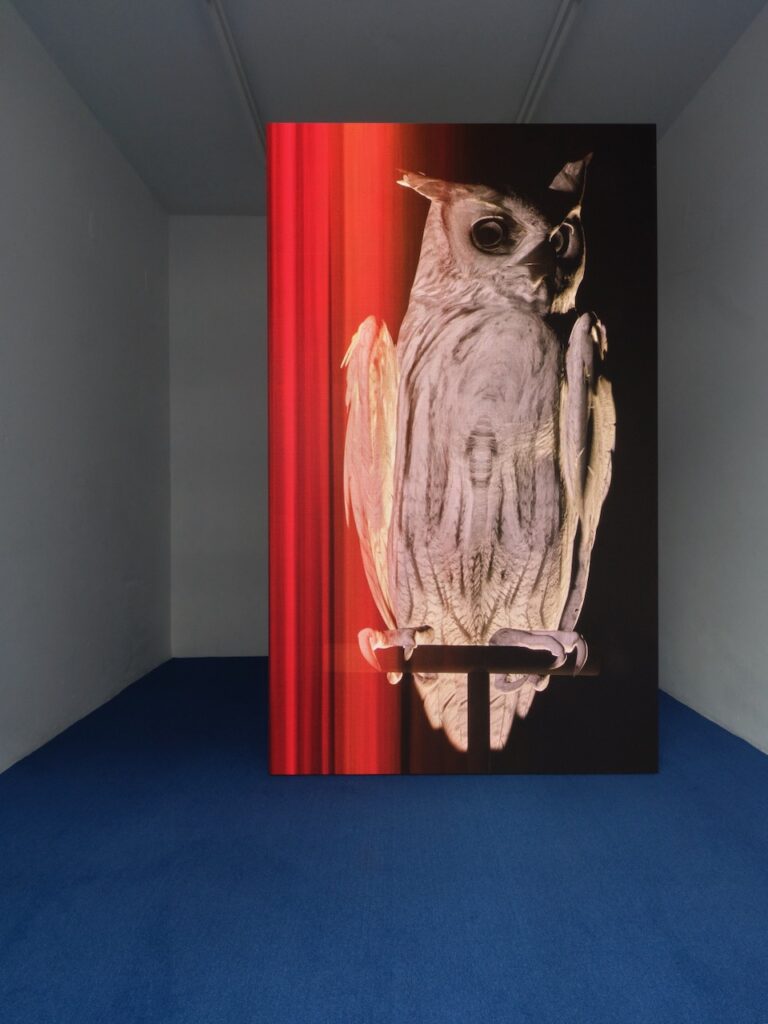
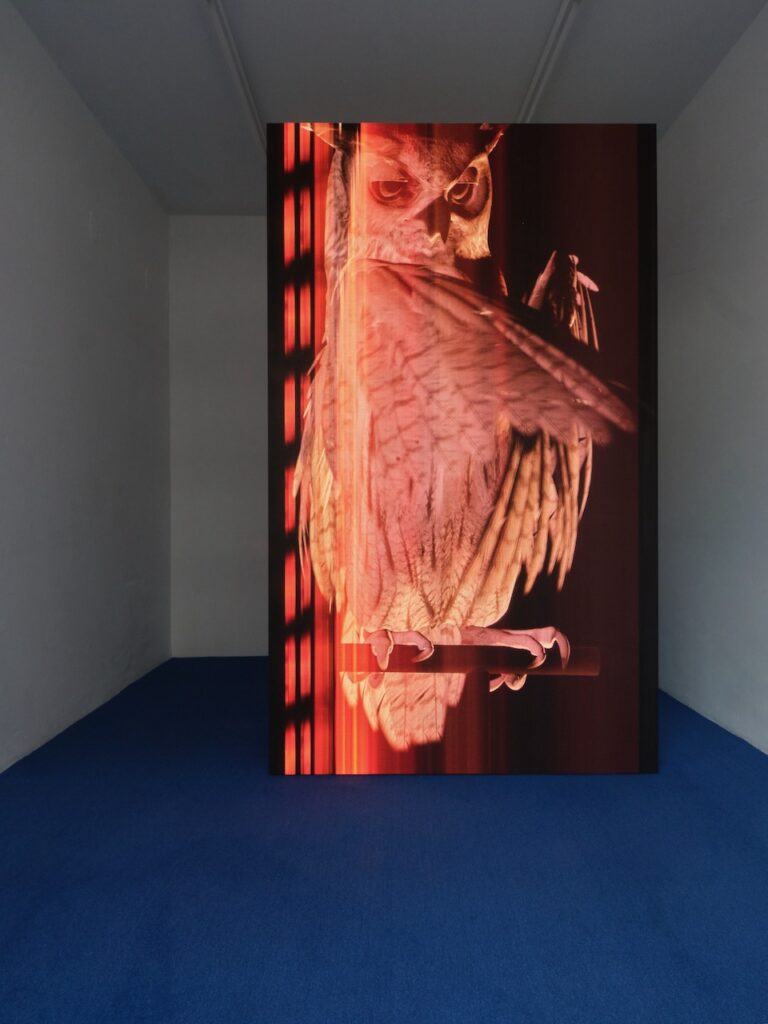
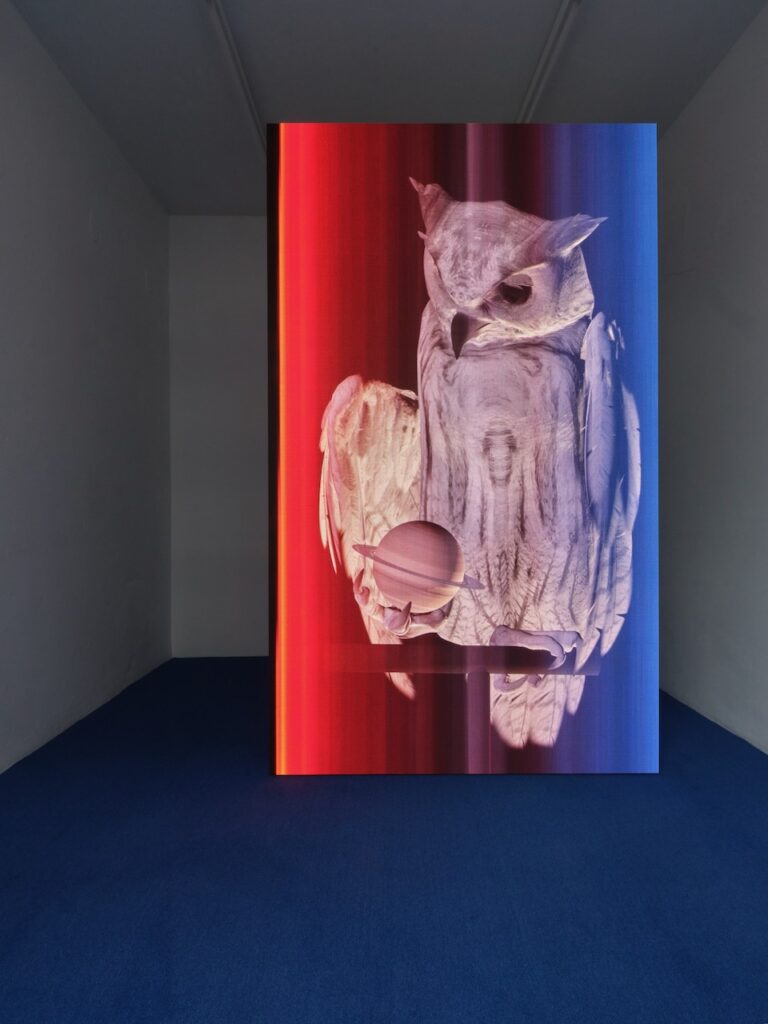
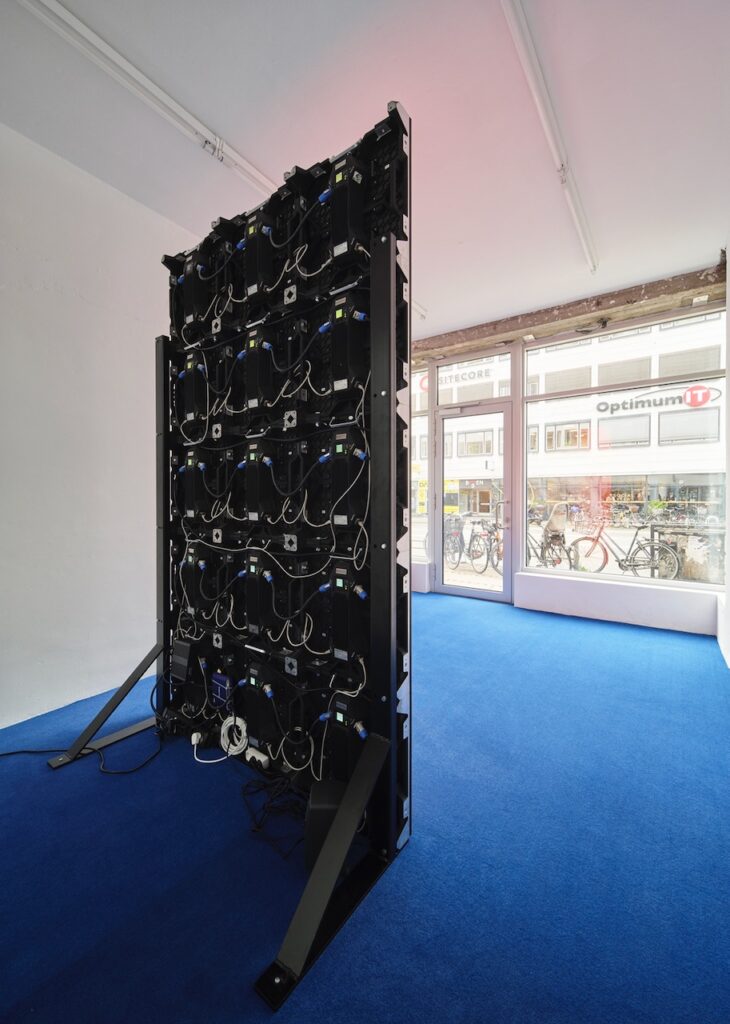
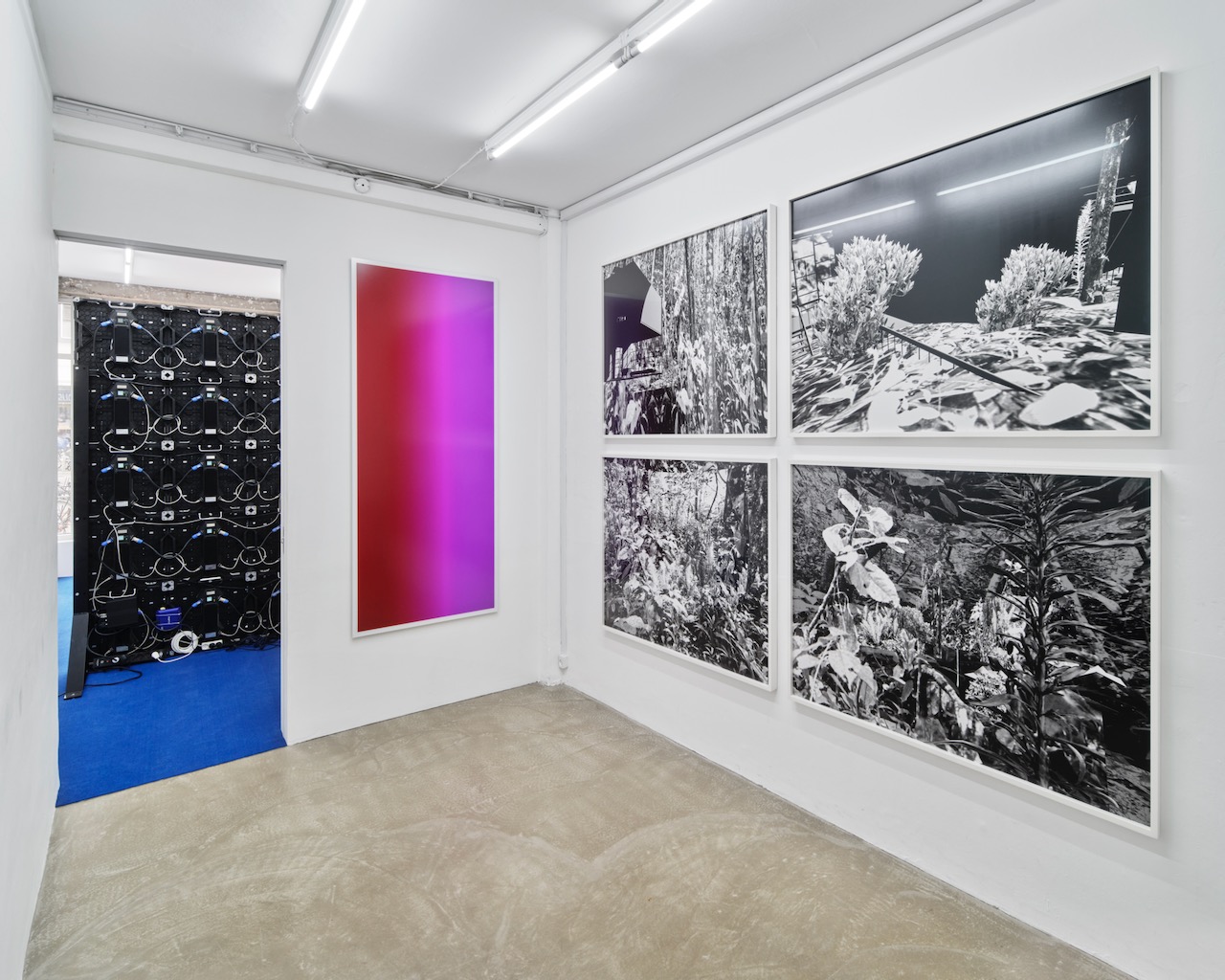
Spor
ARKEN Museum of Modern Art
May 13 – September 19, 2021
Group Exhibition
Spor er den syvende i rækken af udendørsudstillinger i serien Kunst i sollys, der inviterer til at opleve kunst på øen omkring ARKEN. Med museets menneskeskabte landskab som ramme har disse udstillinger gennem flere år tematiseret samtidskunstens engagement i økologiske og eksistentielle problemstillinger.
Installation views: Ann Lislegaard, Messages, 2020, 3D animation, sound; Ann Lislegaard, Exctinction, 2021-2020, sound.
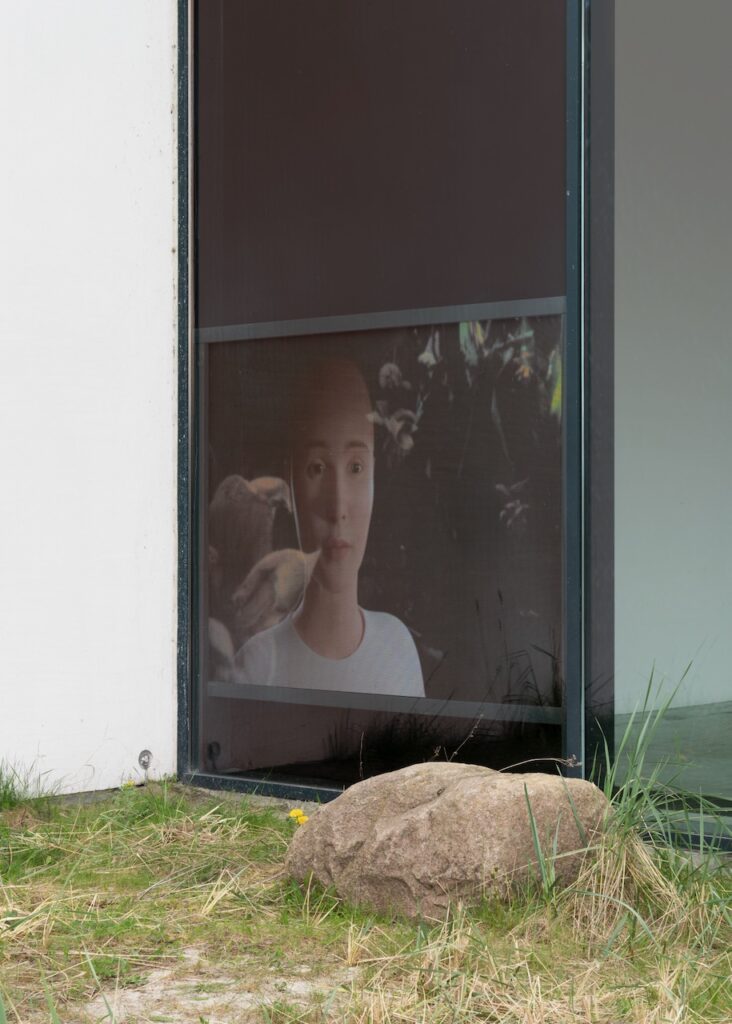
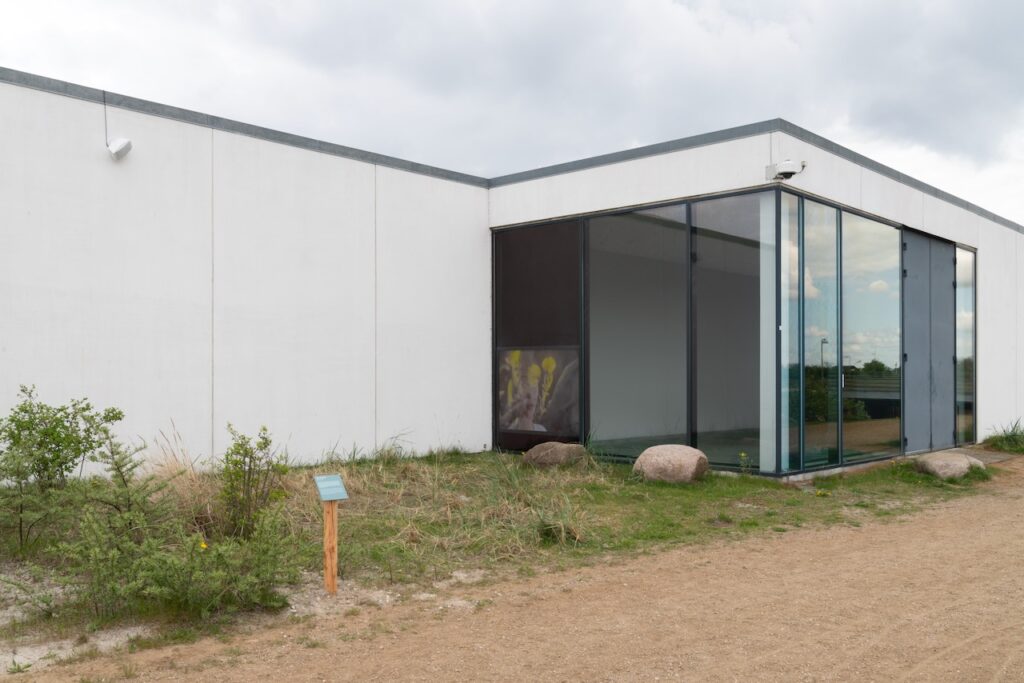
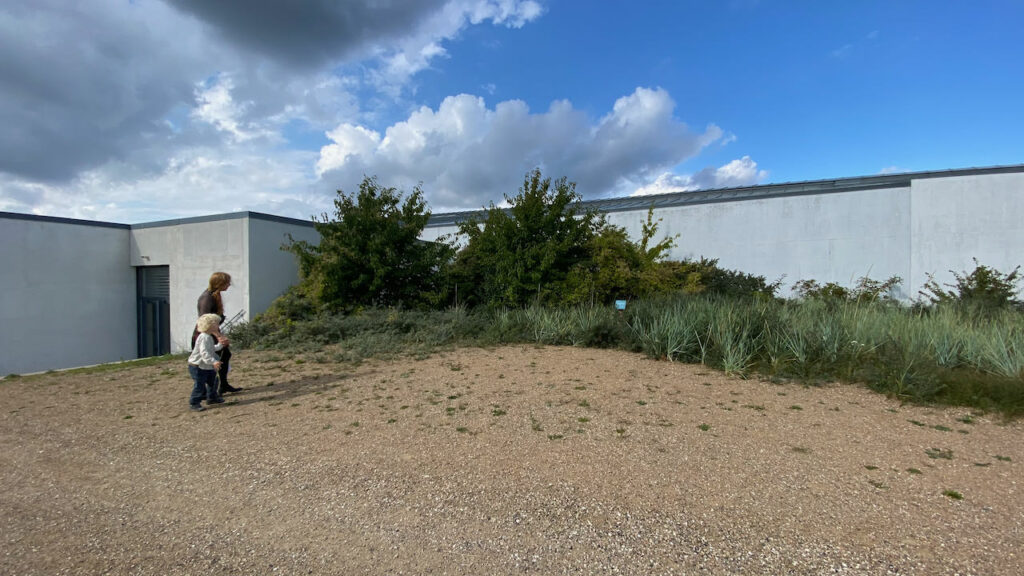
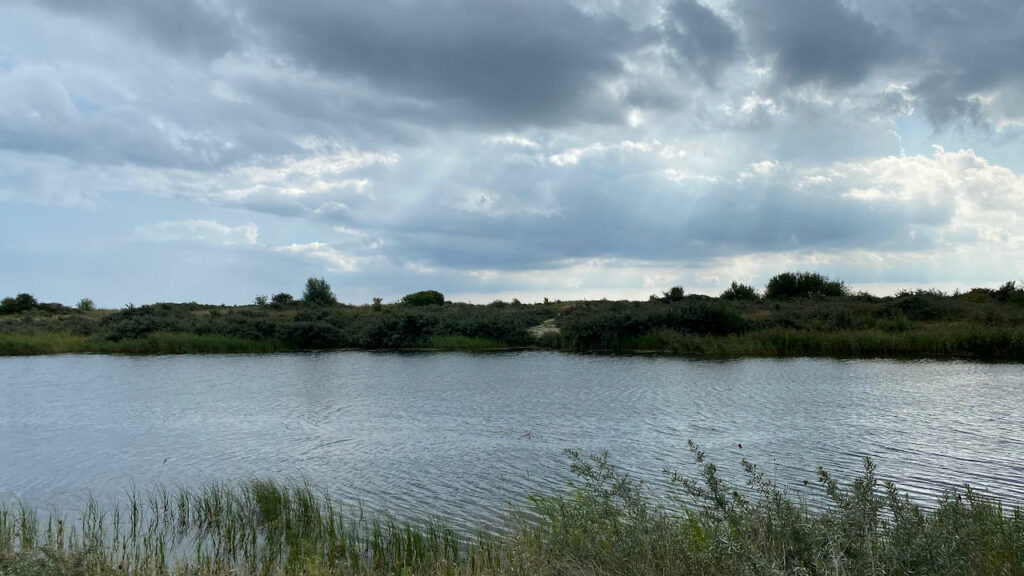
Fertile Ghosts
Kunstfort, Vijfhuizen, The Netherlands
September 27 – December 27, 2020
Solo Exhibition
In the Genieloods arsenal boundaries between species become fluid and new hybrids are born. The voices of exctinct bird species are brought into the future, dark clouds of pollen inhabit a blossoming underworld, and a contact zone for interspecies communication is opened. Can a fertile world be re-established?
Kunstfort is proud to present the new solo exhibition by Ann Lislegaard (lives and works in Copenhagen). Lislegaard is internationally known for her visionary videos, animations, and sound-light installations that engage storytelling—specifically science fiction—to explore the malleability of human perception.
The subversive potential of science fiction enables everyday scenarios to be framed by unusual rules. Rather than deconstructing categories of language or meaning, these categories are multiplied, transformed, and transfixed. In Lislegaard’s work, experiences of simulated spheres are created by means of interdisciplinary hybrids and connections – between architecture and cinema, between fictional narratives, and between human beings, machines, and animals.
Selected Press:
“‘Kwetsbaarheid is iets waar we ons meer bewust van moeten zijn’ – in gesprek met kunstenaar Ann Lislegaard”, Nadeche Remst, Metropolis M (2021)

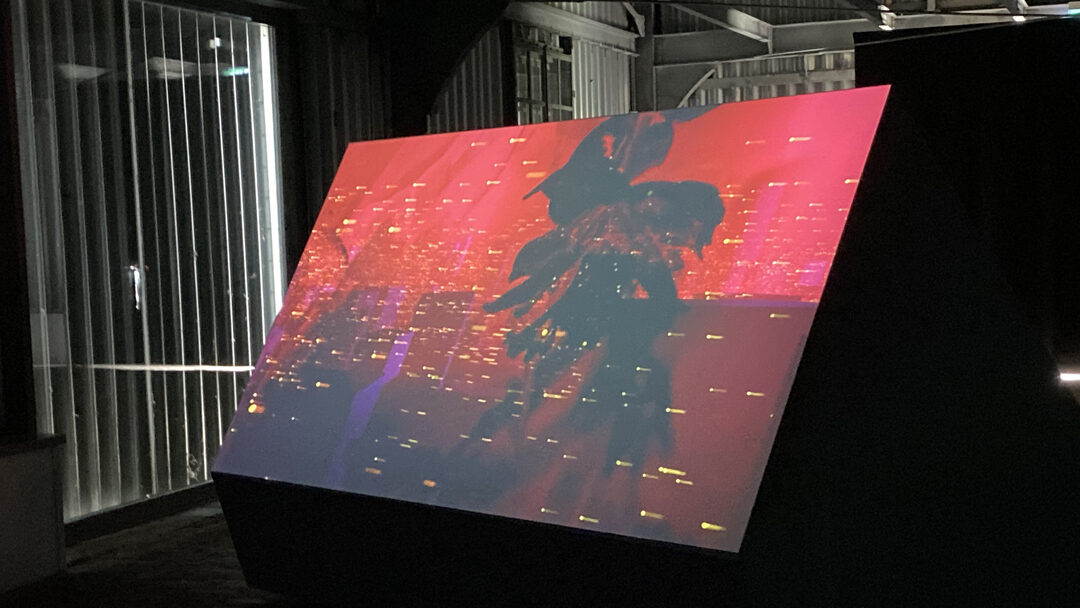
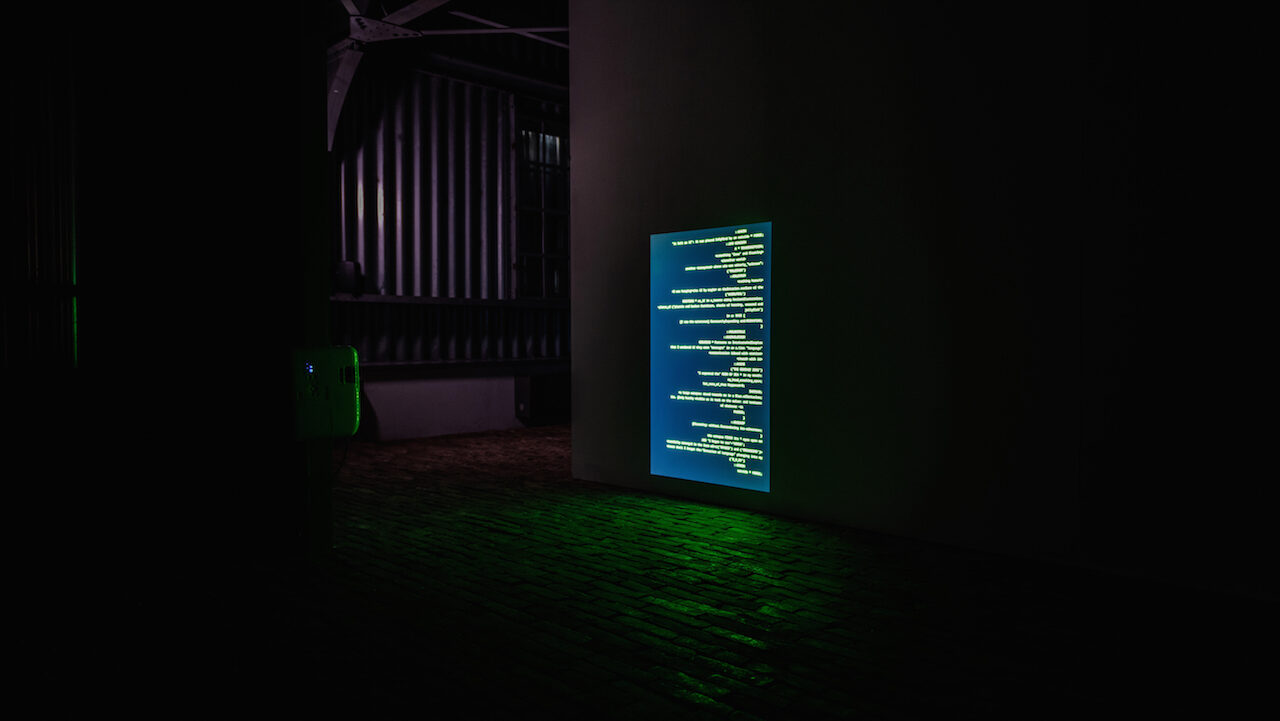
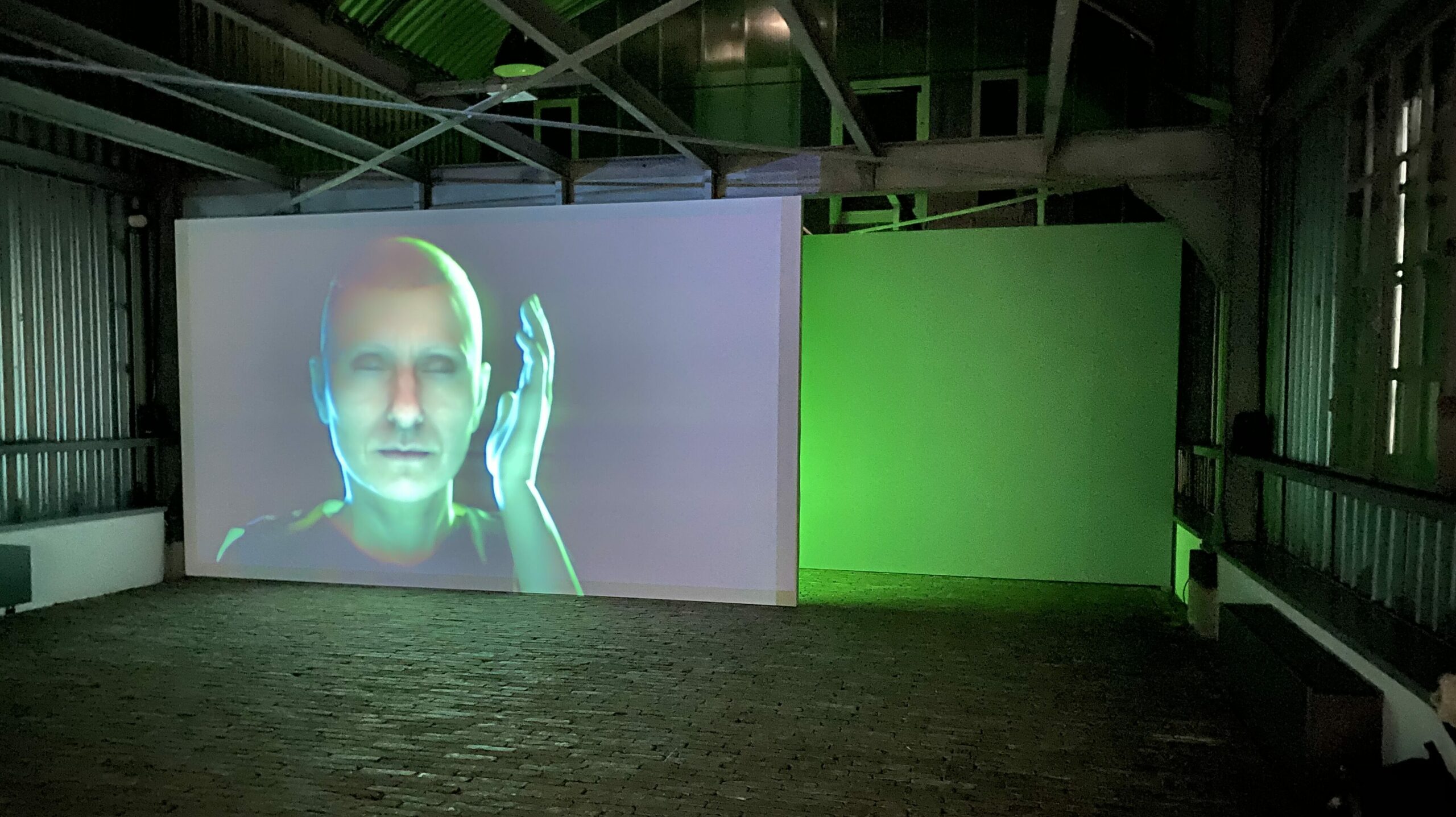
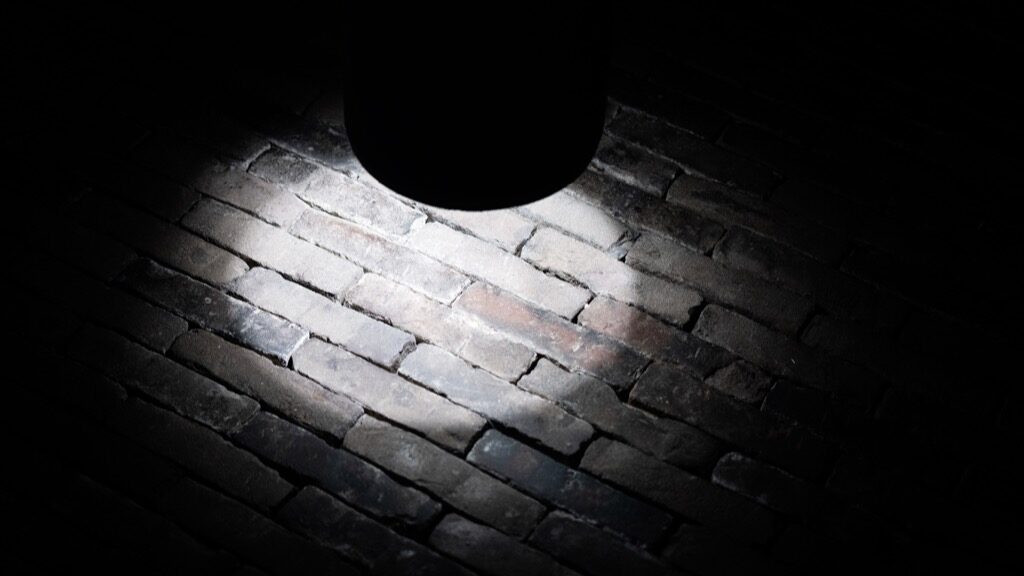
Not Without My Ghosts: The Artist As Medium
A Hayward Gallery Touring exhibition
Curated by Lars Bang Larsen, Simon Grant and Marco Pasi
Drawing Room, London, September 10 – November 1, 2020
Grundy Art Gallery, Blackpool, October 15 – December 11, 2021
Glynn Vivian Art Gallery, Swansea, January 8 – March 13, 2022
Millenium Gallery, Museums Sheffield, March 31 – June 26, 2022
Not Without My Ghosts, is a major exhibition of artists and works inspired by mediumistic methodologies and their deep cultural history. Bringing together more than 30 international artists from the 19th century to the present day, it explores the changing terms of artistic engagement with mediumship.
The exhibition features works inspired by spirit experiences during séances and trances, to practices of automatism, surrealist experiments, and communications with higher powers and other realities. Not Without My Ghosts addresses 200 years of medium art by exploring how artists have been inspired or directly influenced by forces beyond those accepted by the modern world.
Not Without My Ghosts: The Artist As Medium is a Hayward Gallery Touring exhibition from Southbank Centre, London, developed in partnership with Drawing Room, curated by Lars Bang Larsen, Simon Grant and Marco Pasi.
Installation views: Ann Lislegaard, 1994, drawings made during hypnotic sessions.
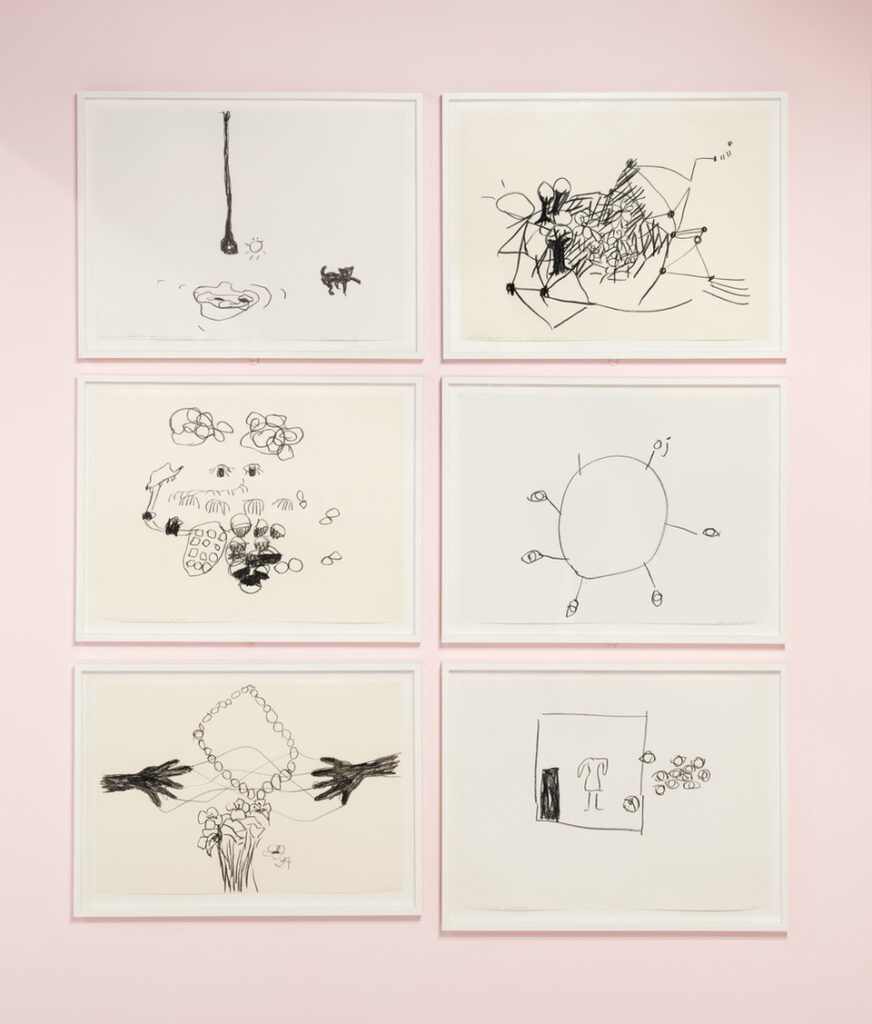

Myths of the Near Future
FOTONOVIEMBRE Biennale, TEA, Tenerife
November 8, 2018 – March 15, 2019
Curated by Mette Kjærgaard Præst
Group Exhibition
with Ana Mendieta, Ann Lislegaard, Claude Cahun, Dibujo Colectivos (Óscar Domínguez, André Breton, Victor Brauner, Jacques Herold, Remedios Varo, Jacqueline Lamba, Wifredo Lam), Drago Díaz, Jorge Oramas, José Luis Perez Navarro, Juan José Gil, Oreet Ashery, Óscar Domínguez, Patricia Domínguez, Pia Arke, René Magritte, Sebastián de Larraechea and Victoria Jolly (Arte Abisal), Robert Mapplethorpe
This exhibition aims to open up a conversation about otherness, fluidity, and the possibilities of transformation. It brings together artists who share an impulse to question assumptions of truths, and who propose alternative modes of action.
Today we are arguably living in a time of political and ecological crisis. We are realising that the constant drive towards capitalist progress has had immense and destructive consequences for the environment, and at the same time, the global political divide is manifesting in a rise in anxiety related mental health conditions and the loss of human rights that generations before us fought hard to gain.
In response to this crisis, notions of solidarity, otherness, and fluidity become increasingly vital as tools to challenge oppressive conditions. Through states of entanglement rigid hierarchies can soften, and fixed boundaries between self and other open up, creating fluid channels of communication and new possibilities of transformation.
Myths of the Near Future – Entanglement is a journey in search of new ways to communicate with, become part of, and entangle ourselves with our surroundings.
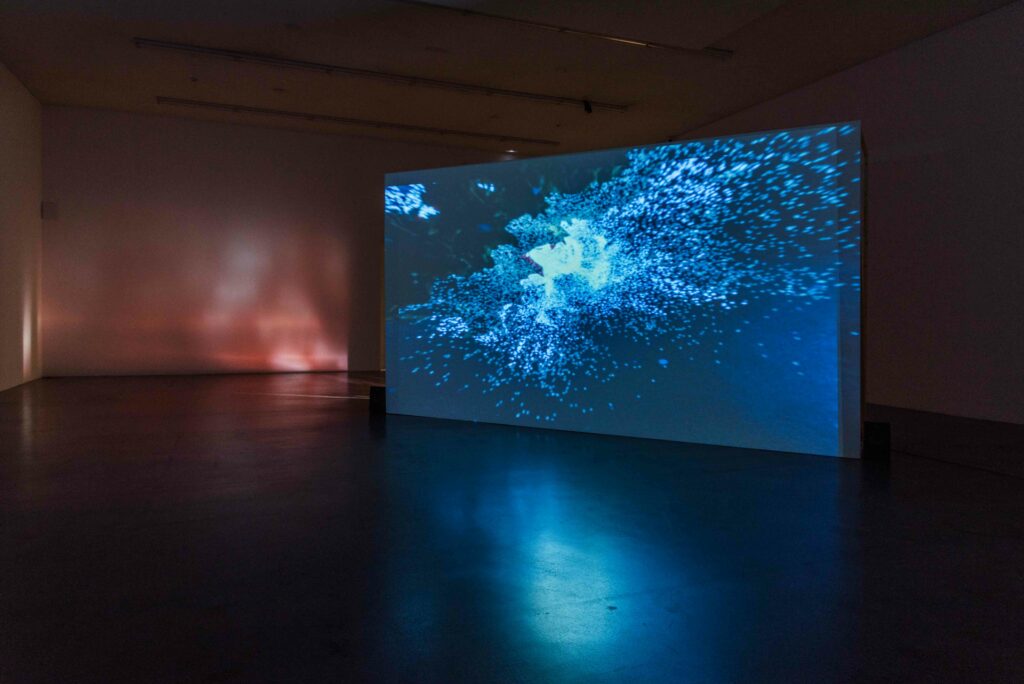
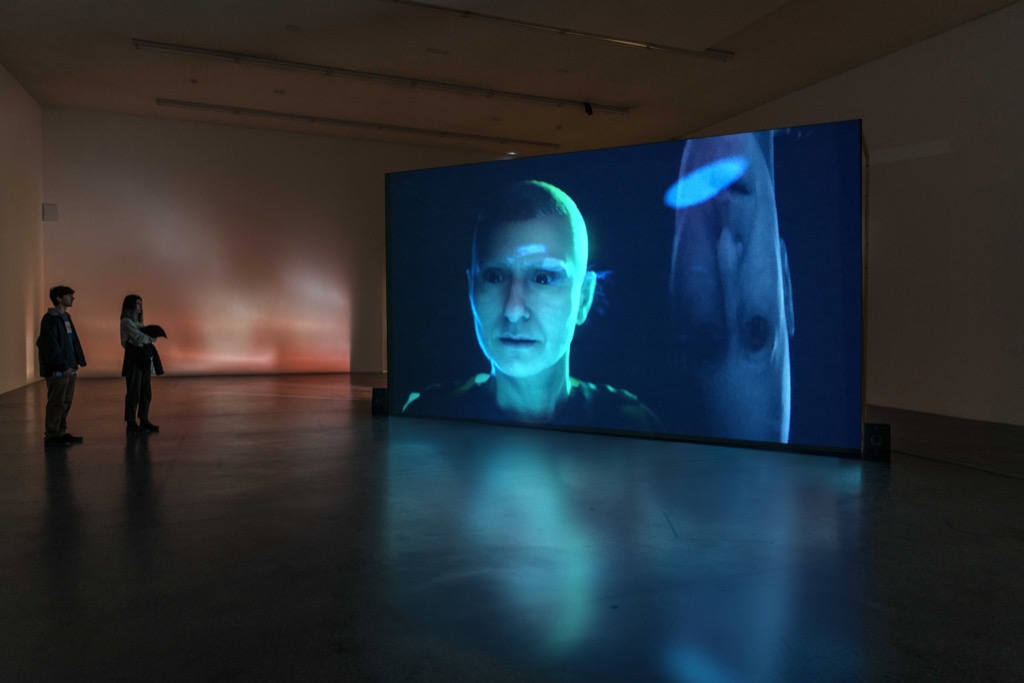
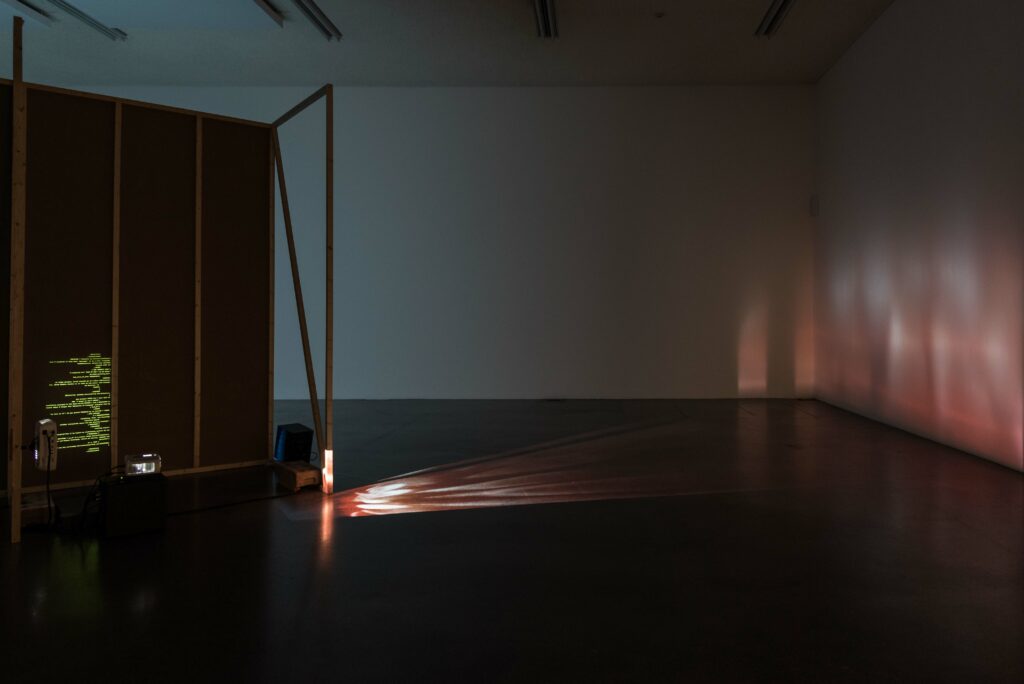

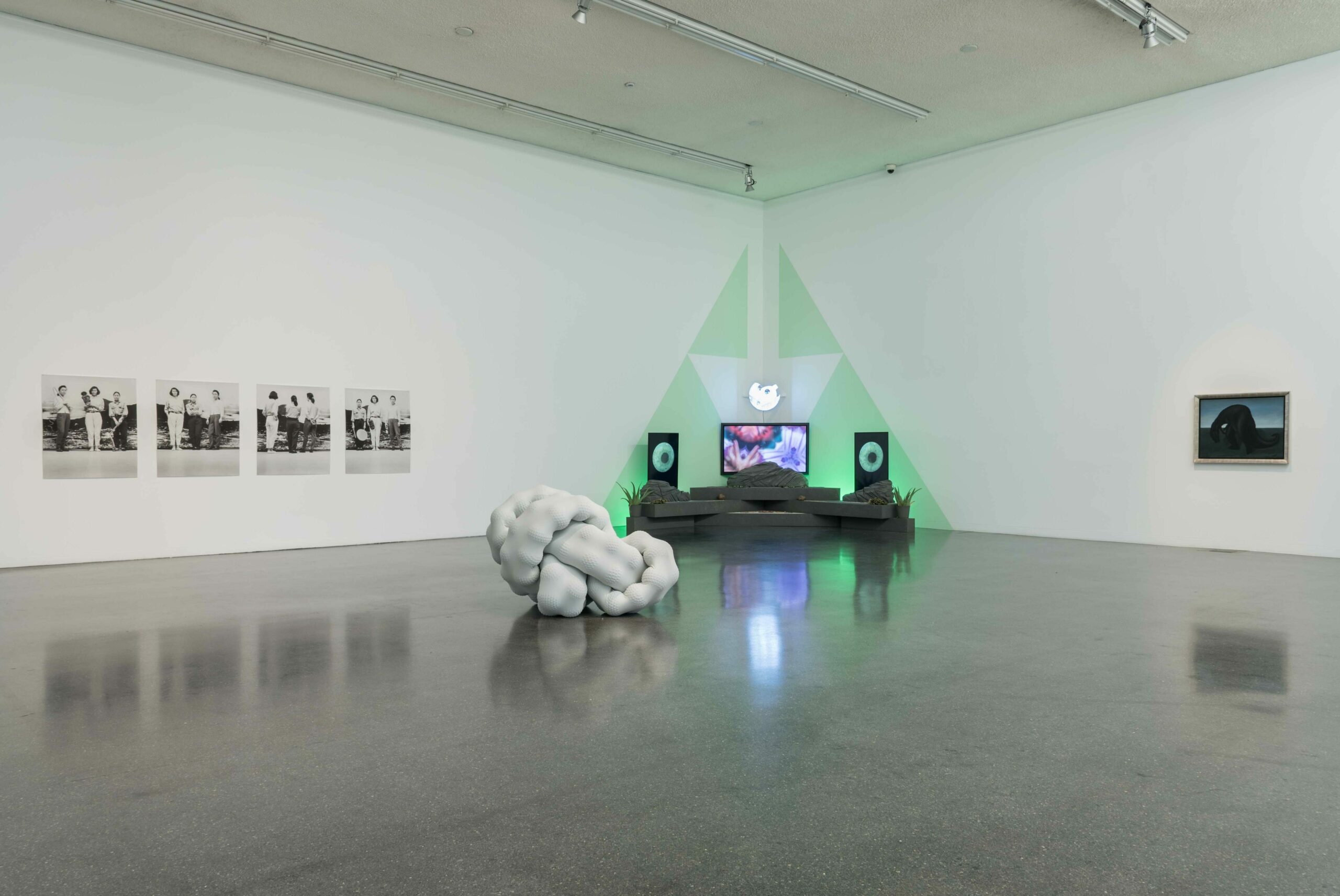
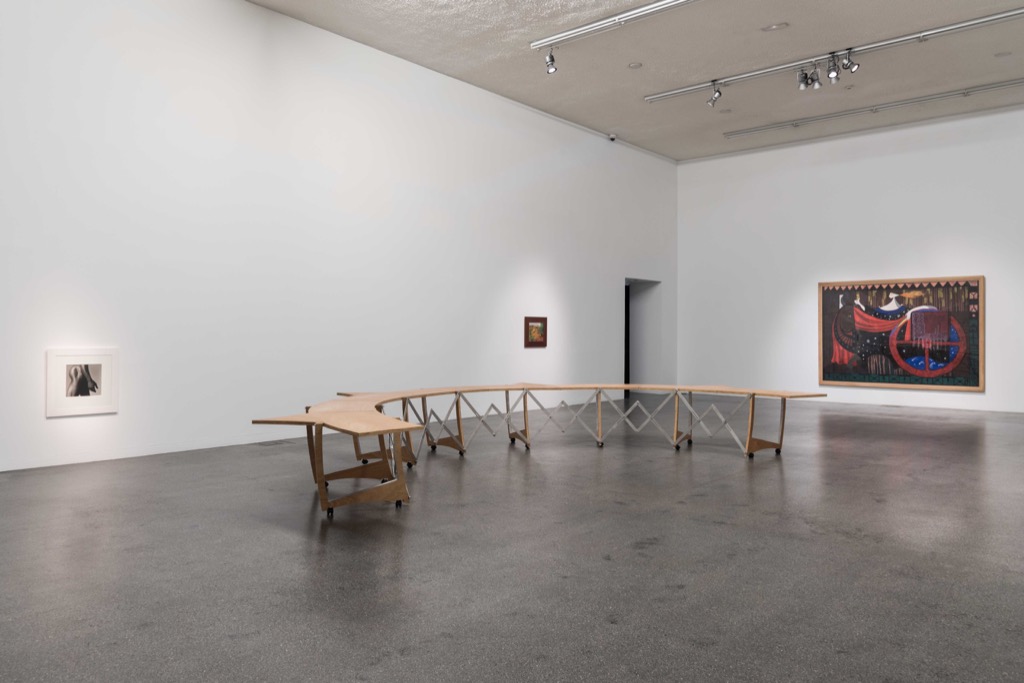
Some Animals Never Sleep
CFHILL, Stockholm, Sweden
March 15 – April 9, 2019
Solo Exhibition
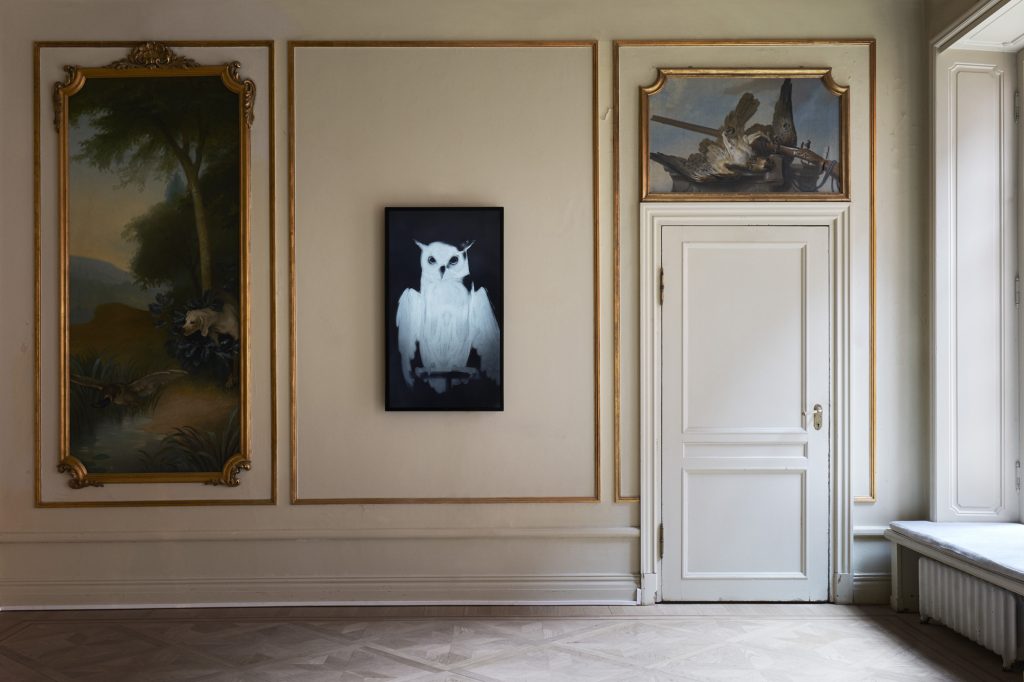
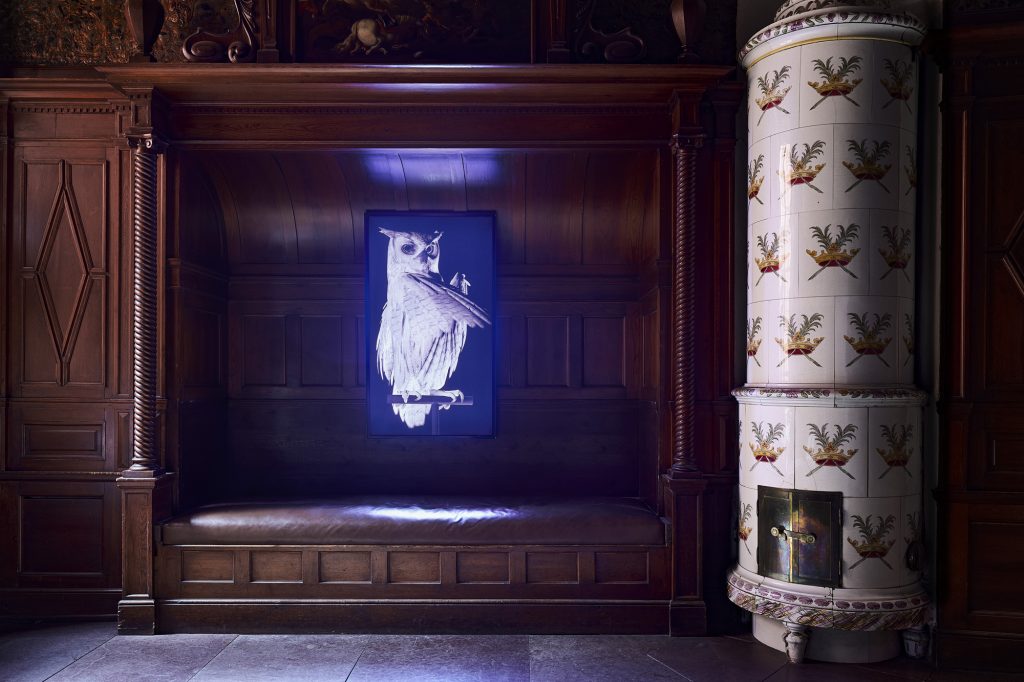
Orakel, en animation
2016-2018, animated neon sculpture
Københavns Professionshøjskole, Campus Carlsberg, Copenhagen
Public Commission
Ny Carlsbergfondet:
Det er billedkunstner Ann Lislegaard, som står bag det helt nye stedsspecifikke kunstværk Orakel, en animation 2018 på Københavns Professionshøjskole. Neonuglen kan opleves i Campus Carlsbergs atrium, hvor den udsmykker væggen i 11 meters højde med et vingefang på omkring otte meter. Uglen skiftevis spreder sine vinger, tager afsæt, letter og tager afsæt igen. Bevægelserne animeres af et netværk af neonrør. Kunstværket er realiseret på baggrund af en bevilling fra Ny Carlsbergfondet.
Ann Lislegaard har gennem mange år arbejdet med en række forskellige medier, og hun er særligt kendt for at benytte ny teknologi i sit kunstneriske arbejde. Hun henter inspiration i science fiction-genren som en alternativ indgang til fortælling og de sociale og psykologiske strukturer, som vi forstår verden igennem. Lislegaard er optaget af uglen som et slags orakel, et varsel.
”Tidligt i processen besluttede jeg, at udsmykningen ikke skulle være et stillestående billede af en ugle. Den skulle performe og være i bevægelse, ligesom en animation. De sidste årtier er der forsvundet mere end tre millioner fugle bare i Danmark. Neonuglen kan ses som et mødested, der også minder os om, at vi kan forandre, hvordan vi lever. Uglen sætter af, den letter og den drømmer om at flyve – også i fremtiden,” siger Ann Lislegaard.
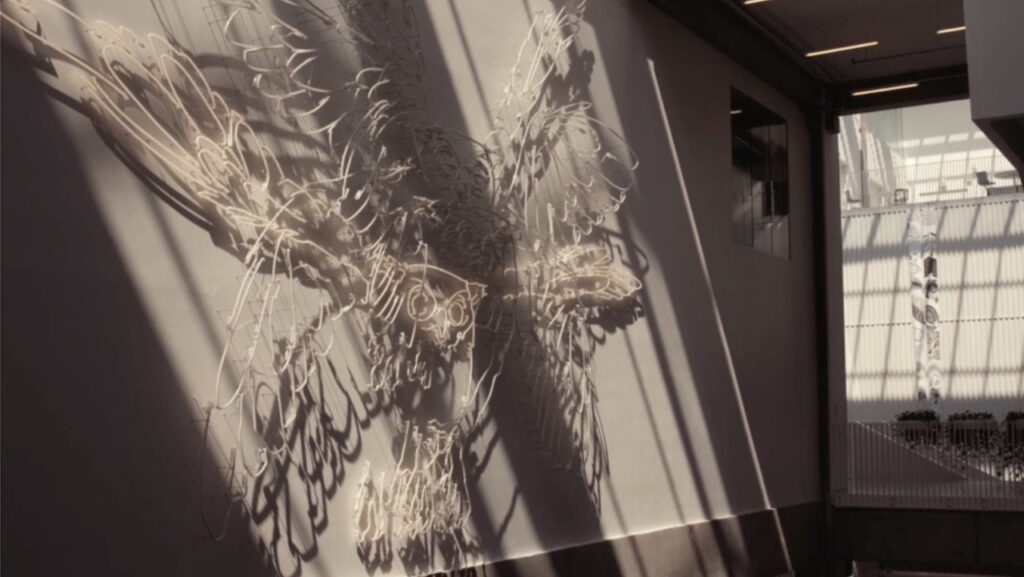
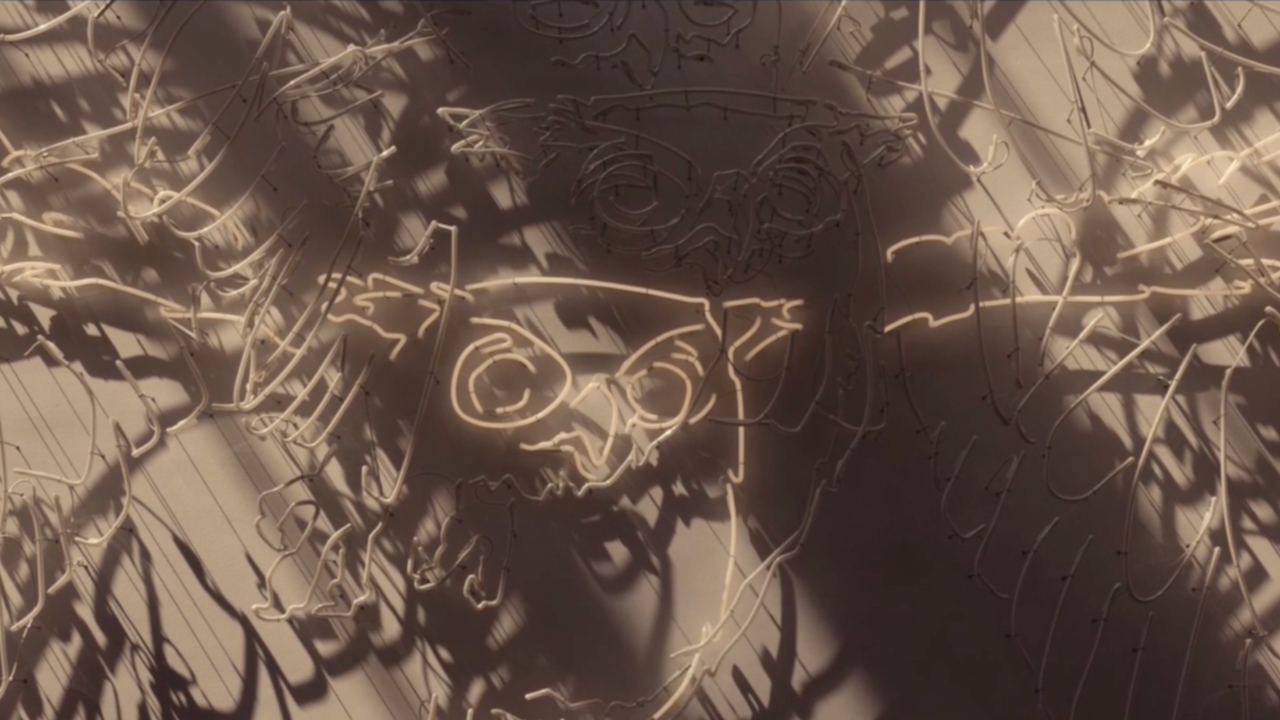

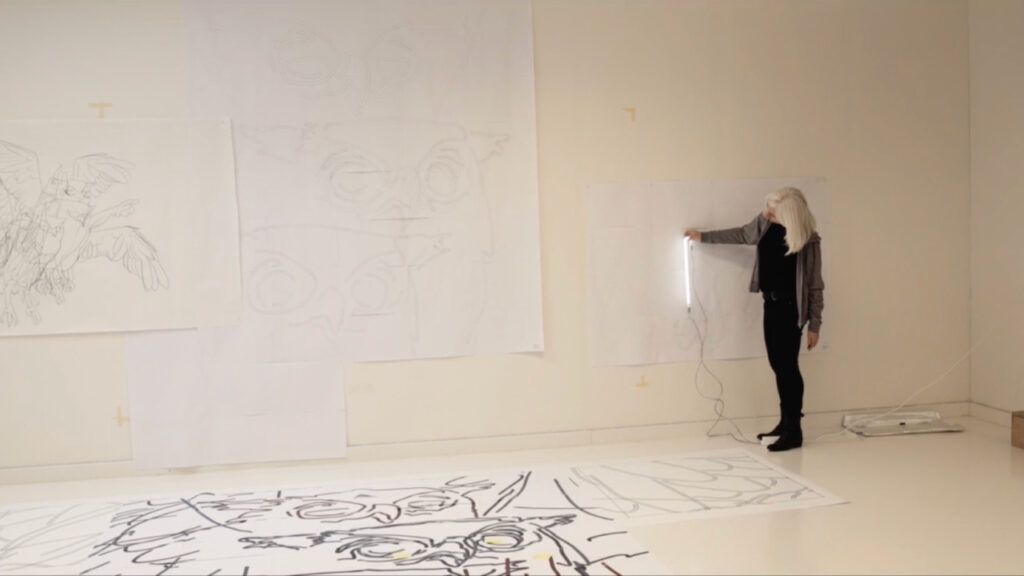
Adapt to Survive: Notes from the Future
Hayward Gallery, Southbank Centre, London
April 18 – June 11, 2018
Group Exhibition
with Andreas Angelidakis, Julian Charrière, Youmna Chlala, Rainer Ganahl, Marguerite Humeau, Ann Lislegaard and Bedwyr Williams
Engaging with the idea that adaptation is necessary for survival, the artists present films, sculpture and text-based works that explore ideas of change and hybrid forms of architecture, biology, technology, and language.
Taking its title from the phrase adopted recently by the business sector, Adapt to Survive explores the idea that Darwin’s theory of evolution can serve as a metaphor for a future-facing strategy for survival and growth. In recent years, the phrase ‘adapt to survive’ has been adopted by the entrepreneurial start-ups and professional ‘change-makers’, suggesting a fast-paced form of agency that is antithetical to Darwin’s concept of natural selection.
In recent decades, futurology has become established as an area of research combining game theory, statistics, and speculation. Responding to these cultural shifts, the artists in Adapt to Survive make educated guesses about our society’s evolution and progression, but equally convey uncertainty and skepticism about our accelerating patterns of growth and consumption.
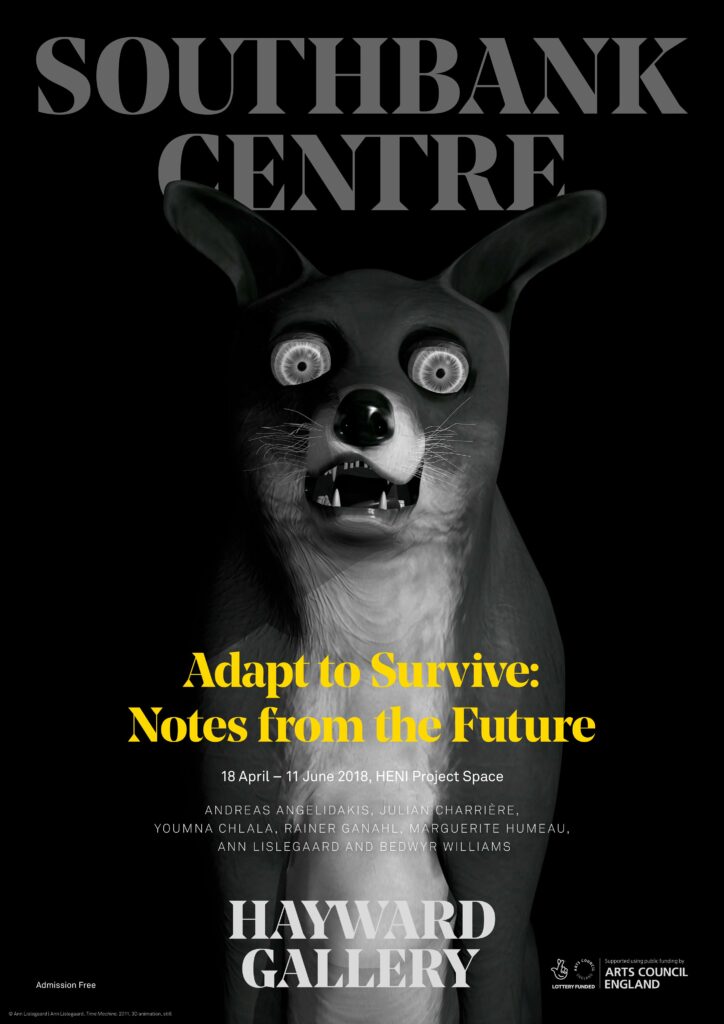
Hybrids and Bastards
Shanaynay, Paris
March 18 – April 16, 2017
Solo Exhibition
Artificial. Artificial?
Hybrids and Bastards is a survey of sorts, one that doesn’t neccesarily show each work to its best advantage. Instead, they seem to be working in collusion. The exhibition exploits the two-room architecture of Shanaynay and articulates various excitements of anti-hierarchical conditions.
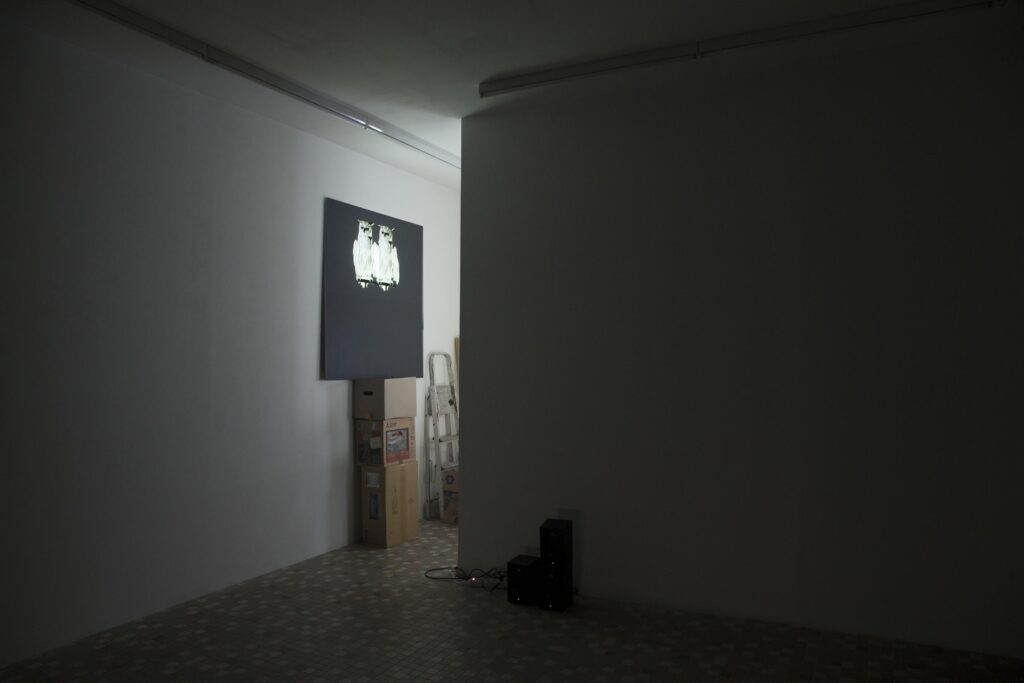
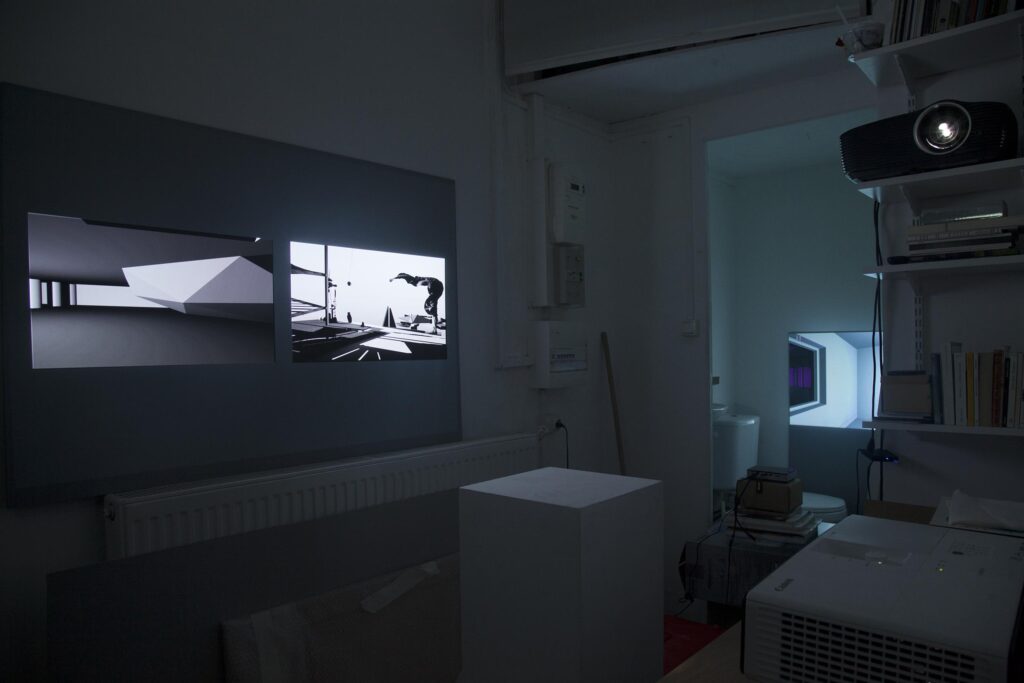
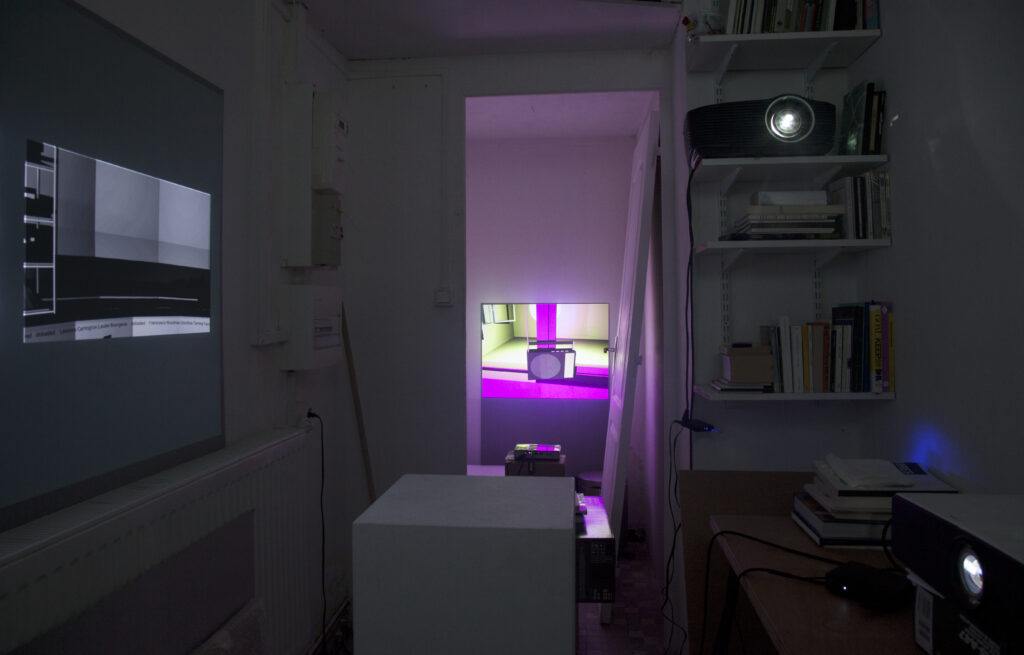
Uncertain Reflections
OR Gallery, Vancouver
February 4 – April 8, 2017
Ann Lislegaard, Neil Wedman
In addition, no one today remembered why the war had come about or who, if anyone, had won. The dust which had contaminated most of the planet’s surface had originated in no country and no one, even the wartime enemy, had planned on it. First, strangely, the owls had died. At the time it had seemed almost funny, the fat, fluffy white birds lying here and there, in yards and on streets; coming out no earlier than twilight as they had while alive the owls escaped notice. Medieval plagues had manifested themselves in a similar way, in the form of many dead rats. This plague, however, had descended from above.
– Philip K. Dick, Do Androids Dream of Electric Sheep?
The Or Gallery is pleased to present a new exhibition featuring the work of Ann Lislegaard (Copenhagen/New York) and Neil Wedman (Vancouver). Uncertain Reflections features Lislegaard’s video installation Oracles, Owls… Some Animals Never Sleep (2012-2014) and Wedman’s House of Mirrors #1, #2, and #3.
Lislegaard and Wedman’s respective works in this exhibition employ empty mirrors and doubling – subjects that have long been associated with fascination and foreboding, from monstrous doppelgängers to portals that depict hidden aspects of our character, or some future – often calamitous – event. Mirrors also hold the power to obfuscate, distort and confuse.
Oracles in antiquity were intentionally vague and obtuse so as to avoid precise predictions that were less likely to come true. As Lislegaard has remarked: “Oracles are entities that serve as portals to hidden worlds, connecting to what is buried beneath the surface of things.” As such, they were consulted for guidance regarding important matters and events. Lislegaard’s oracle owls pronounce aphorisms and excerpts from the I-Ching as they are interrupted by digitised noise and dialogue taken from Blade Runner, Ridley Scott’s 1982 film adaptation of Philip K. Dick’s 1968 novel Do Androids Dream of Electric Sheep? Their message is garbled, fragmented and confounding.
While mirrors are purported to reflect reality, when assembled in a maze their ability to distort the space they occupy is compounded. The house of mirrors (or “mirror maze”) is a puzzle that has roots in late 19th century Europe, first patented by Gustav and Louis Castan of Berlin. Over the course of the 1890s through the 20th century, halls of mirrors became a mainstay of world fairs and traveling carnivals. The ubiquity of such attractions and their ability to confound human senses make them popular signifiers of physical endangerment and especially mental distress.
Uncertain Reflections marks the sixth of a series of exhibitions and projects curated and produced by Mark Lanctôt and Jonathan Middleton under the title The Troubled Pastoral.
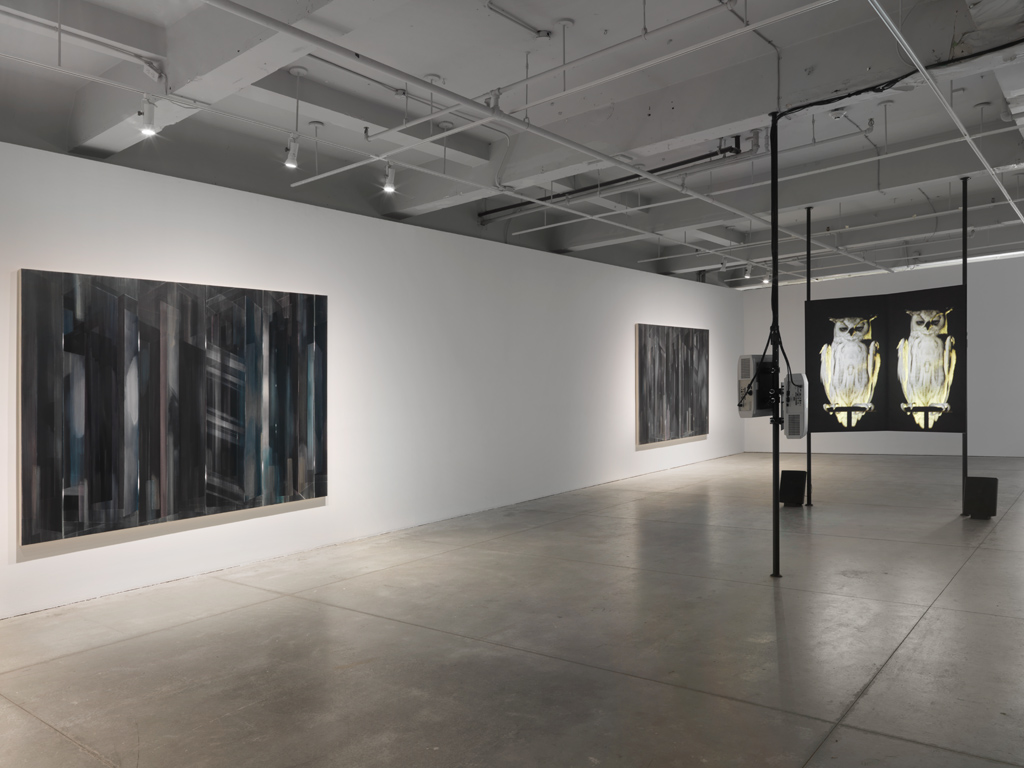
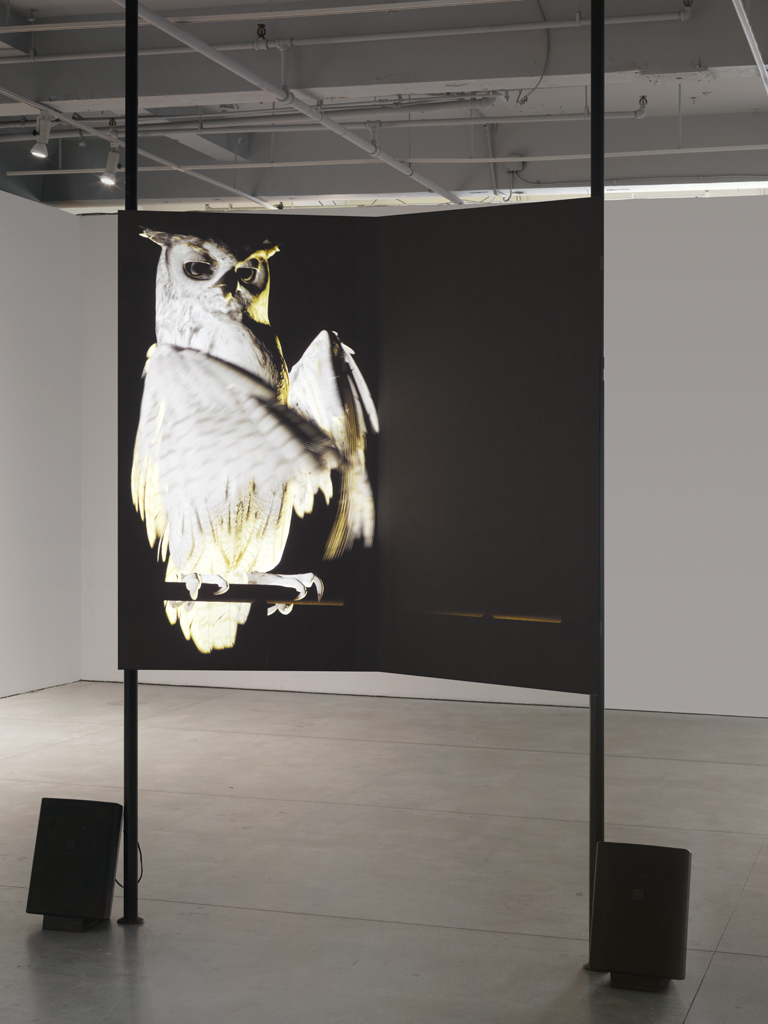
Spinning and Weaving
Overgaden Institute of Contemporary Art, Copenhagen
November 12, 2016 – January 8, 2017
Solo Exhibition
Lislegaard’s work is often based on science fiction, which she uses as an alternative approach to language, gender roles, identity, and the social and psychological structures through which we understand the world. For Lislegaard, science fiction provides a laboratory where ideas can be tested and new alternate scenarios can be created.
Her exhibition at Overgaden is comprised entirely of new works. A central piece is the 3D animation Spinning and Weaving Ada where a spider spins a psychedelic web of the letters ADA LOVELACE. Ada Augusta Lovelace was a mathematician who in the first part of the 18th century wrote the algorithms that came to form the basis of the world’s first software and computer. She is today seen as not only a pioneer in computer technology, but also as a forerunner of the development of the internet. The animation is an homage to Ada Lovelace and the feminist qualities that are associated with spinning and weaving: forming patterns and shapes with threads, connecting, creating nets and networks.
The point of departure for the sound and light installation, Shadows of Tomorrow, is the science fiction film Contact in which a female scientist after years of searching and listening captures sounds from outer space. These sequences of sounds and codes are perceived as a language from an unknown entity wishing to make contact. Using this science fiction film, Lislegaard has created a vocabulary of manipulated sound passages that are re-recorded with a human beatboxer into a new and abstract language. The soundtrack is played out in the installation in several sequences together with multiple lights: an algorithm prompts the coloured lights to switch on and off. Performed through the beatboxer’s body and with resonance in the installation, Lislegaard’s Shadows of Tomorrow proposes hidden messages and future events. With the use of an alternative vocabulary and sounds channelled through the body, the beatboxer voices the unknown.
Selected Press:
“Ann Lislegaard at Overgaden, Copenhagen”, Yuki Higashino, springerin, issue 2 (2017)
“19. december”, Sanne Kofoed, Kunstkritikk.com, (2017)
“Netværkets mørke hjerte,” Louise Steiwer, Weekendavisen (2016)
“I øjenhøjde med algoritmen”, Pernille Lystlund Matzen, Information (2016)
“Lislegaard væver en fortælling om sprog og kommunikation,” Torben Weirup, Berlingske (2016)
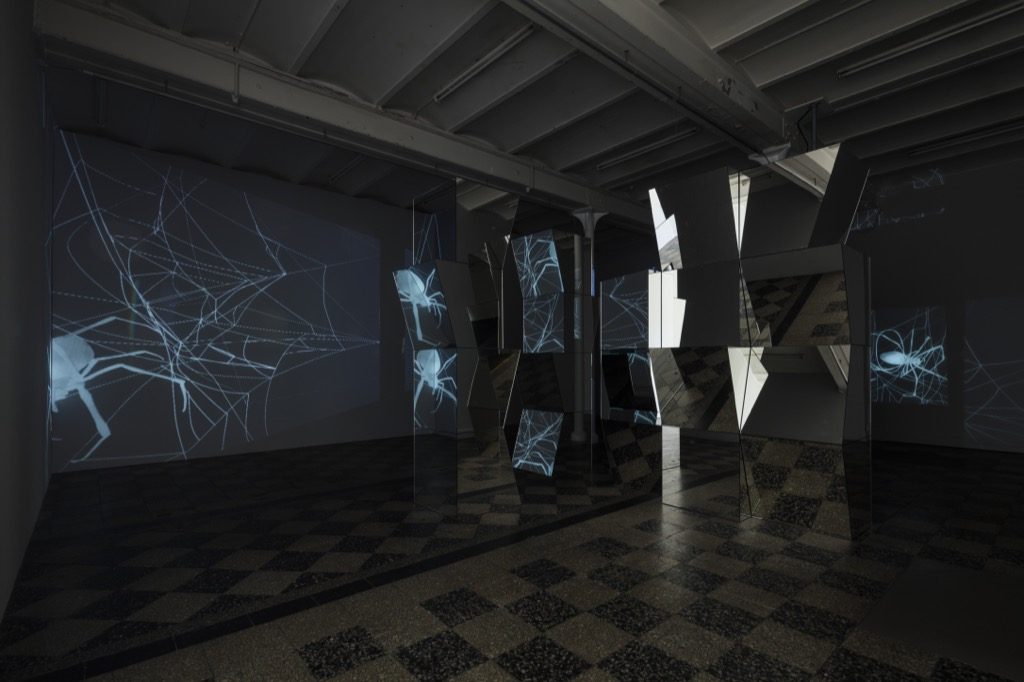
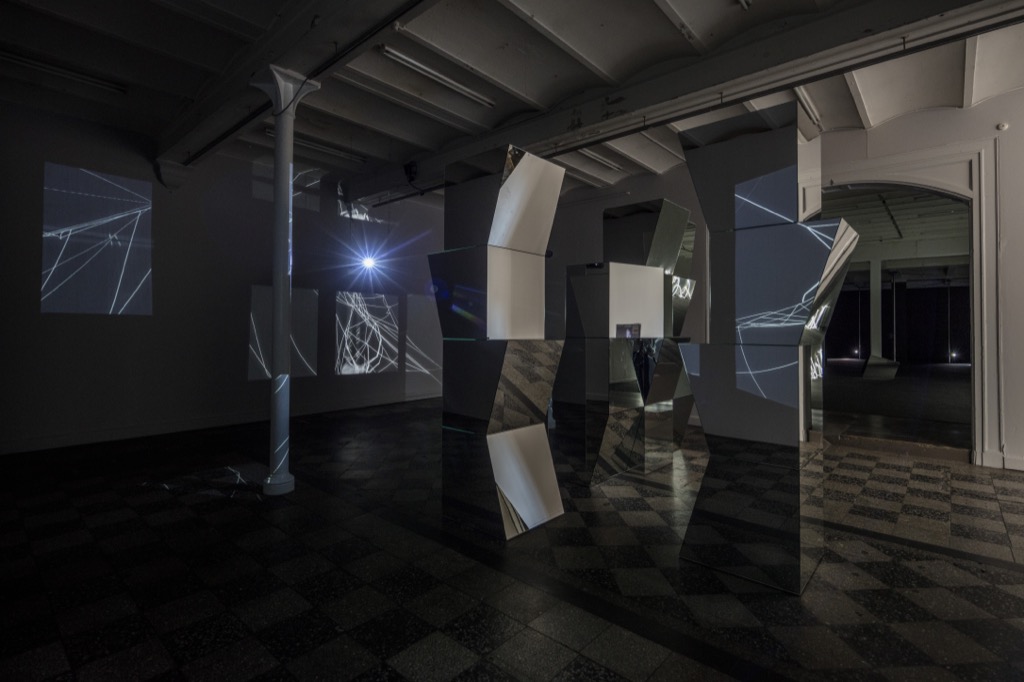
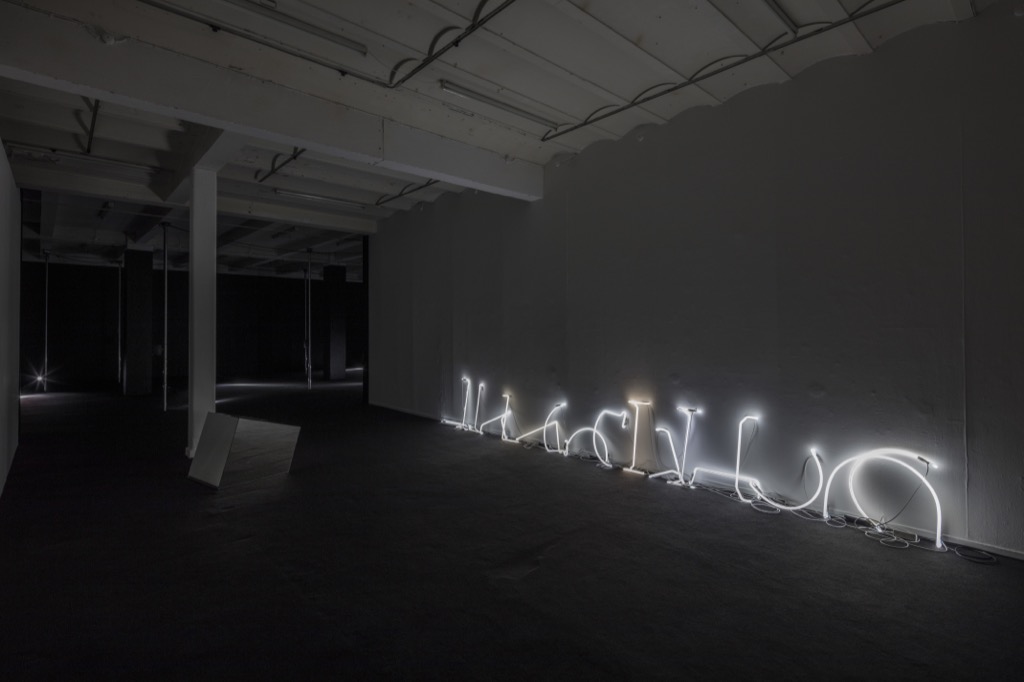
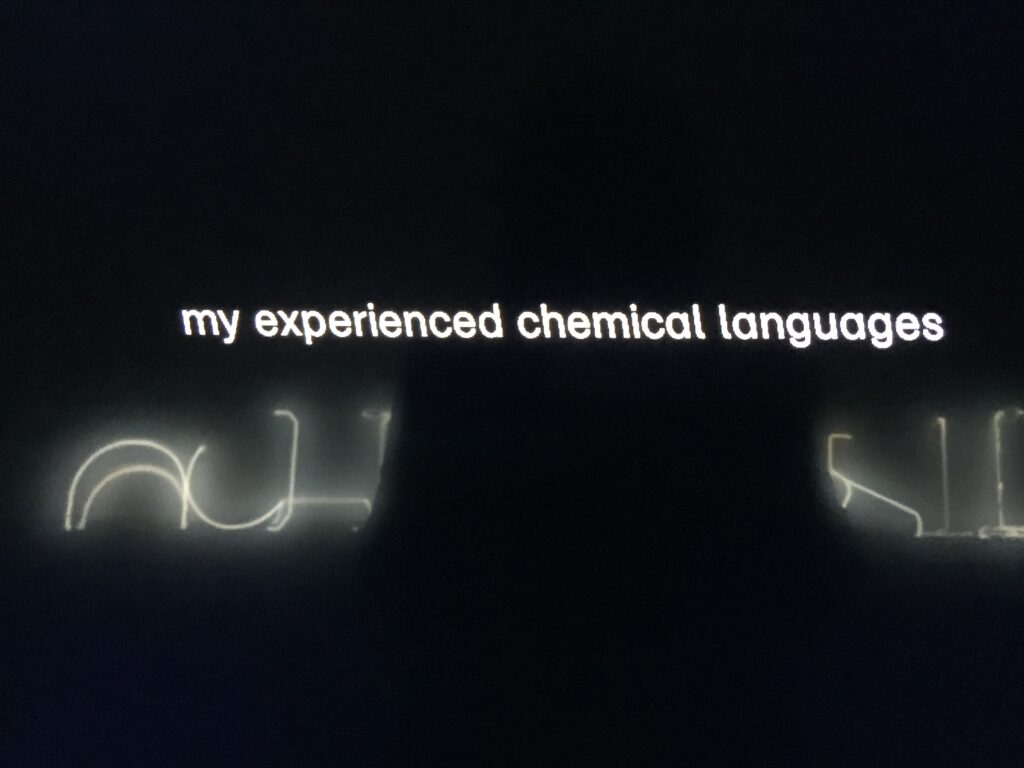
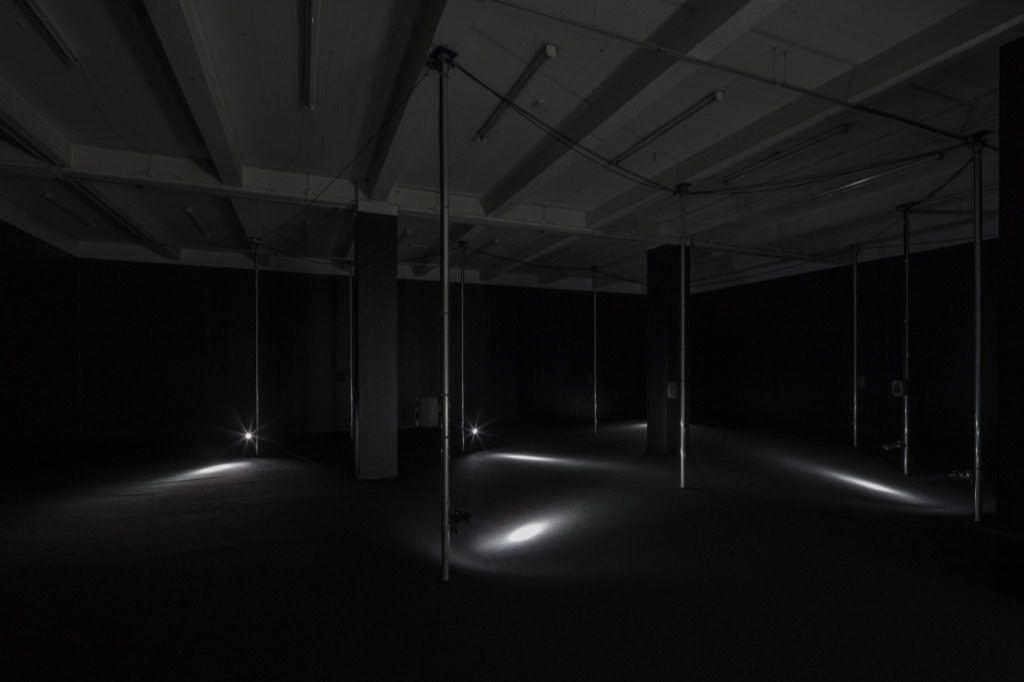
Pollen Messages
Viborg Kunsthal
August 26 – November 27, 2016
Solo Exhibition
Selected Press:
“Forestillinger om fremtiden”, Trine Rytter Andersen, kunsten.nu (2016)
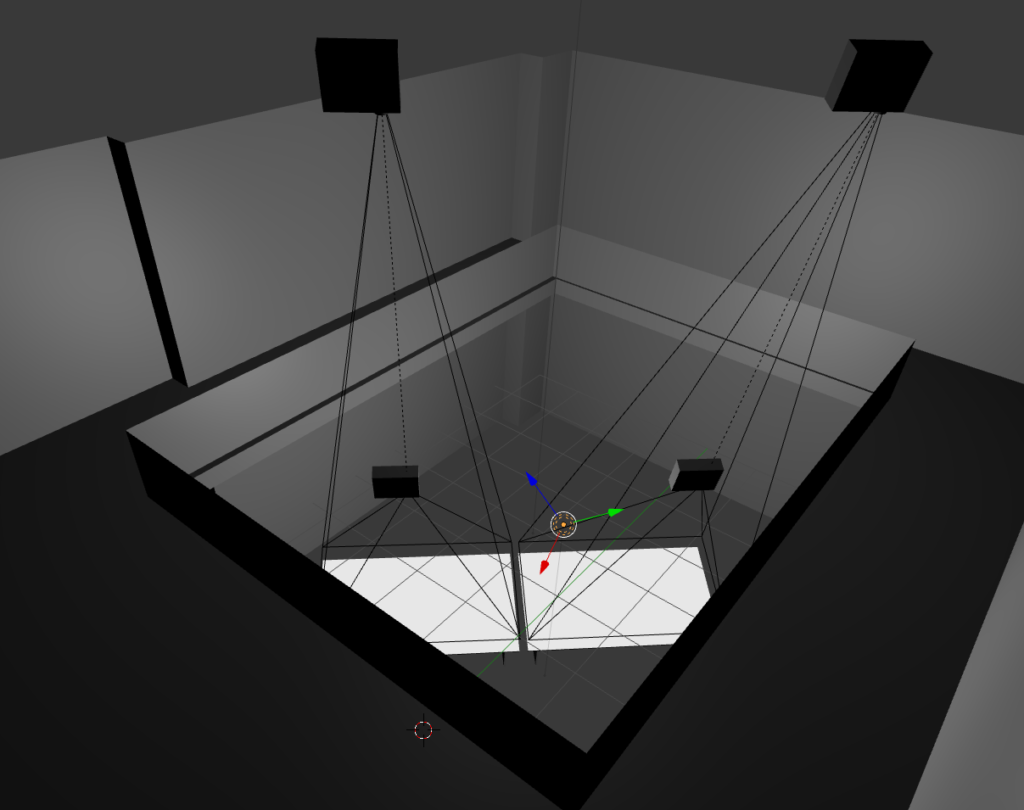
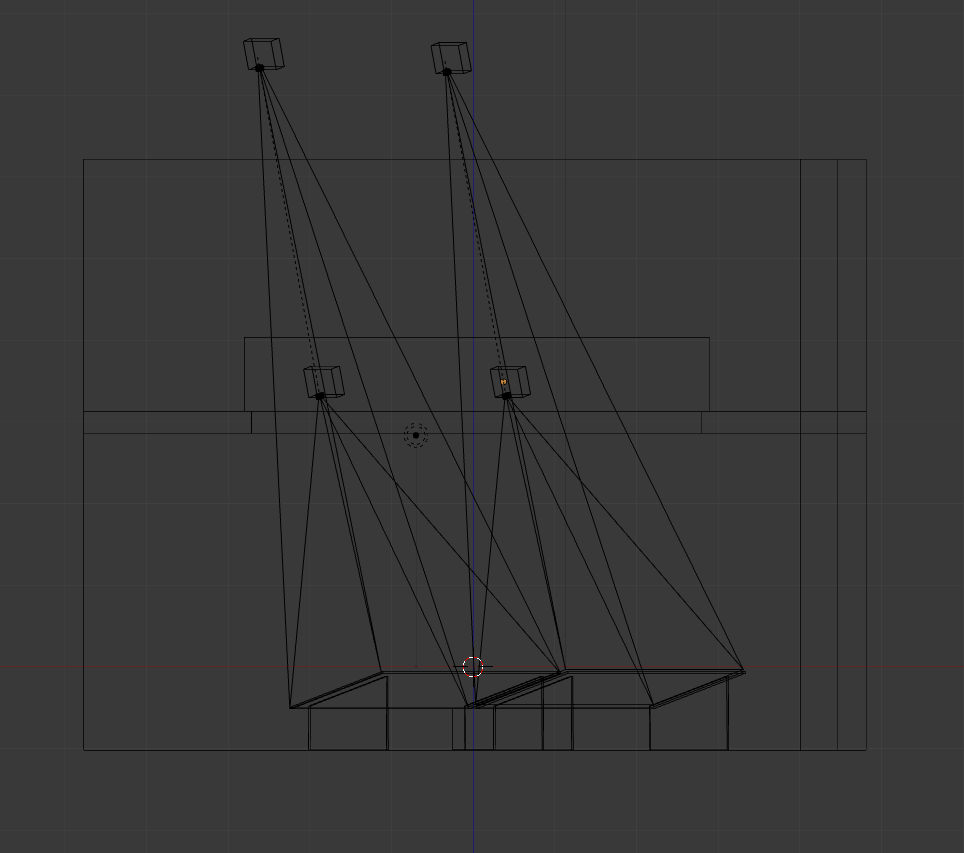
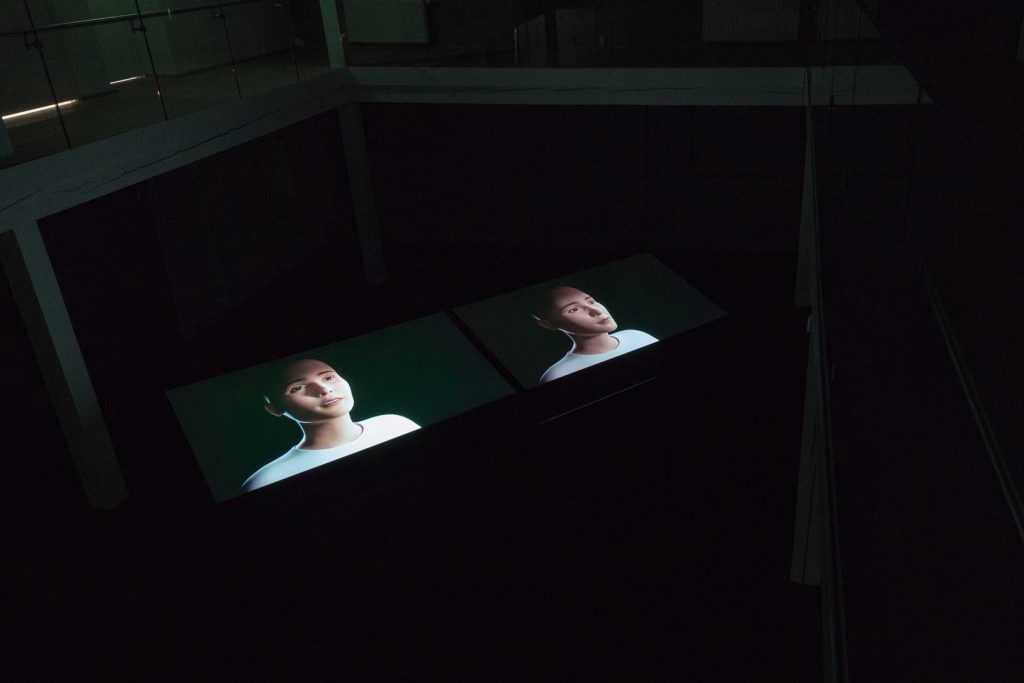
Shadow Ya Ya
Kyoto Art Center
October 27 – December 25, 2015
Solo Exhibition
Kyoto Art Center is pleased to announce a solo exhibition by Ann Lislegaard. Ann Lislegaard’s 3D animation video installations were on view, to much acclaim at PARASOPHIA: Kyoto International Festival of Contemporary Culture 2015.
In Ann Lislegaard’s work, experiences of simulated spheres are created by means of interdisciplinary hybrids and connections – between architecture and cinema, between fictional narratives, and between human beings, machines, and animals. In this context, which draws on the historical residues of culture and technology while building on feminist gender theories, the boundaries between the real and the imagined are blurred. Concrete and simulated worlds interpenetrate and are reorganized within one another, a world within a world within a world. Lislegaard’s simulations and animated works create a centrifugal effect by means of sound, light, and image.
Science fiction writers, and in particular Samuel R. Delany, J.G. Ballard, and Ursula K. Le Guin, may be viewed as a sort of generator or catalyst for creating simulated worlds, extreme states that seem to herald the disintegration of the very texture of civilization, or dystopian representations of a nature that exists beyond “place.” The exploration of these simulated worlds provokes a sense of estrangement, as well as a new reading of our own present.
For this exhibition, she will present her animations Time Machine (2011) and Crystal World (after J.G. Ballard) (2006) both of which are exhibited for the first time in Japan.
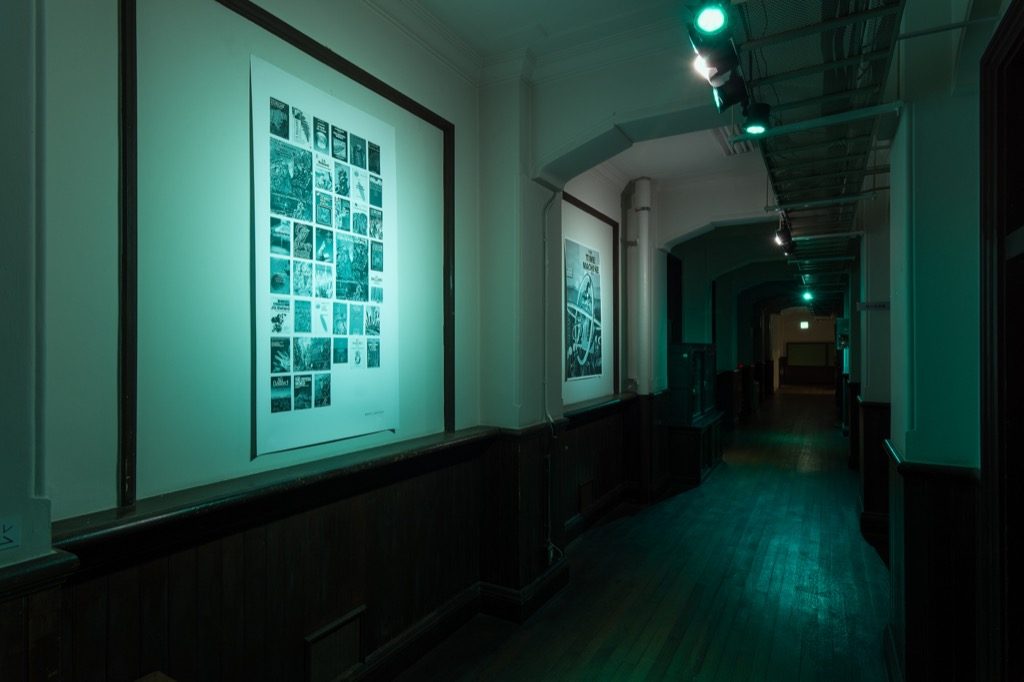
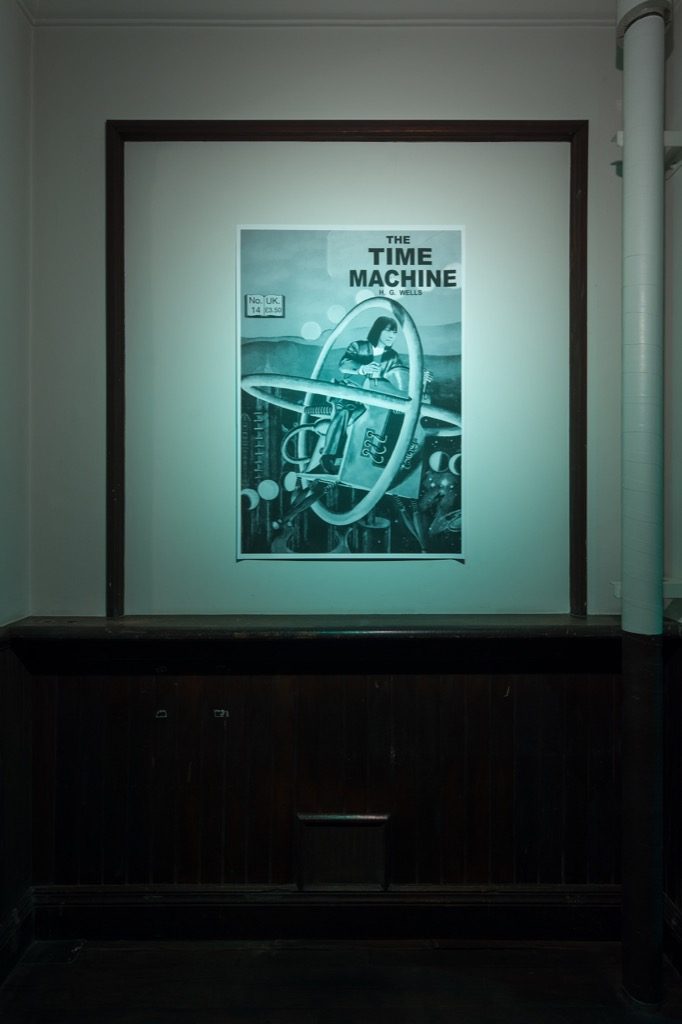
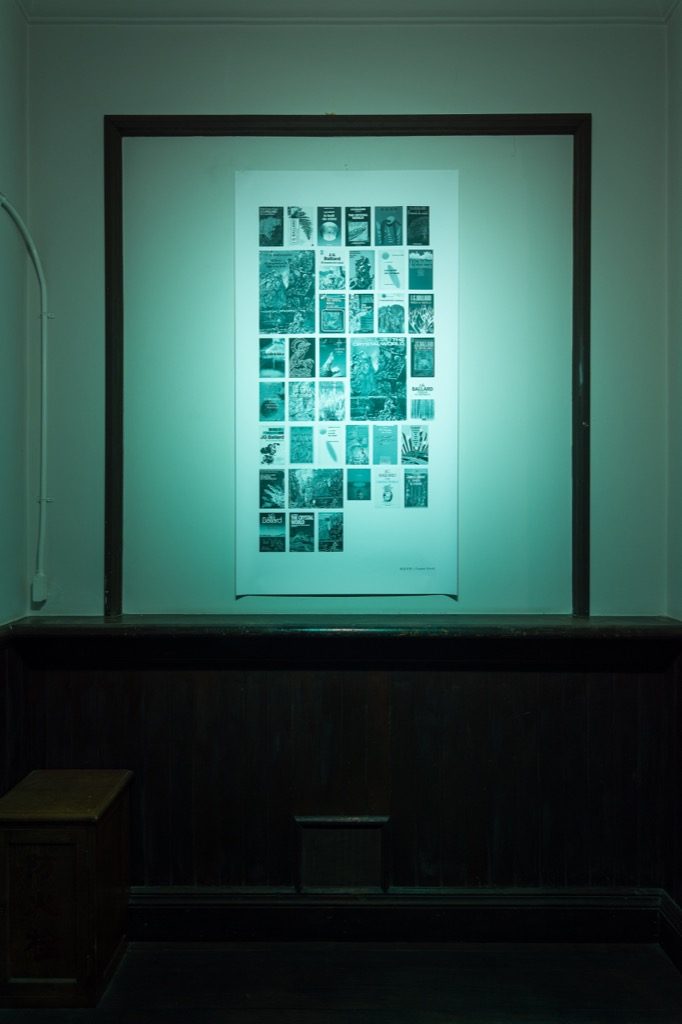
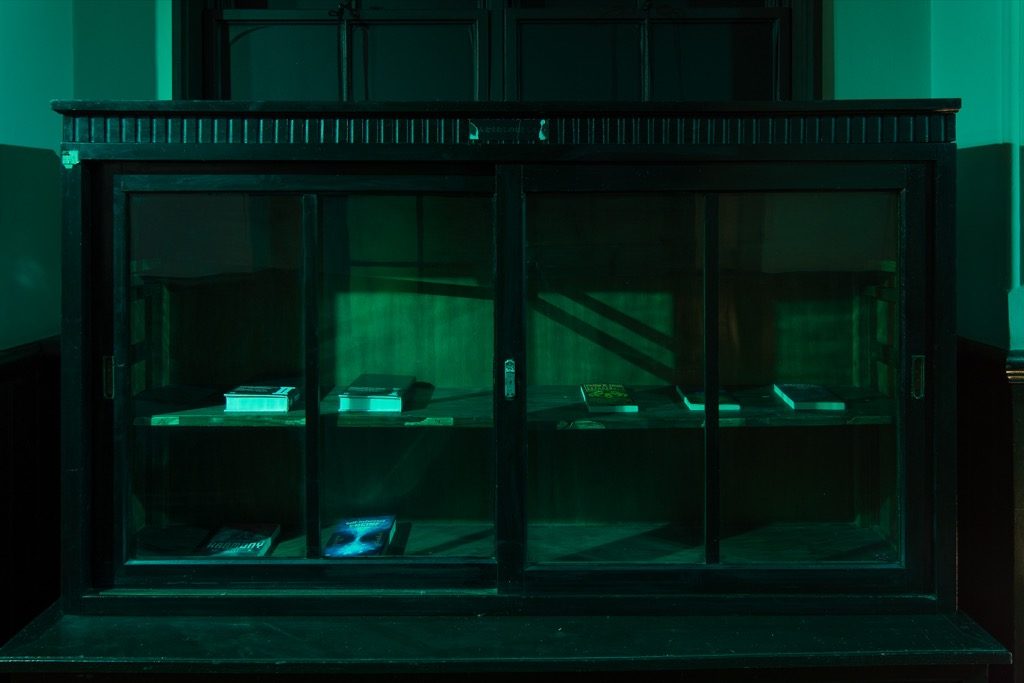
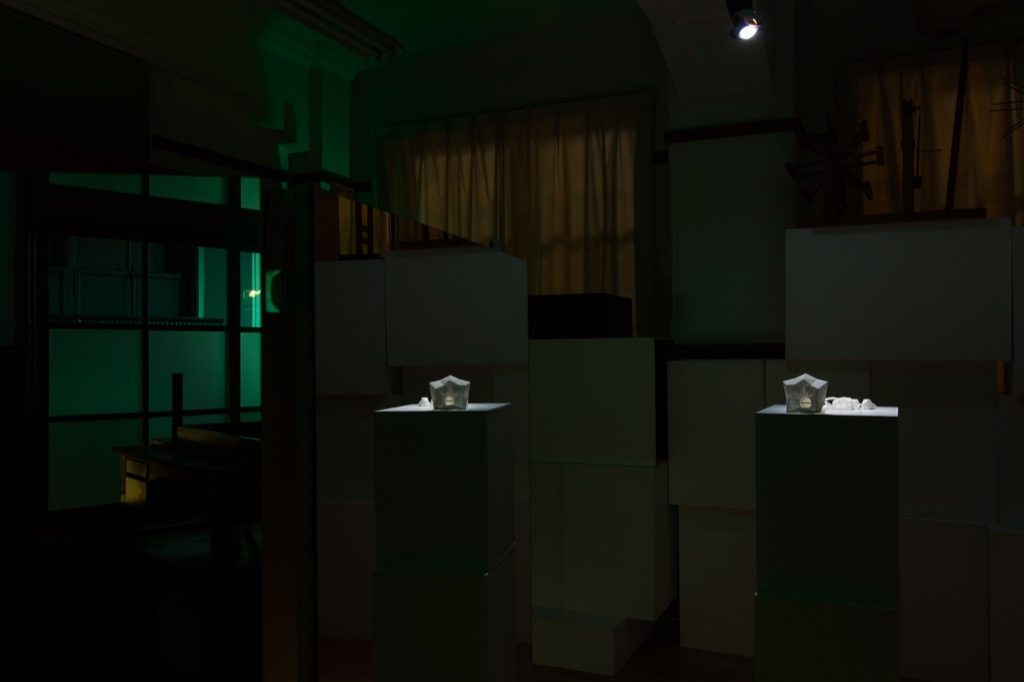
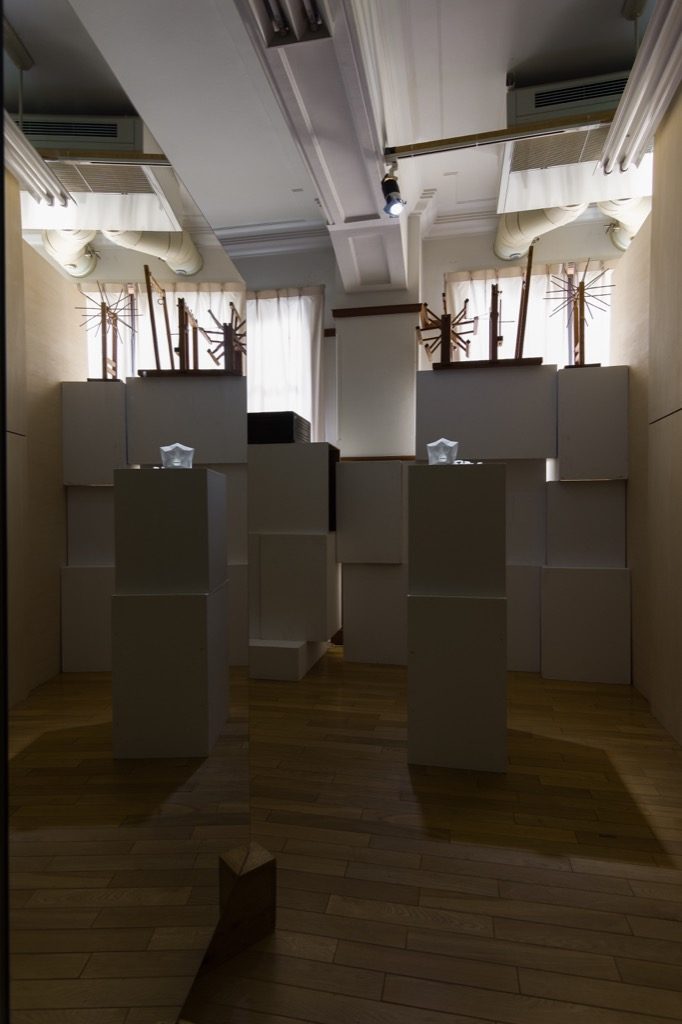
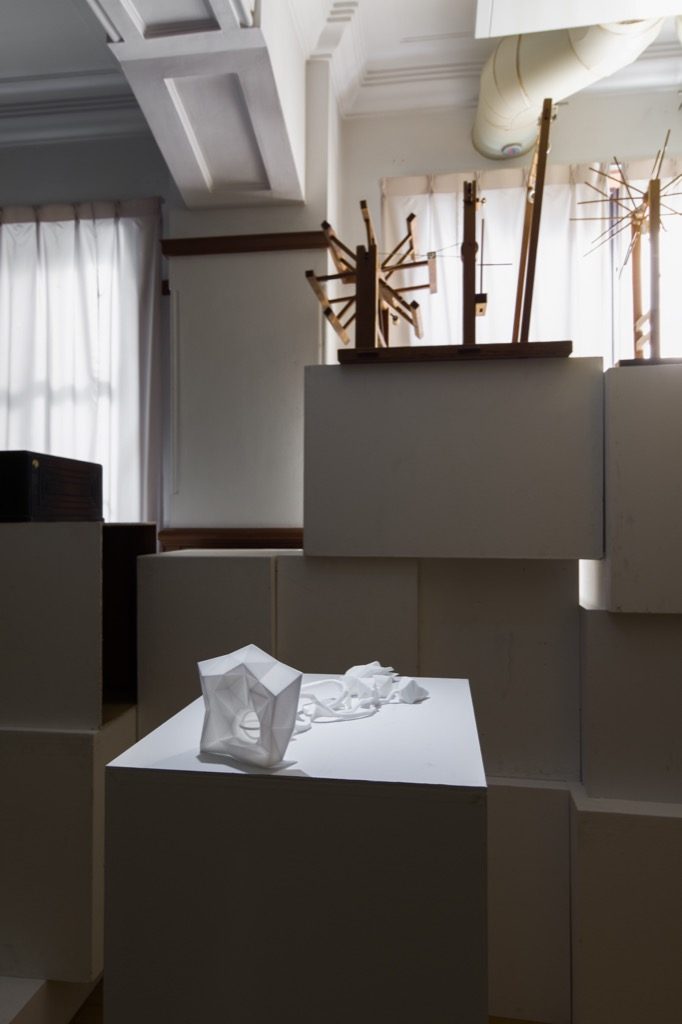
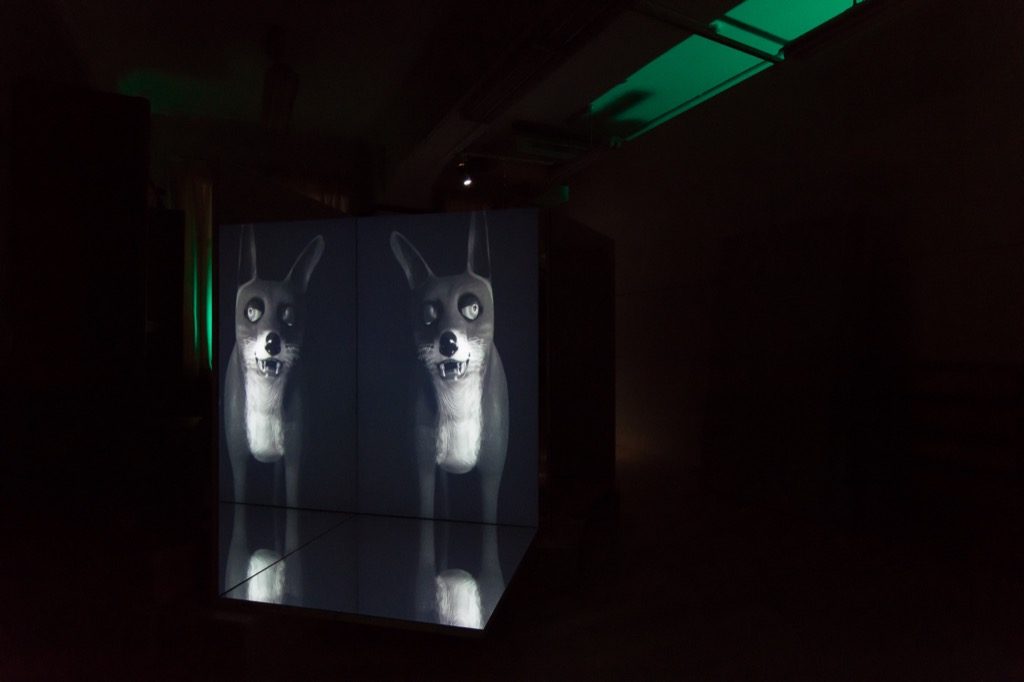
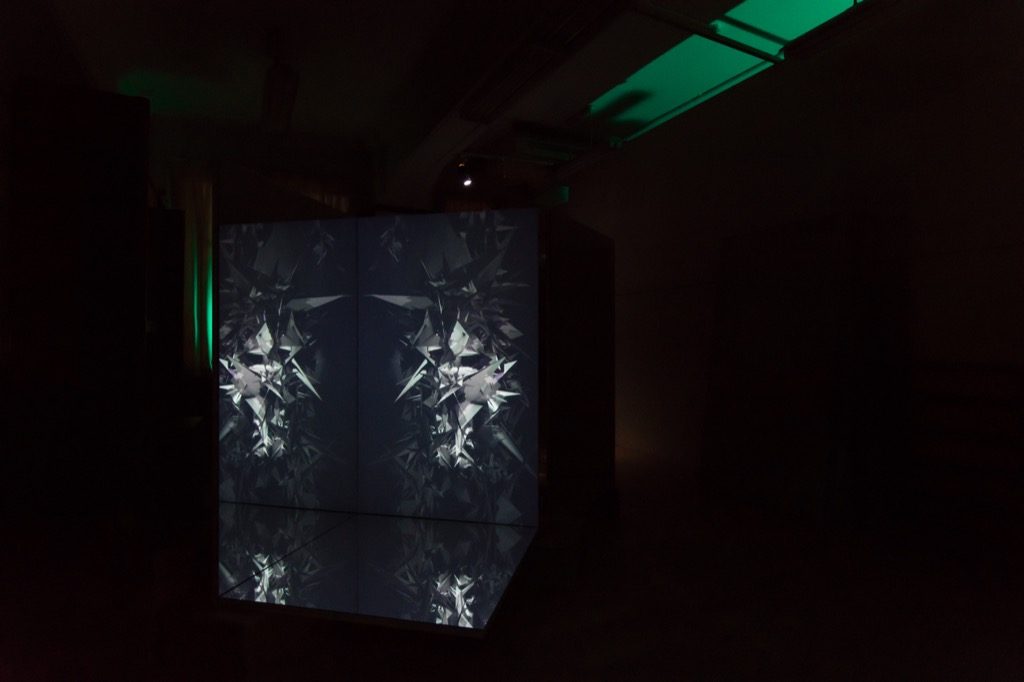
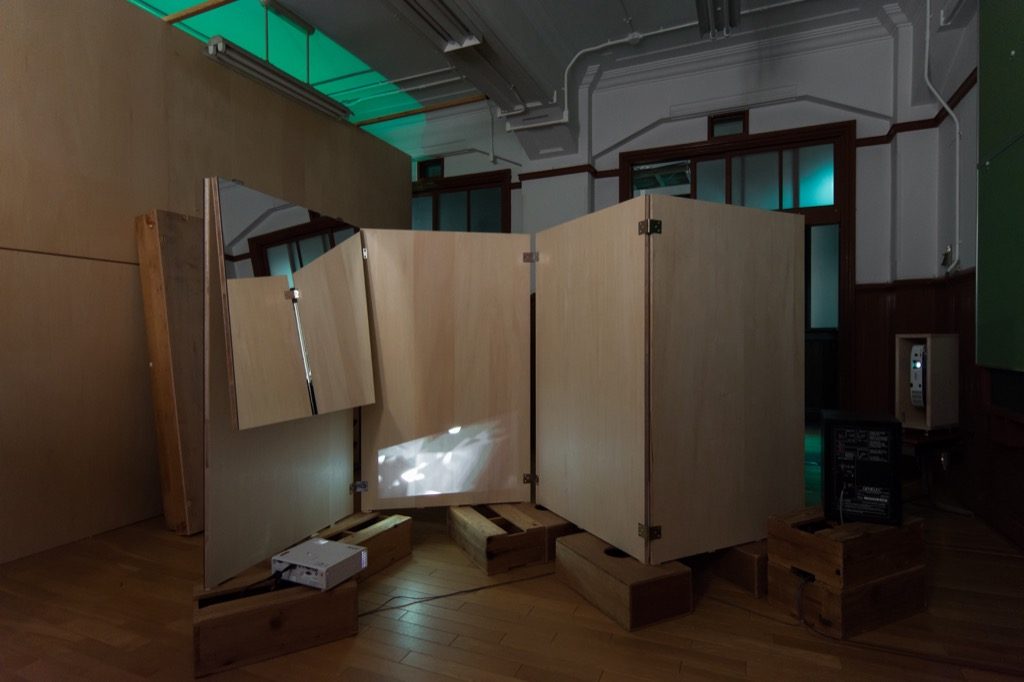
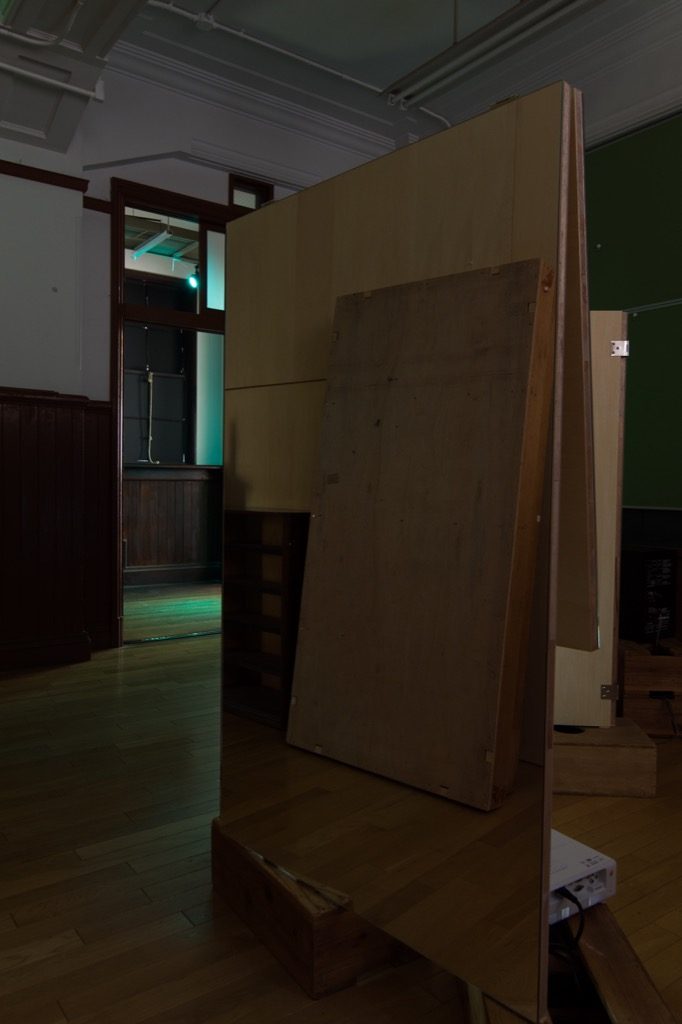
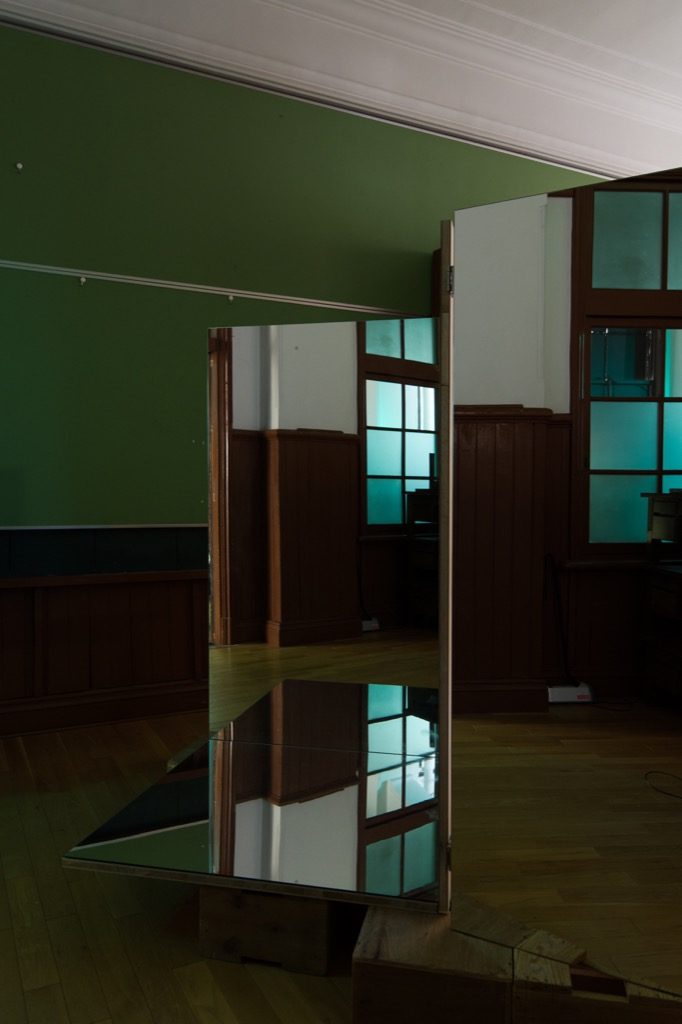
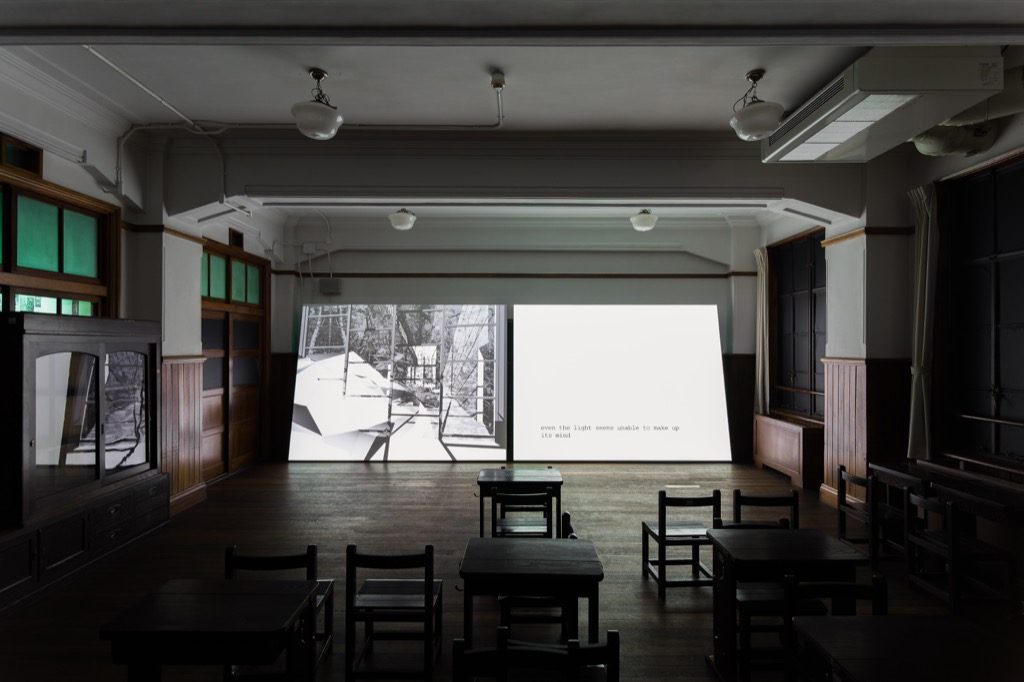
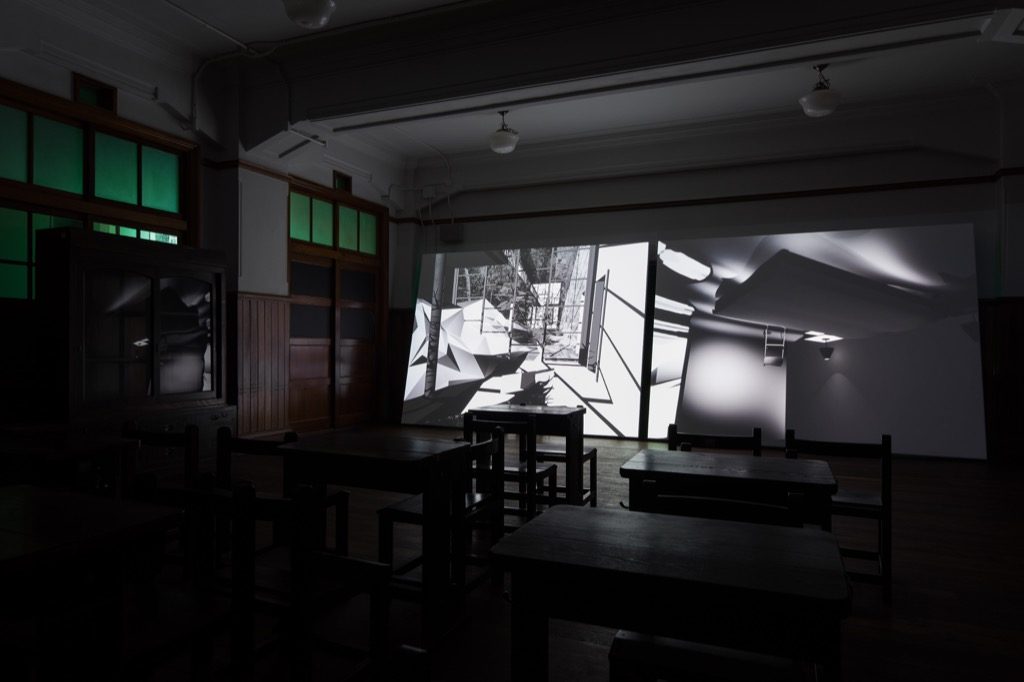
Paraspace
Tel Aviv Museum of Art, Tel Aviv, Israel
June 10, 2015 – January 16, 2016
Solo Exhibition
In Ann Lislegaard’s work, experiences of simulated spheres are created by means of interdisciplinary hybrids and connections — between architecture and cinema, between fictional narratives, and between human beings, machines, and animals. In this context, which draws on the historical residues of culture and technology while building on feminist gender theories, the boundaries between the real and the imagined are blurred. Concrete and simulated worlds interpenetrate and are reorganized within one another, a world within a world within a world.
Lislegaard’s simulations and animated works create a centrifugal effect by means of sound, light, and image — for, as Maurice Merleau- Ponty states, “To conceive space, it is in the first place necessary that we should have been thrust into it by our body.”
Science fiction writers, and in particular Samuel R. Delany, J.G.Ballard, and Ursula K. Le Guin, may be viewed as a sort of generator or catalyst for creating simulated worlds, and different identities as well as dystopian representations of a world that exists beyond “place.” The exploration of these simulated worlds provokes a sense of estrangement, as well as a new reading of our own present. In conversation, Lislegaard pursues twisting and multilayered trajectories, which unfold in the space between dreams and descriptions of reality. She talks about the avant-garde American filmmaker Maya Deren (1917–1961) — a dancer, choreographer, and photographer who created poetic, spiraling psychodramas that exceed familiar hierarchies of narrative and editing; the Italian-Brazilian revolutionary architect Lina Bo Bardi (1914–1922); the Cuban-Mexican interior designer Clara Porset (1895–1981); as well as women artists such as Kay Sage (1898–1963) or Eva Hesse (1936–1970), who studied (among other things) crystals and organic structures as a means for defining non-linear time. Lislegaard’s world is rooted in techno-sexual and gender evolutions, unfolding in the space between body and bio-technology, in the spirit of the “Cyborg Manifesto” published in 1985 by the scholar and critical thinker Donna Haraway — a feminist reading of technology in a world that blurs the boundaries between living creatures and machines. New technologies, Haraway argues, provide a theoretical and practical advantage in the context of gendered power relations, since the politics of the cyborg present technological symbiosis as a dynamic exploration, rather than merely as a male fantasy about “natural control” and the submission of nature, technology, and “the others.”
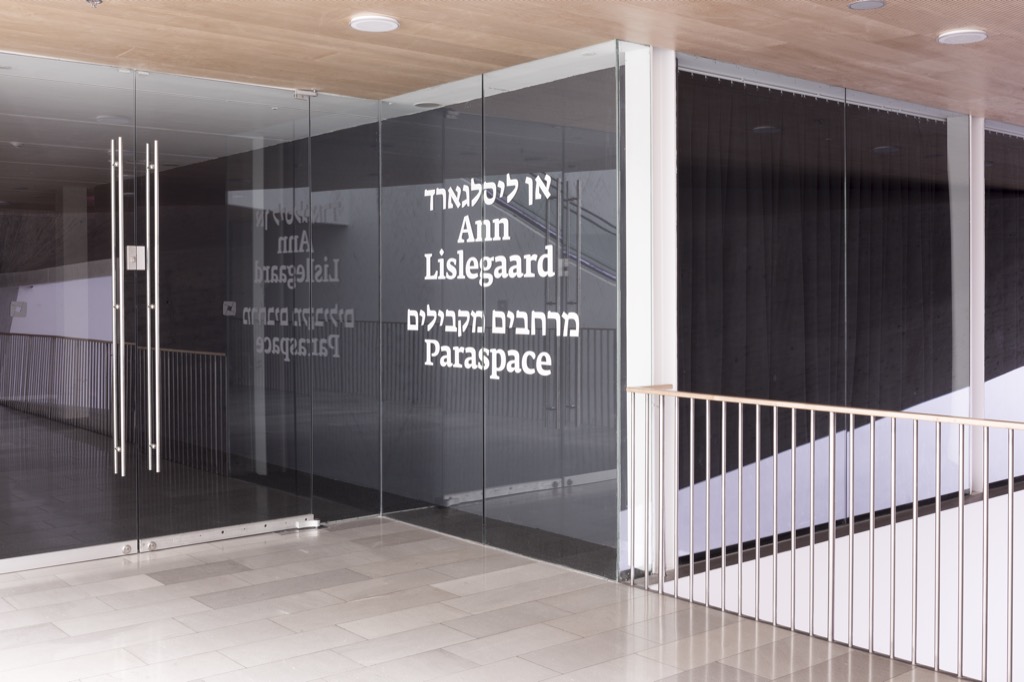
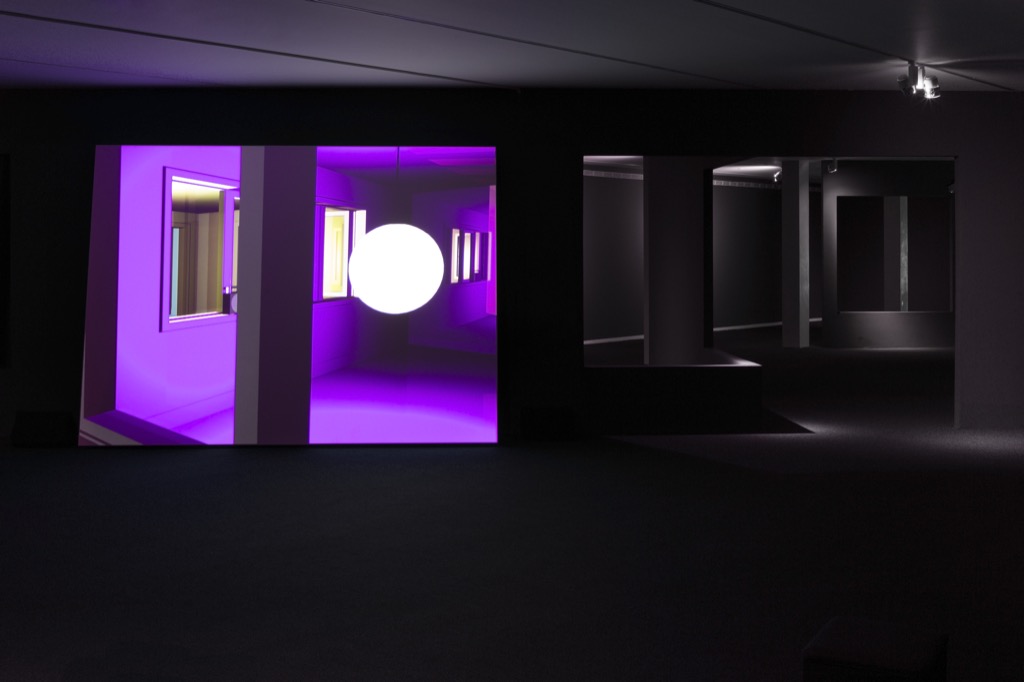
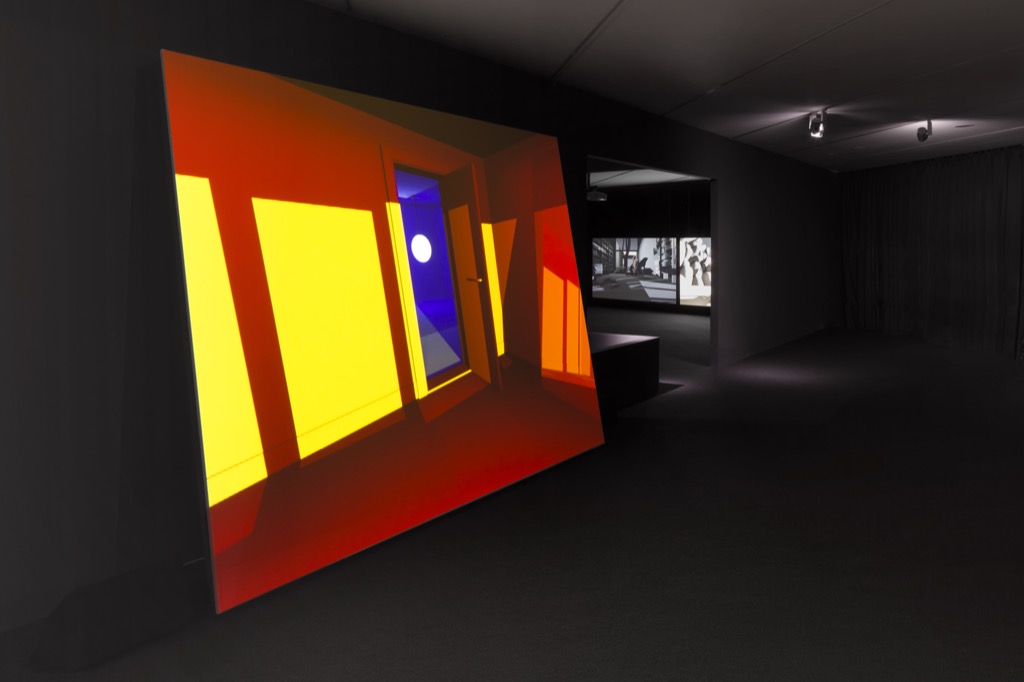
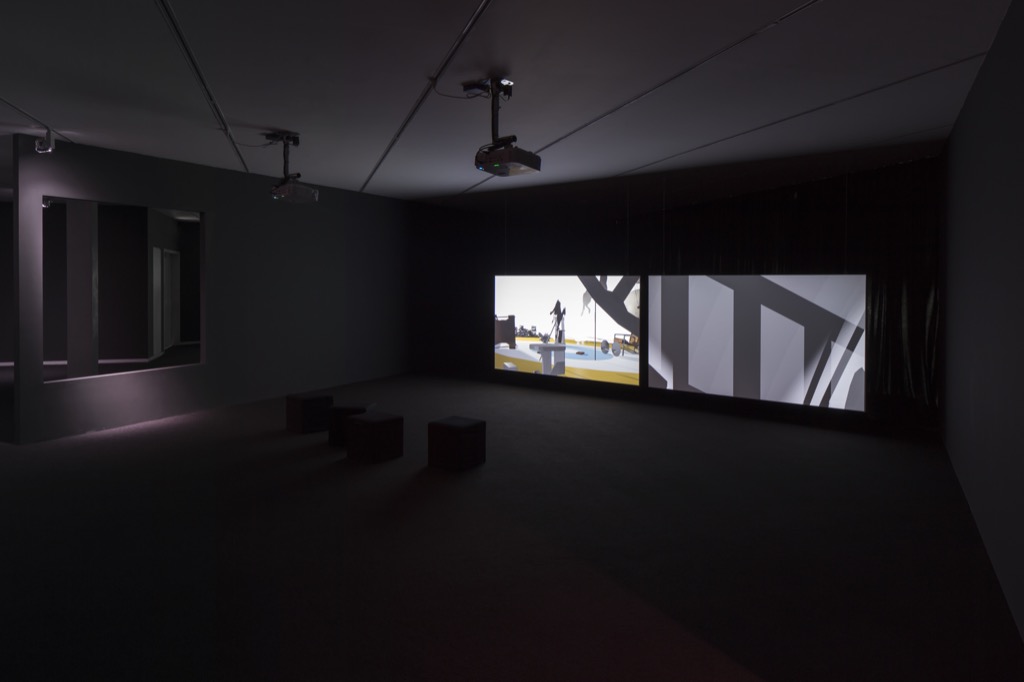
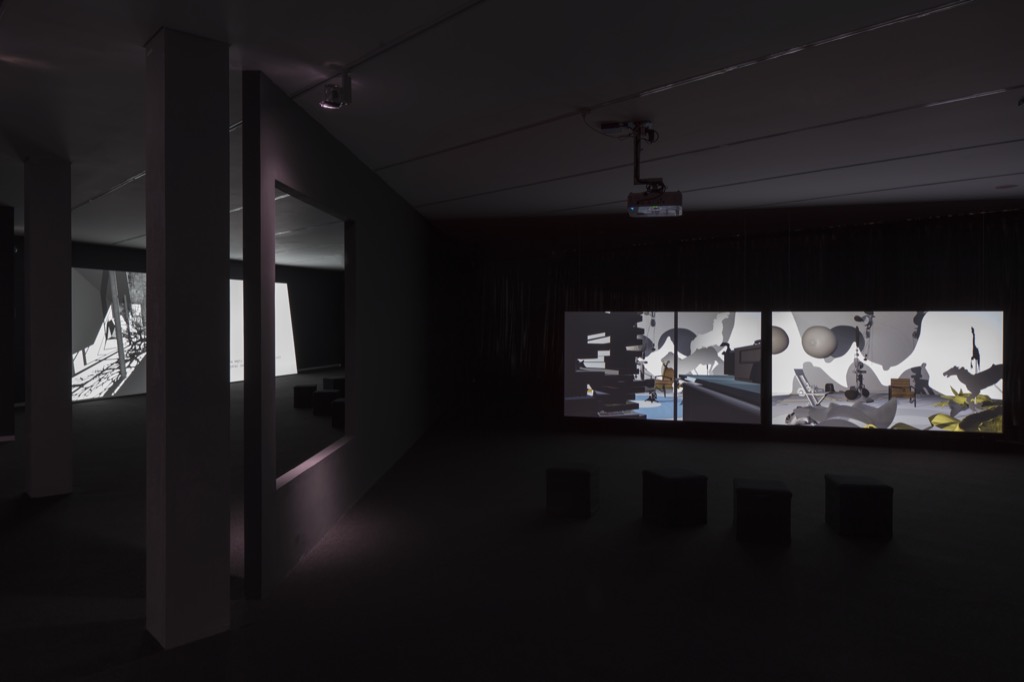
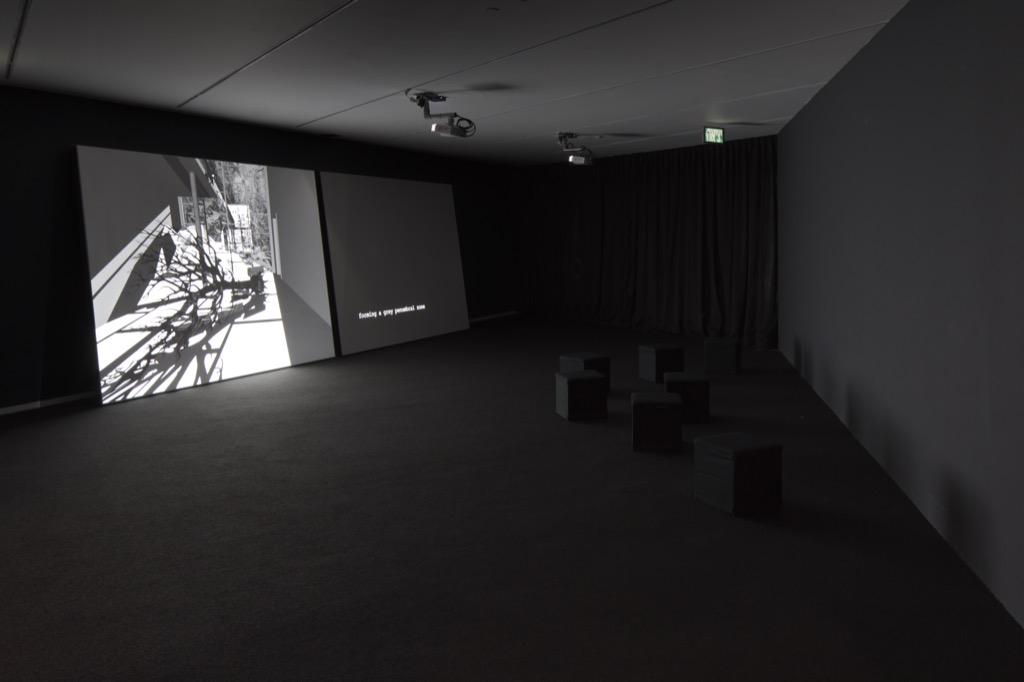
Parasophia
Kyoto International Festival of Contemporary Culture
March 7 – May 10, 2015
Curated by Shinji Kohmoto
Group Exhibition
with Lisa Anne Auerbach, Nairy Baghramian, Cai Guoqiang, Stan Douglas, Harun Farocki, Simon Fujiwara, Dominique Gonzalez-Foerster, Hong-kai Wang, Hedwig Houben, William Kentridge, Ragnar Kjartansson, Louise Lawler, Ann Lislegaard, Ahmed Mater, Aernout Mik, Yasumasa Morimura, Susan Philipsz, Florian Pumhösl, Pipilotti Rist, Arin Rungjang, Aki Sasamoto, Allan Sekula, Tadasu Takamine, Koki Tanaka, Ana Torfs, Rosemarie Trockel, Jean-Luc Vilmouth, Danh Vo, Xu Tan, Miwa Yanagi
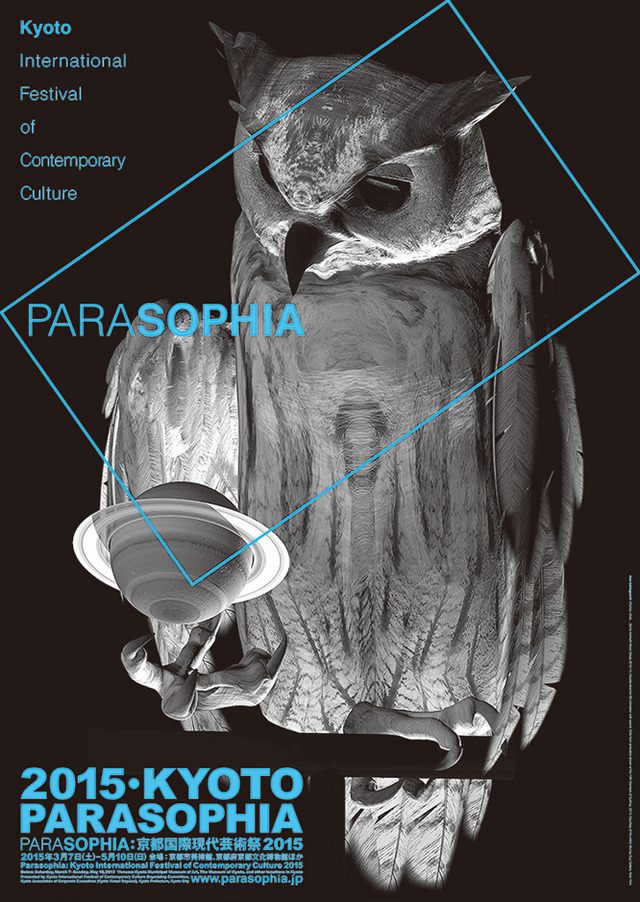
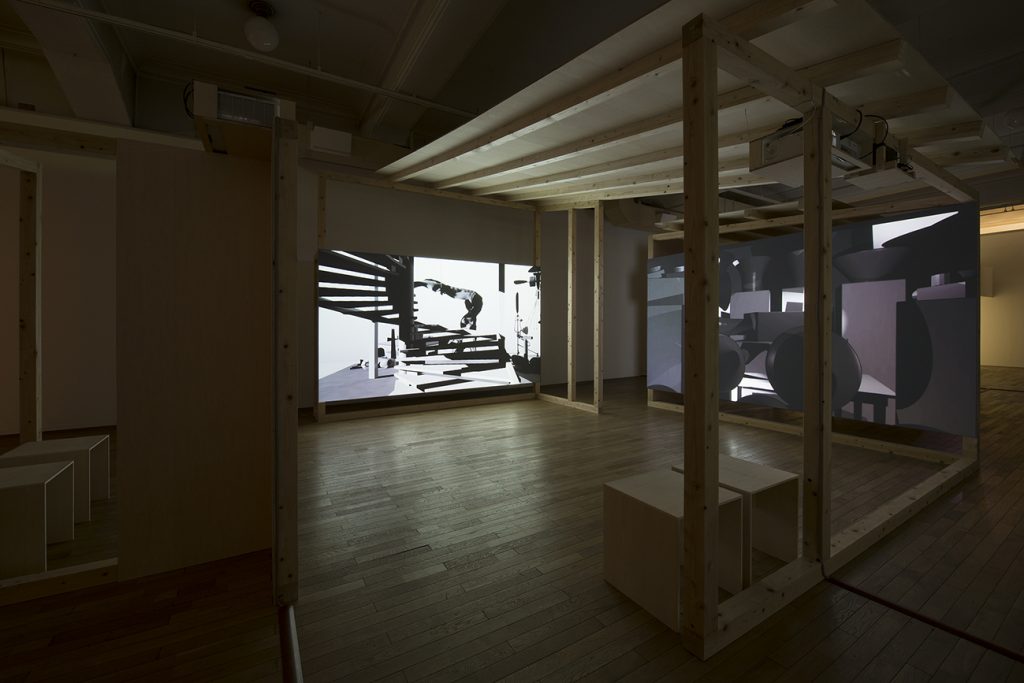
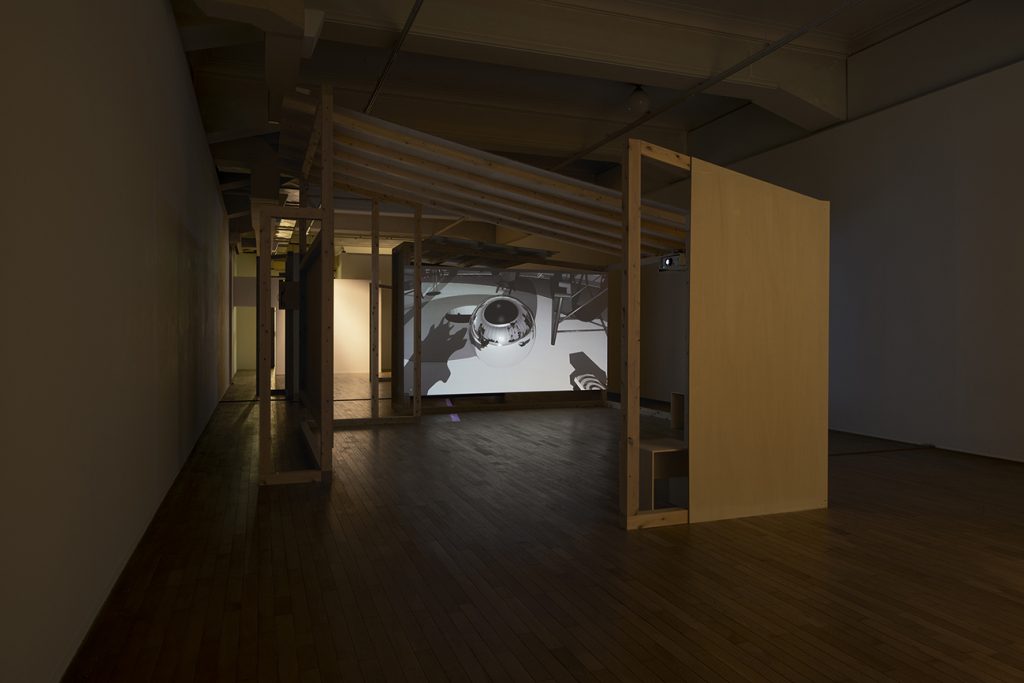
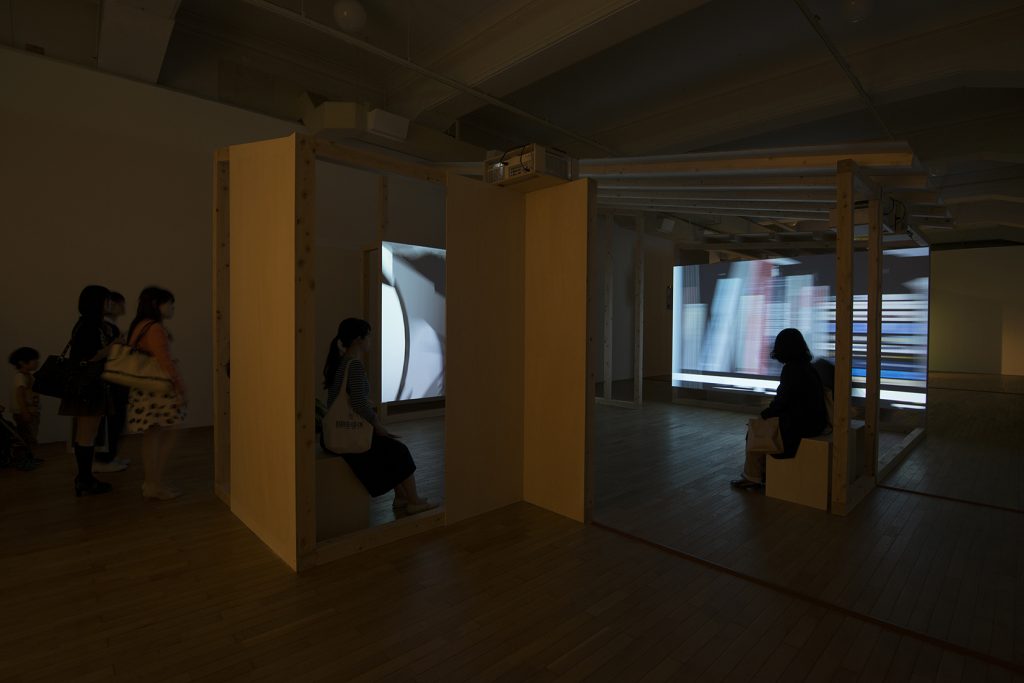
111
KØS – Museum of Art in Public Spaces, Køge, Denmark
2014-2012
Public Commission
Selected Press:
“Ann Lislegaard skaber kunstnerisk forplads til KØS”, Tabita Henriksen, kunsten.nu (2014)
“KØS – nu med udstillinger udenfor museet”, Ole Bak Jakobsen, kunsten.nu (2015)
“Plaza at KØS – Museum of Art in Public Spaces,” Steen Høyer, Landskab (2015)
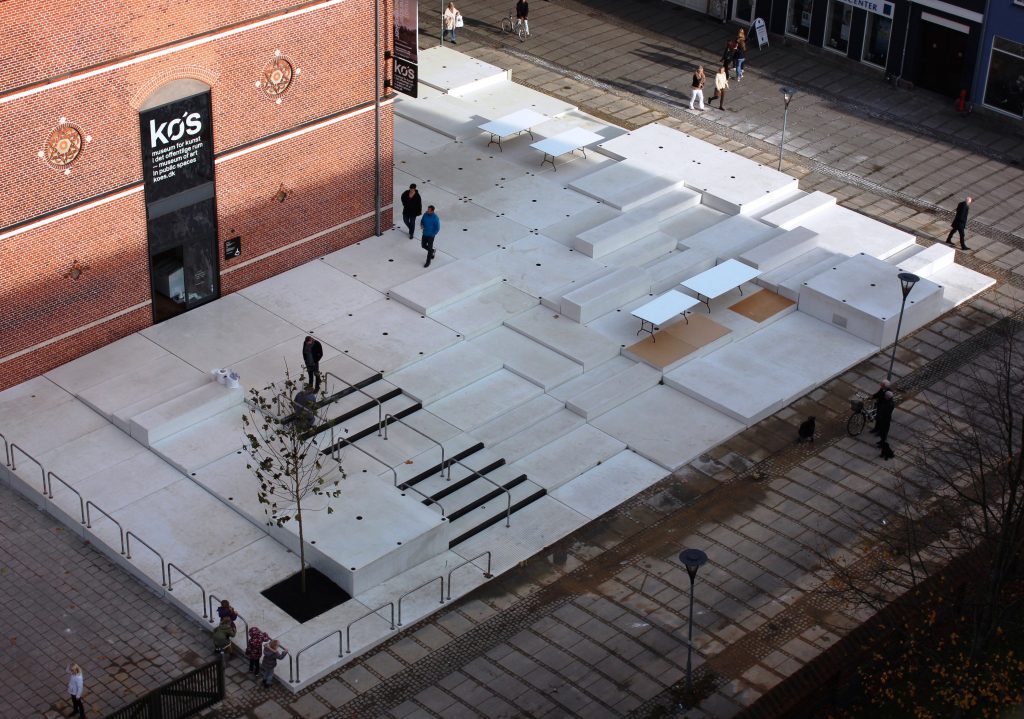
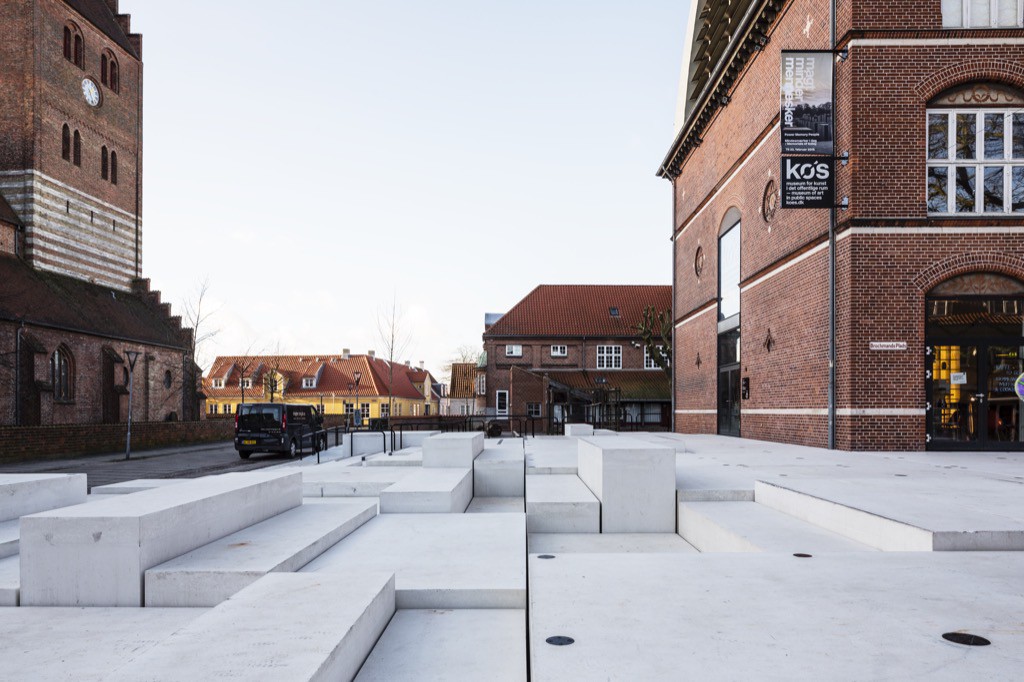

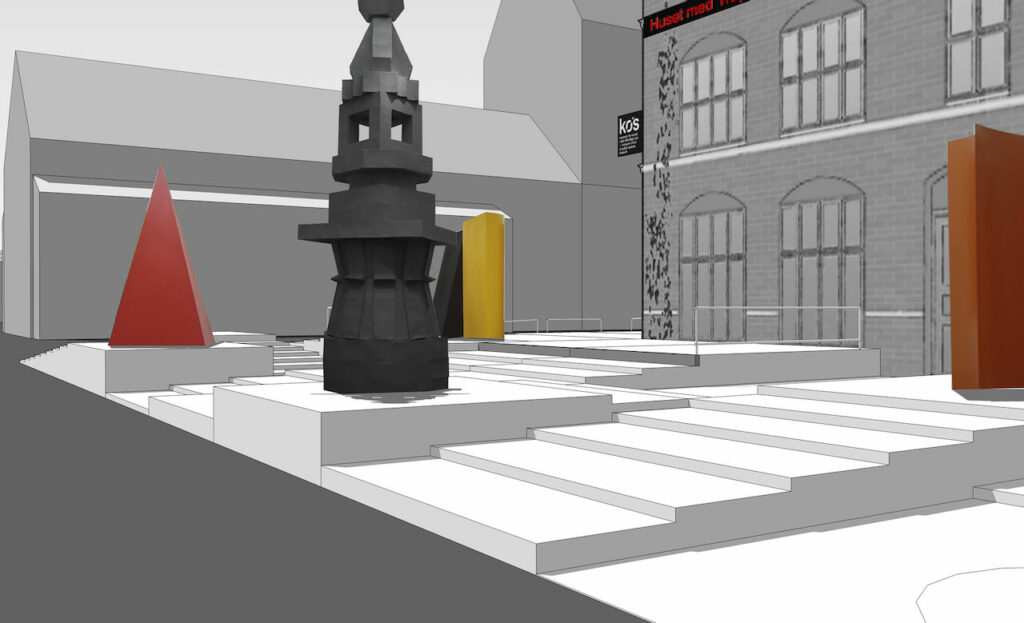
Speaking in Tongues
Galerie Paul Andriesse
November 30, 2012 – January 27, 2013
Solo Exhibition
Speaking in Tongues is a continuation of Ann Lislegaard’s exploration of science fiction as a genre and frame for critical reflection on notions of language, gender-roles, socio-political structures and the future. For Ann Lislegaard the genre of science fiction is used as a laboratory where transformative scenarios and unstable ideas can be staged and tested.
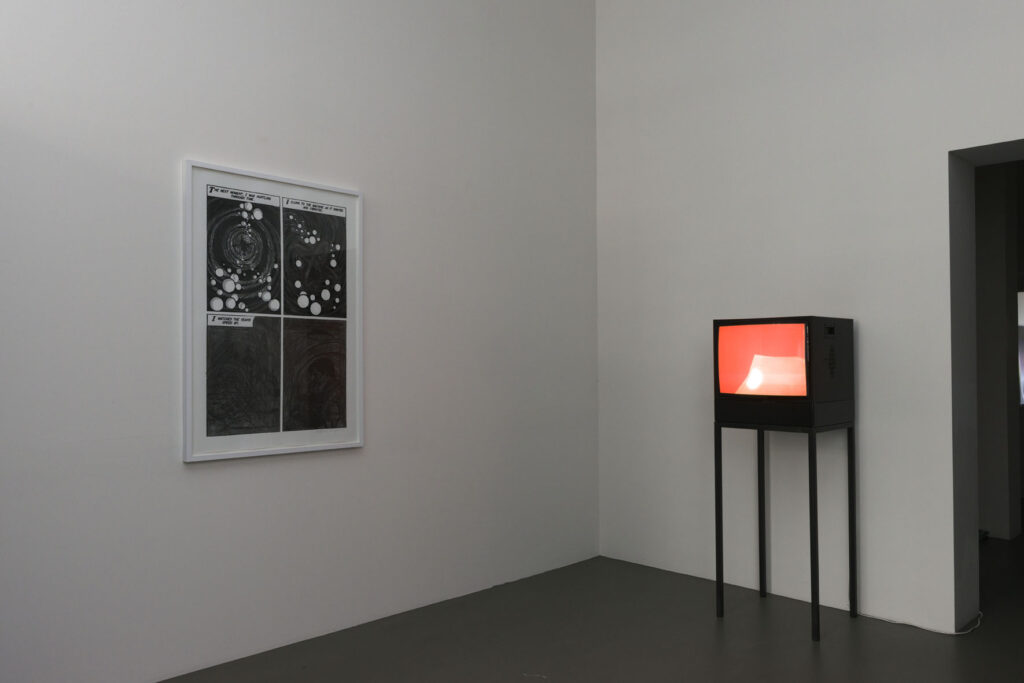
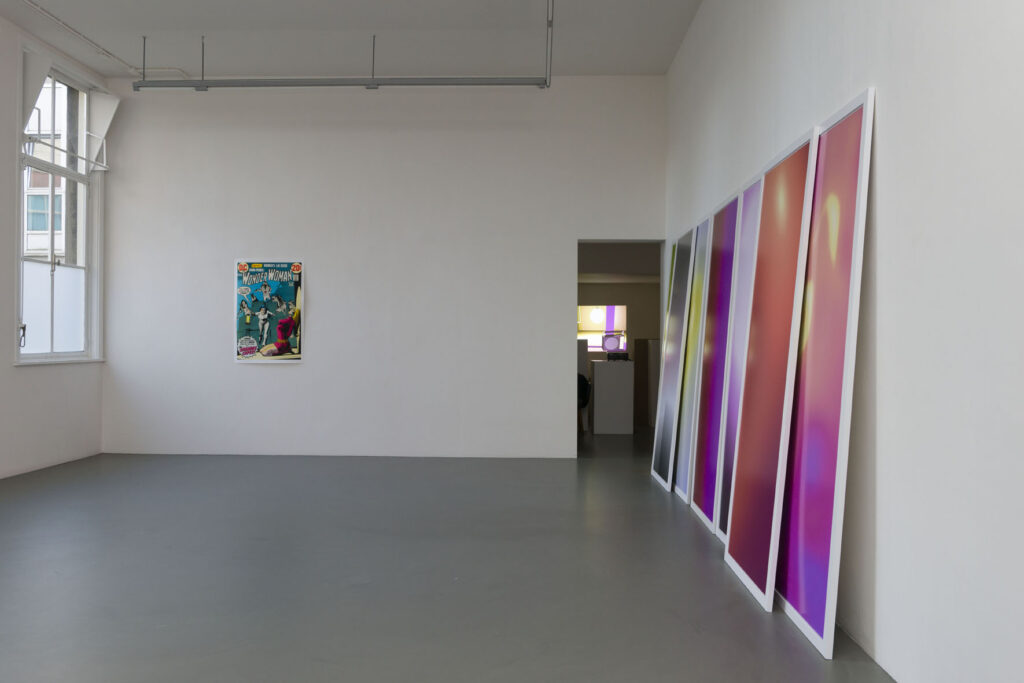
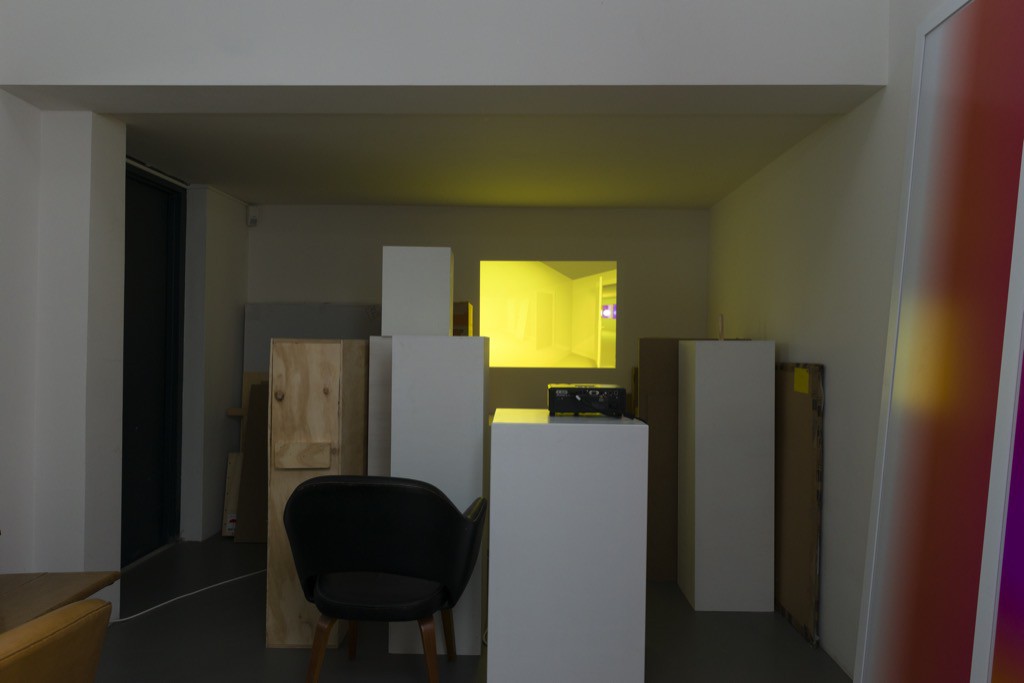
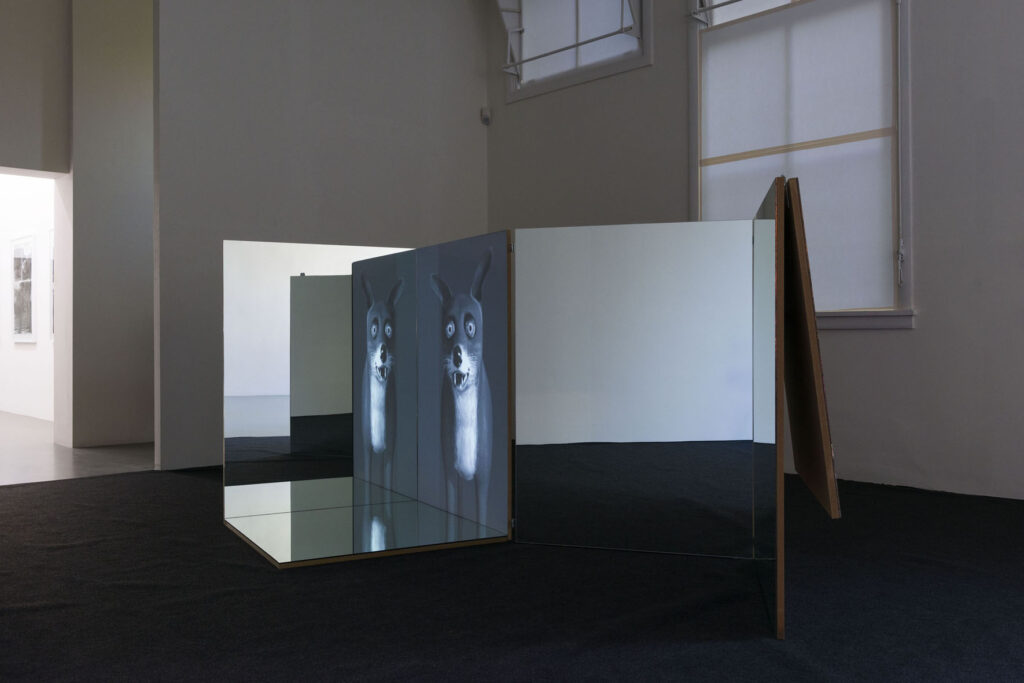
Tapping of the Fox Sisters
Marabouparken, Stockholm
11 December 2010 – 27 February 2011
Solo Exhibition
Ann Lislegaard har sedan tidigt 1990-tal byggt upp ett internationellt konstnärskap kring film-, ljud- och ljusinstallationer vars sinnesutvidgande egenskaper hör till hennes speciella kännetecken. I utställningen Haunted. Tapping of the Fox Sisters.visar vi ett urval av konstnärens science-fictioninspirerade verk som känns extra angelägna i en tid då vår politiska kultur präglas av rädsla och tillbakablickande. Utställningens titel associerar bl a till hur vi hemsöks av gamla föreställningar och till de amerikanska systrarna Fox, som med sin spiritistiska telegraf var en av grundarna till den moderna Spiritismen.
Få breda kulturyttringar har som science-fiction fått människor att begrunda komplexa frågeställningar som beroendeförhållandet mellan dåtid, nutid och framtid, vår sexualitet och vår rädsla för det som är främmande. Ann Lislegaard använder sig av science-fictiongenrens strategi att dra in betraktaren i en alternativ verklighet som är både familjär och samtidigt helt främmande. Hon intresserar sig för det författaren J.G. Ballard kallat det ’psykologiska rummet’ – ett rum mellan människans perception och kognition där våra förhållningssätt formas och omförhandlas. Inom science-fiction låter man ofta dessa mentala landskap skapa förutsättningar för en fiktiv värld som bildar kontrast till våra invanda föreställningar. I utställningens olika verk refererar konstnären till betydelsebärande teman och bilder i ikoniska science-fiction romaner och filmer som Crystal World av J.G. Ballard, Left Hand of Darkness av Ursula K. Le Guin, 2001: A Space Odysseyav Stanley Kubrick och Närkontakt av 3:e graden av Steven Spielberg.
Verket Crystal World (After J.G. Ballard) från 2006 är en projicerad 3D animation där vi rör oss genom ett konstruerat universum av arkitektoniska strukturer och en djungel som långsamt kristalliseras. Titeln på verket är hämtat från J.G. Ballards roman Crystal World från 1966 där en geologisk kristalliseringsprocess utgör ett centralt tema. Förödande vacker sprider sig kristallisering som en glittrande istid av juveler där dess attraktionskraft paradoxalt nog tycks ligga i den fysiska och mentala frysningen av människor, byggnader och natur. I ljudverket Science Fiction_3112 (after 2001: A Space Odyssey by Stanley Kubrick) iscensätter Ann Lislegaard en radikal manipulering av tiden och rummet genom att speeda upp, sträcka ut och komprimera denna klassiska sci-fi films ljudspår från 141 till 8 min. Olika tidsplan blir parallella verkligheter i Naked Future – ett nytt performance- och ljudverk producerat för utställningen på Marabouparken, där operasångerskan Henriikka Gröndahl improvisationssjunger ett utdrag ur Joanna Russ feministiska science-fictionroman, The Female Man från 1975.
Med ljud, ljus och rörlig bild sugs vi i utställningen in i ett komprimerat, Lislegaardskt universum i ständig transformation, där våra förhållningssätt till rummet, tiden, sexualiteten och det okända omprövas.
Selected Press:
“Kultur: Vitt mot Svart som Science Fiction,” Frans Josef Petersson, Aftonbladet (2011)
“13 desember 2011”, Karl Holmqvist, Kunstkritik.com (2011)
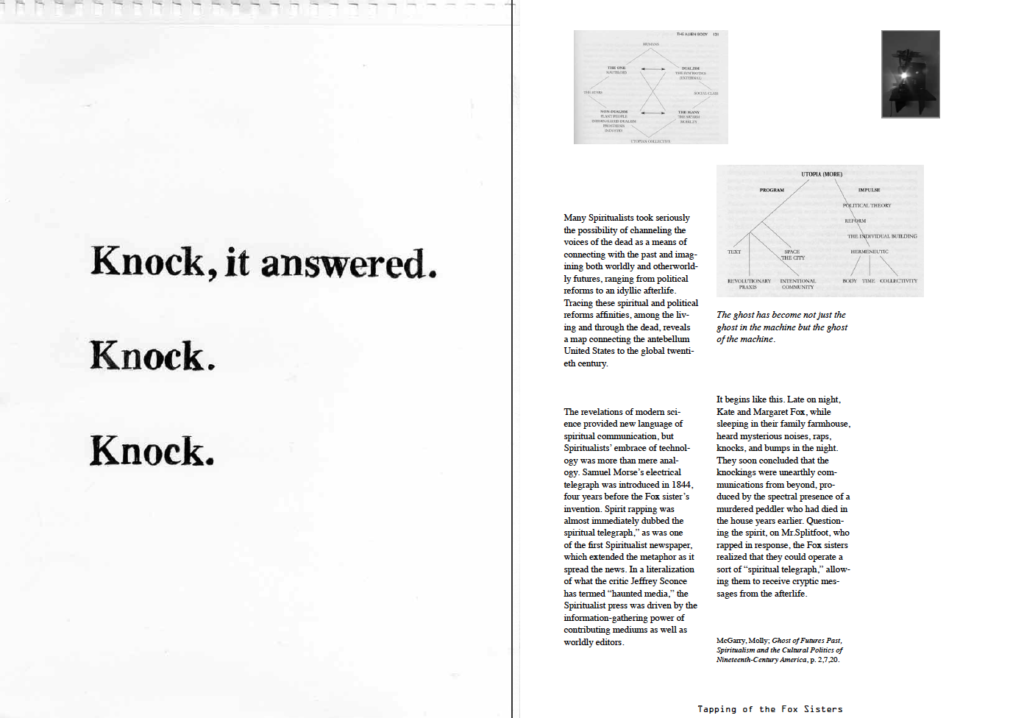
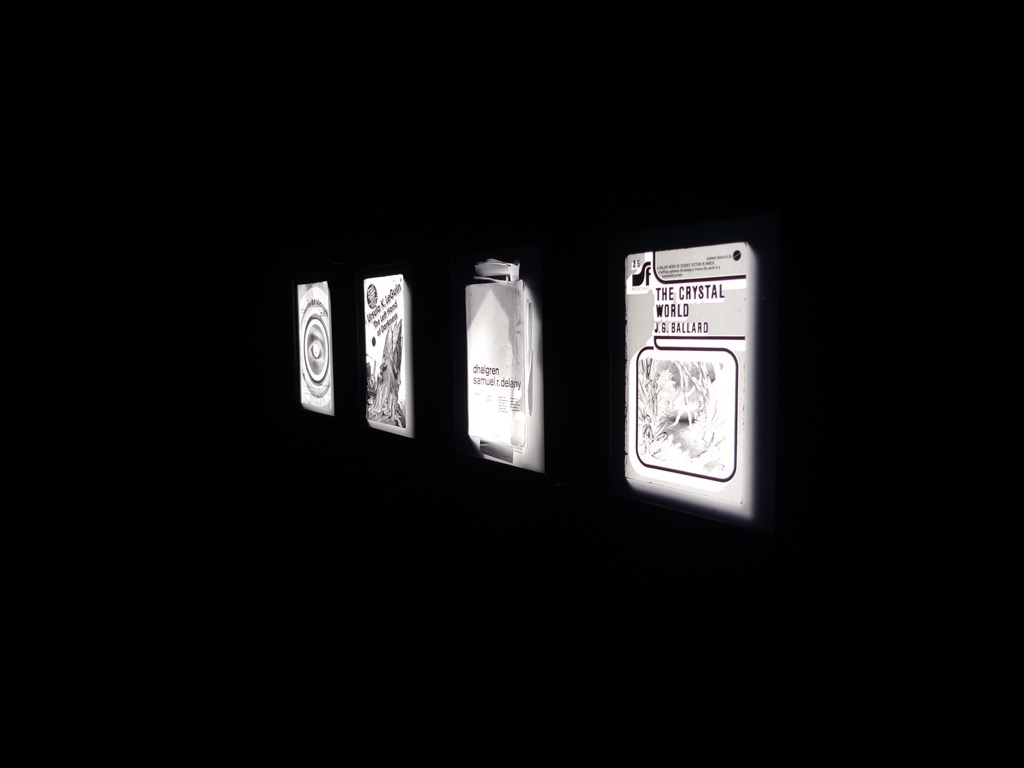
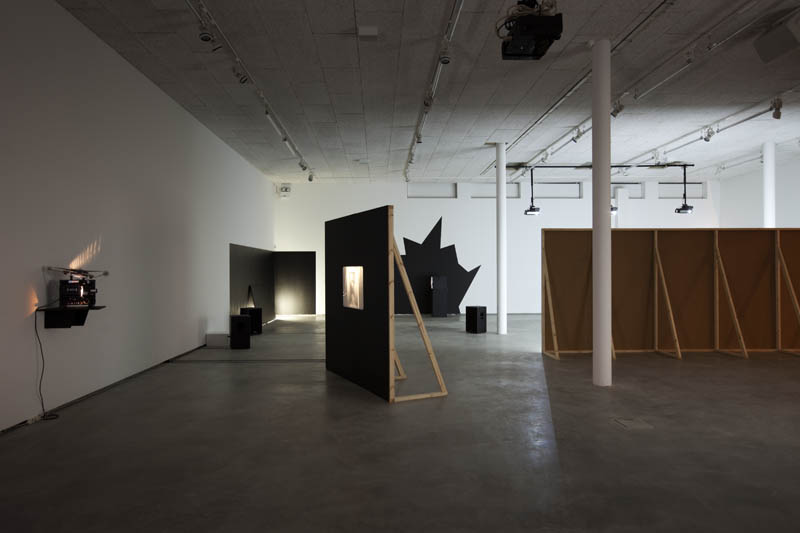
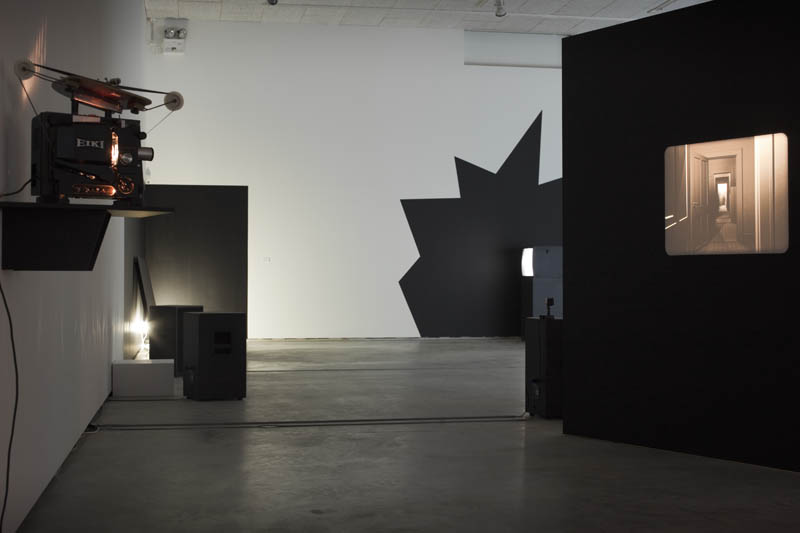
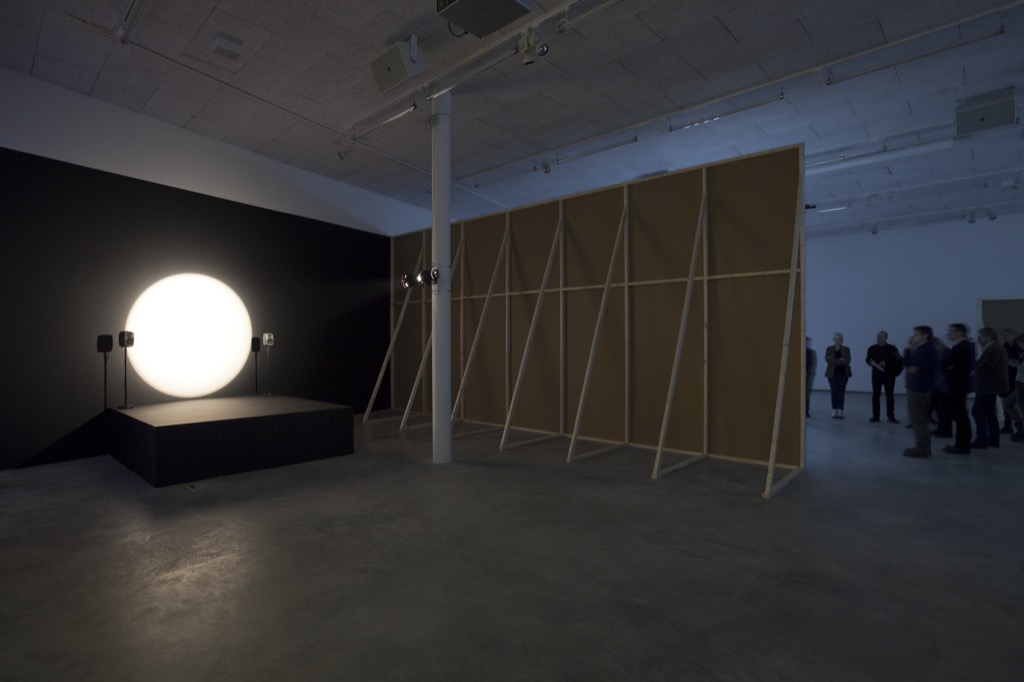
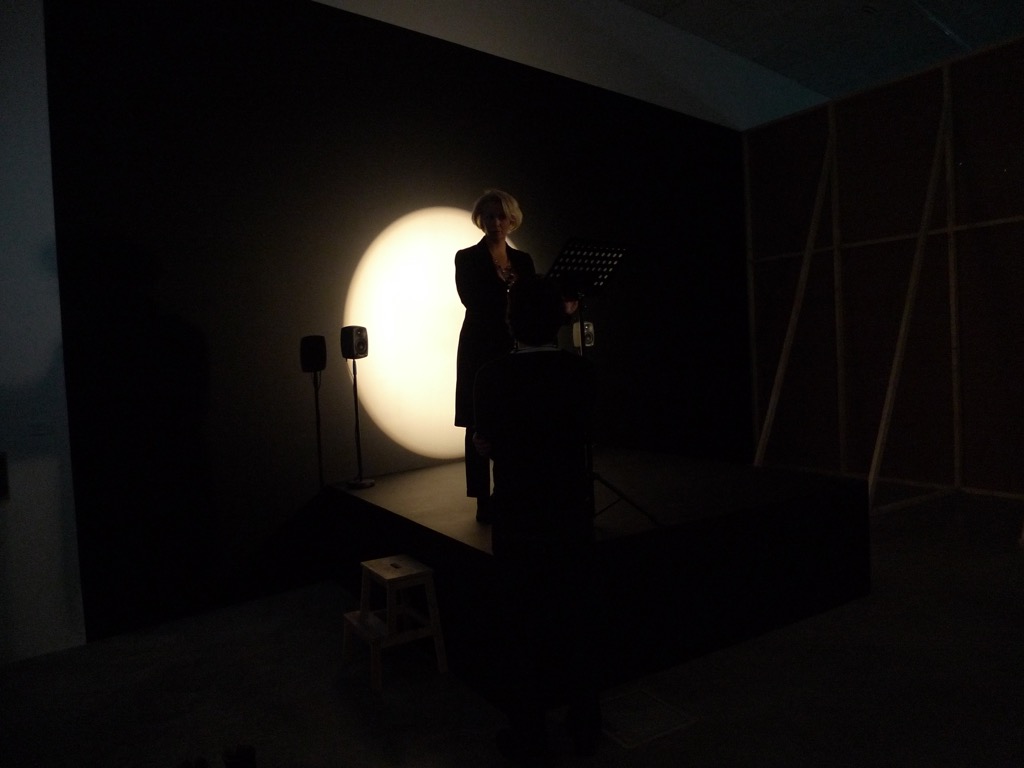
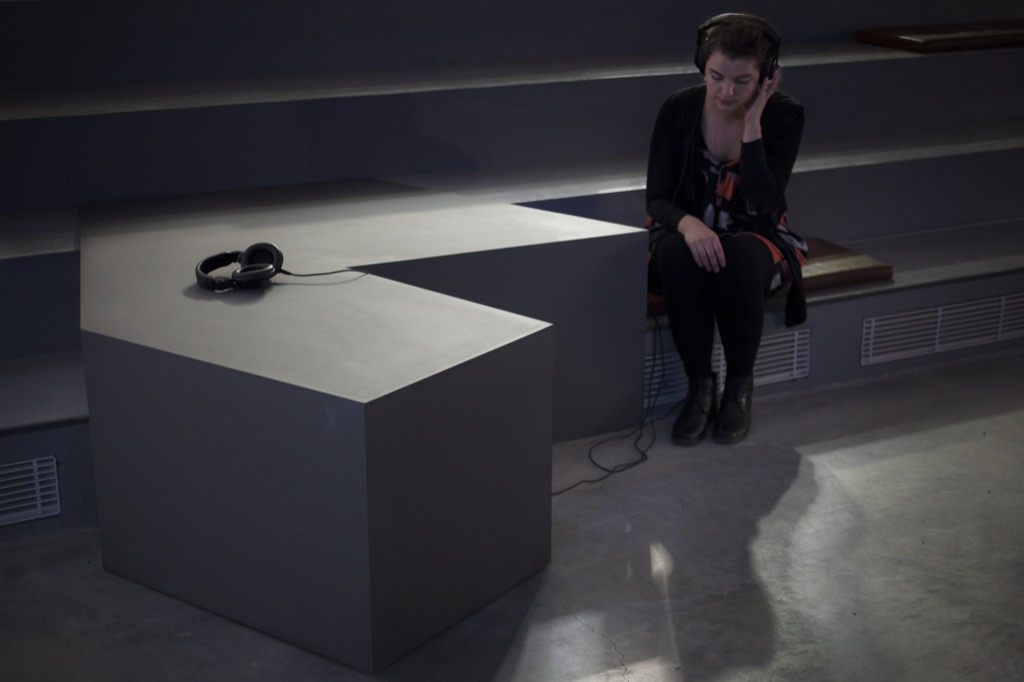
What if
MOCAD – Museum of Contemporary Art Detroit
September 11 – December 27, 2009
Solo Exhibition
The exhibition provides a comprehensive look at artist Ann Lislegaard’s (b. 1962) extended investigation of the science fiction genre. The show comprises six major installations along with other works that explore notions of time, space, and place. In her work the artist employs sound and light architecturally to reflect on and investigate how we perceive and move through the physical and the psychological environments that we inhabit.
Lislegaard’s trilogy of video works, accompanied by sound installations and several site-specific sculptural works, unite elements of recent art history with themes rooted in science fiction literature. Lislegaard reinterprets these varied sources to create experiences within imagined places that lie firmly outside of logic and the habitual.
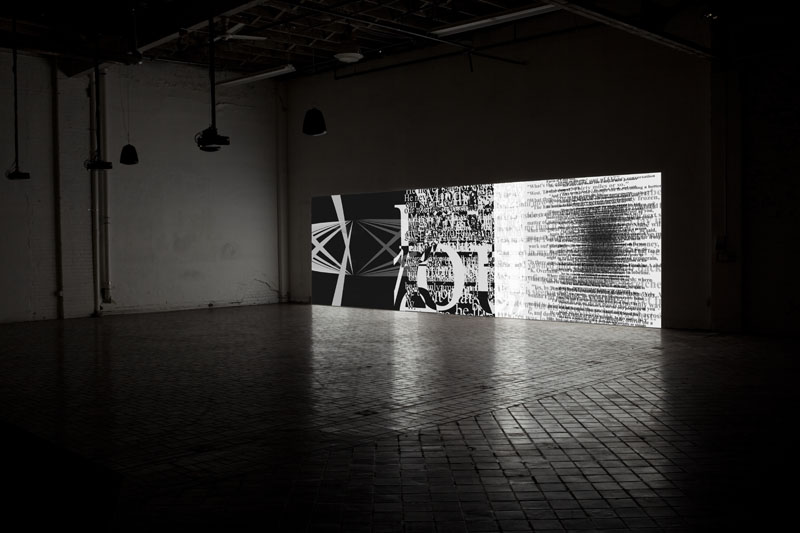

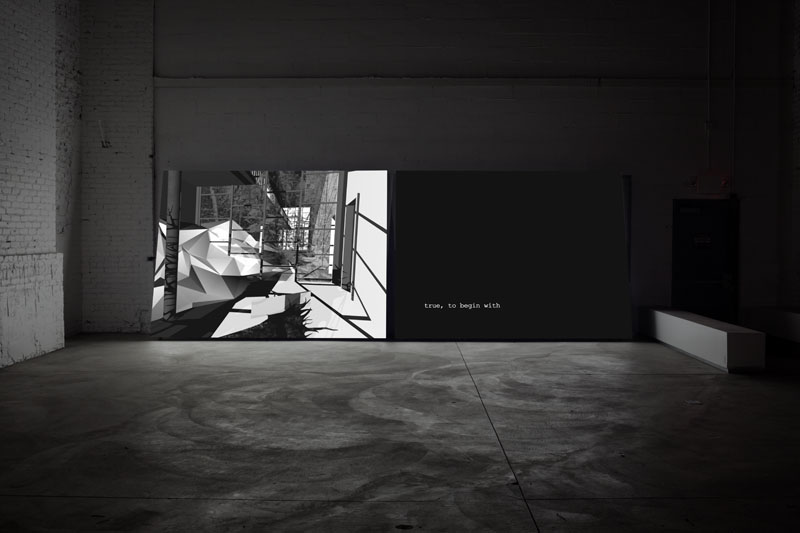
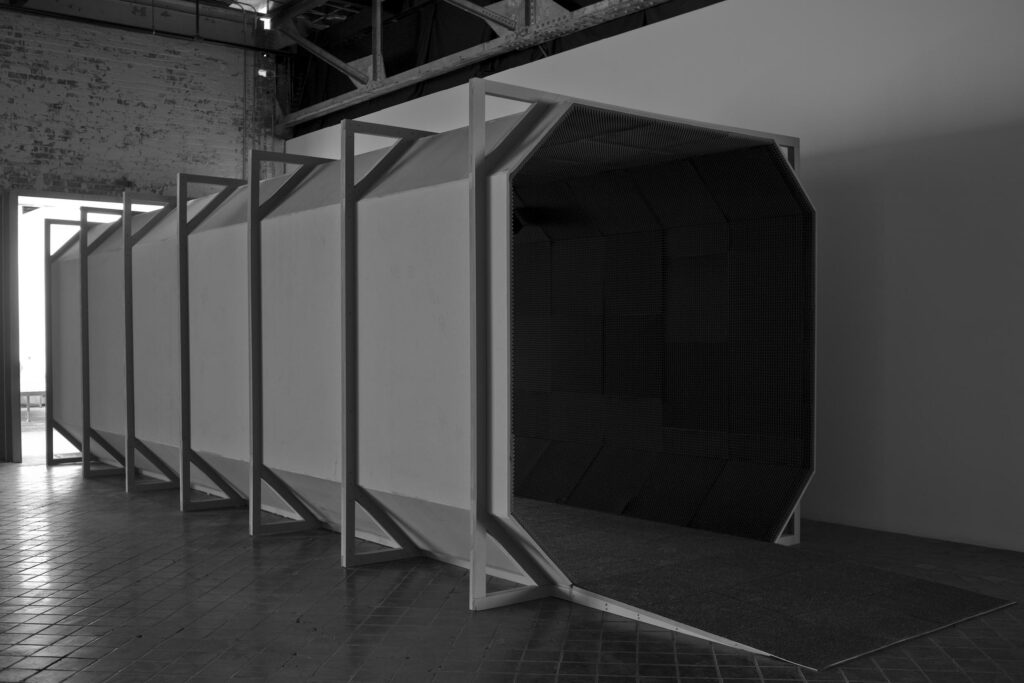
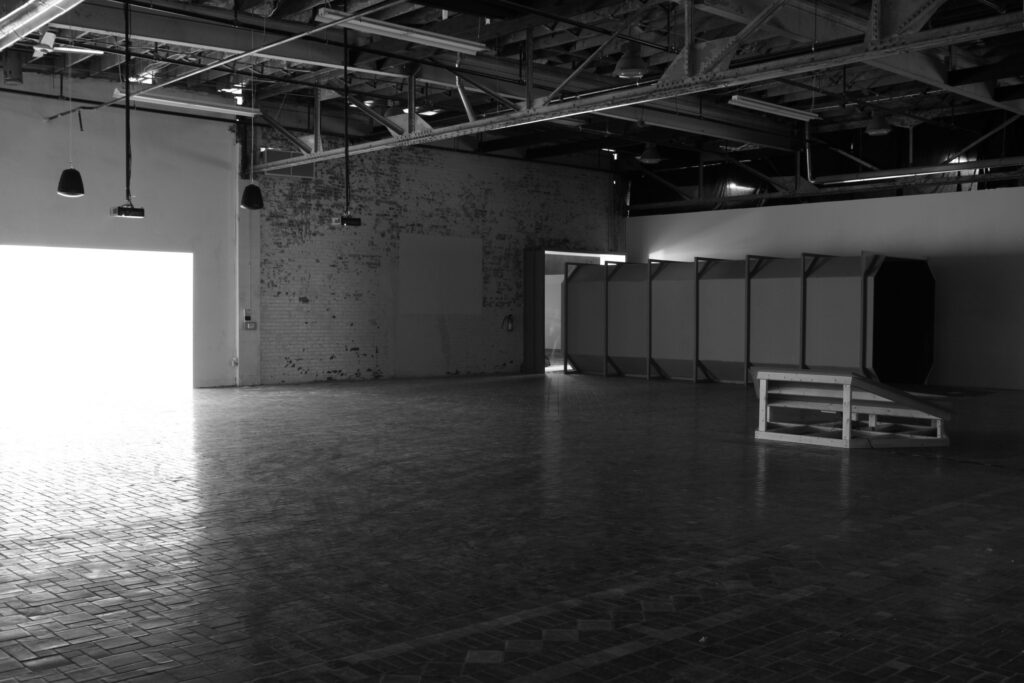
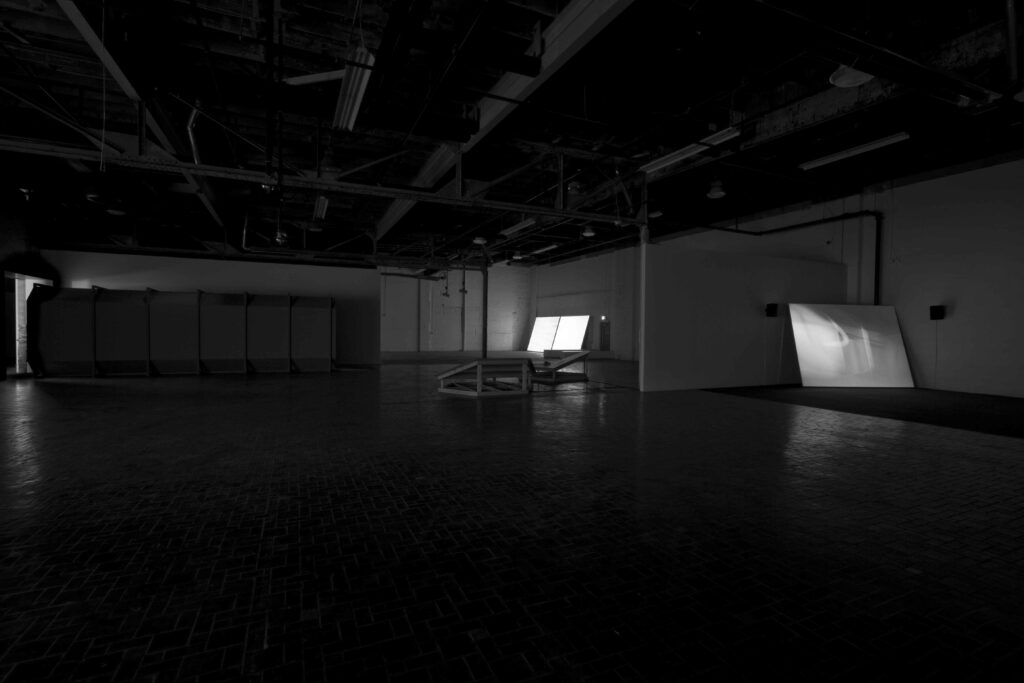
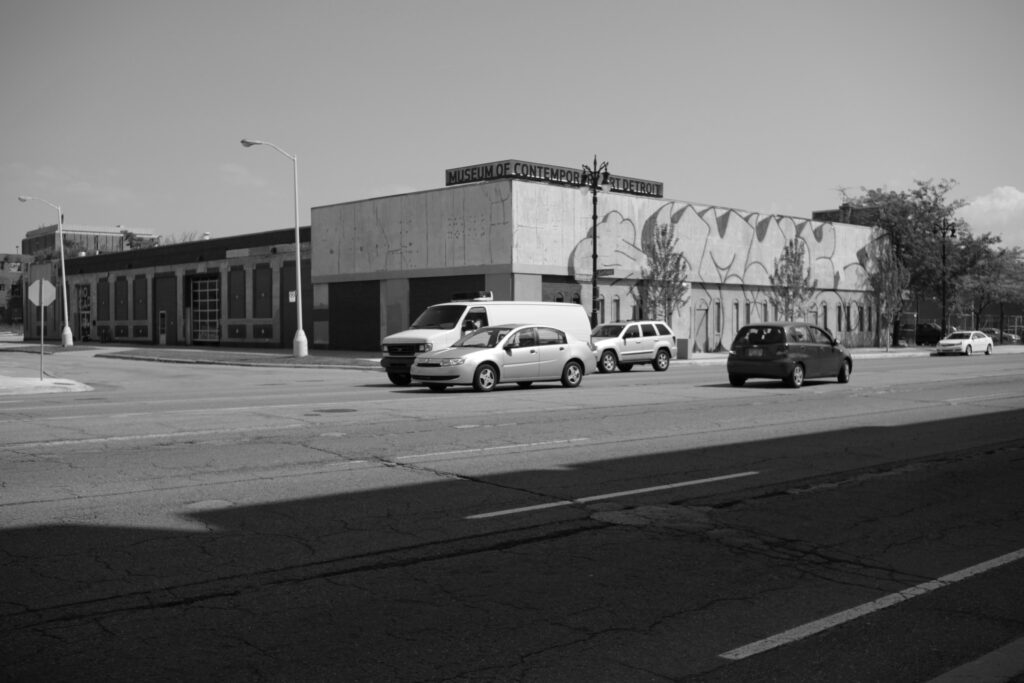
Ann Lislegaard, Thomas Bayrle and Ultra-red
May 28 – August 2, 2009
Raven Row, London
Curated by Alex Sainsbury and Alice Motard
Solo Exhibition
[…] Ann Lislegaard’s recent work describes a universe that hovers like Thomas Bayrle’s between utopia and dystopia, and refracts political reality through the imaginary. Her animation and sound works in the first and second floor galleries reduce classic works of science fiction to bare components in order to depict geographies that are simultaneously mental and physical.
Selected text from the Exhibition Guide:
“Elasticity: On Nervousness and Vibration” by Lars Bang Larsen
